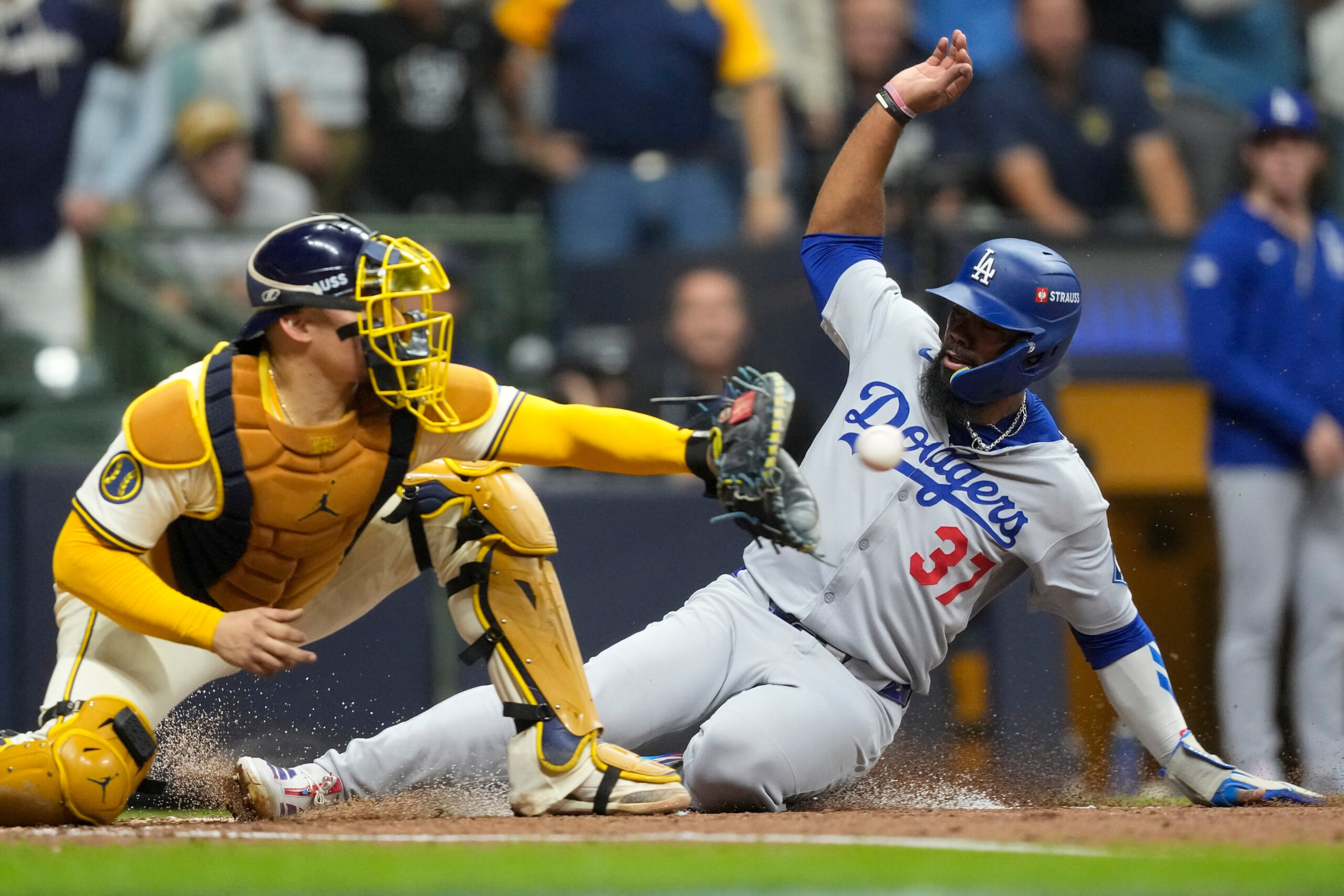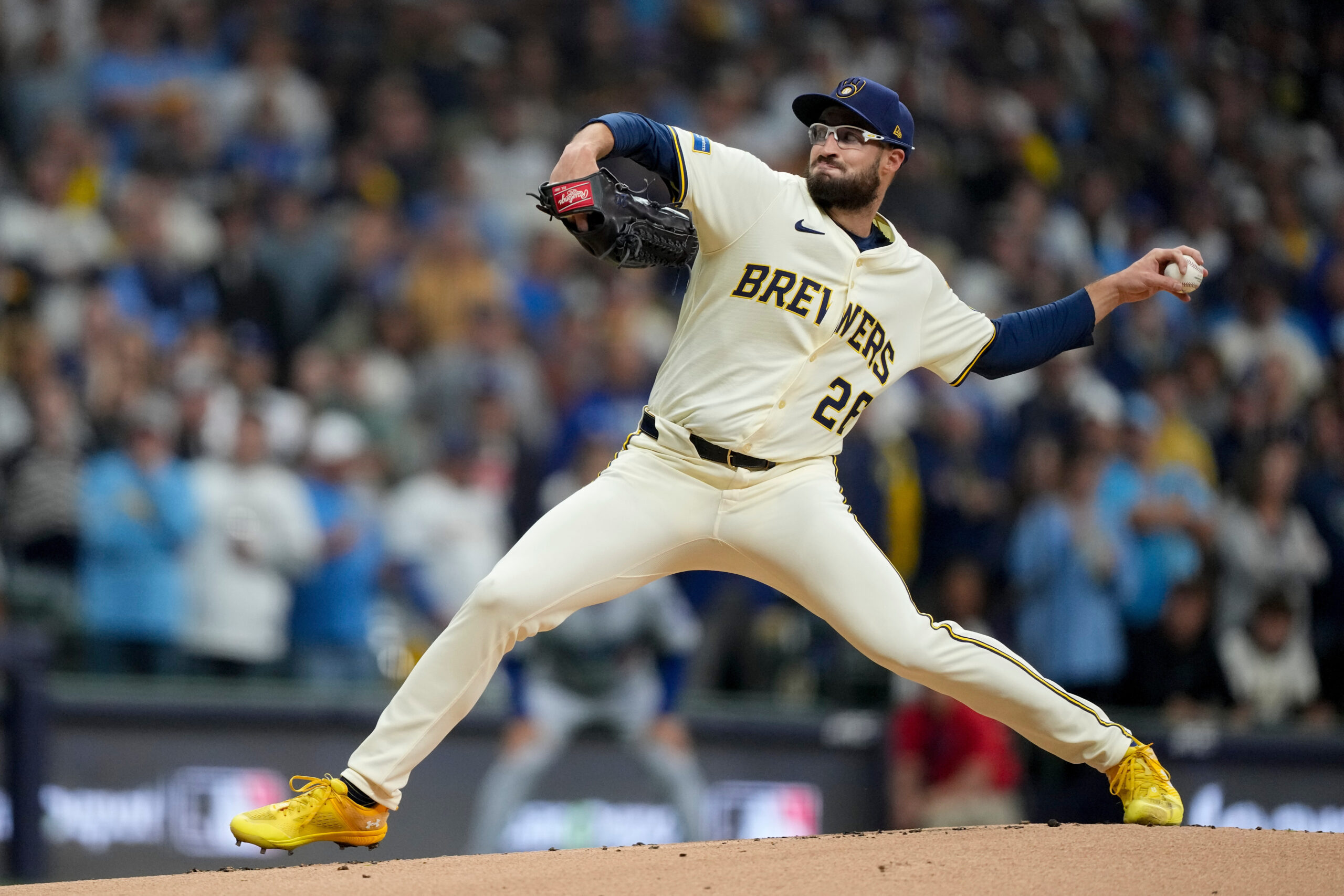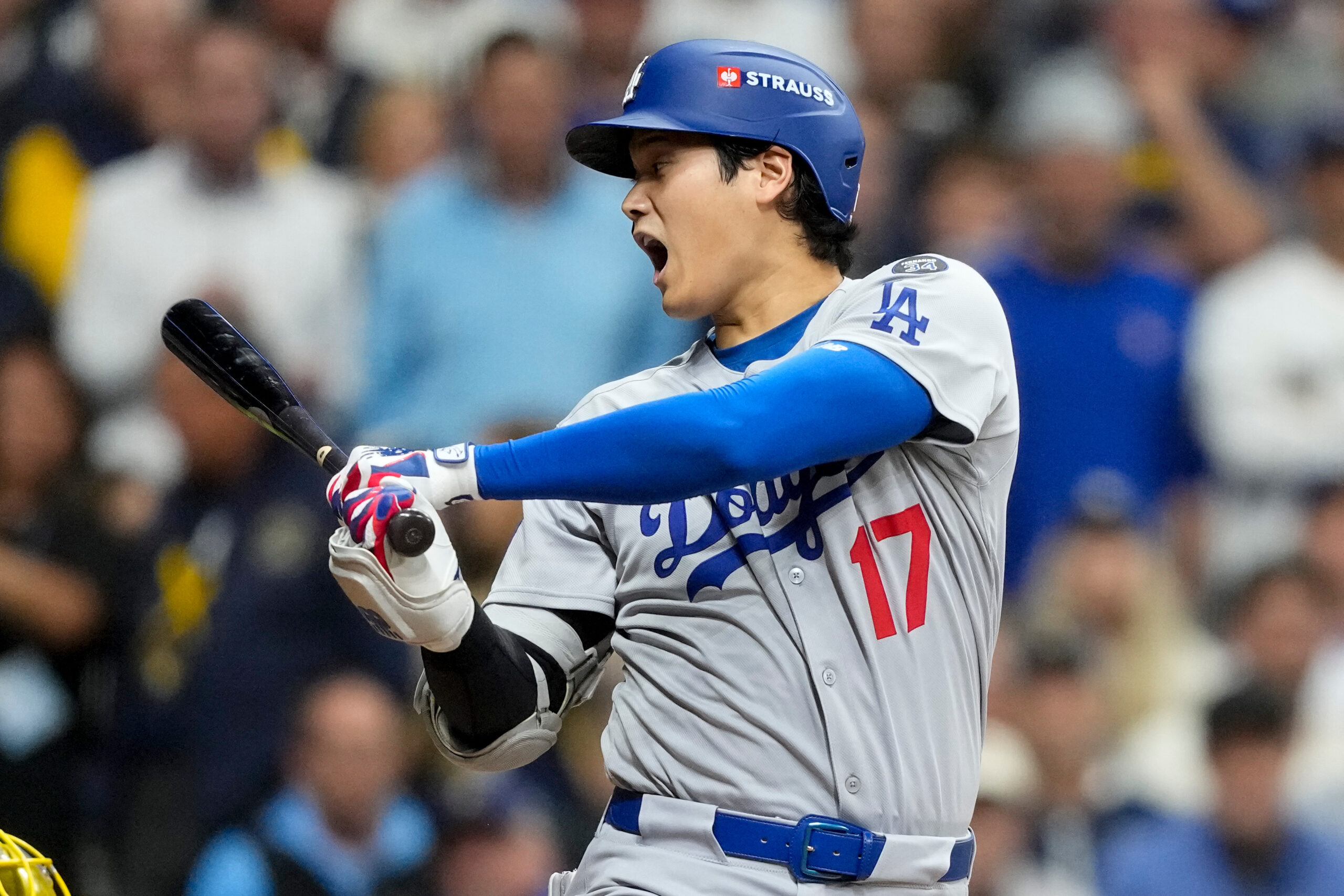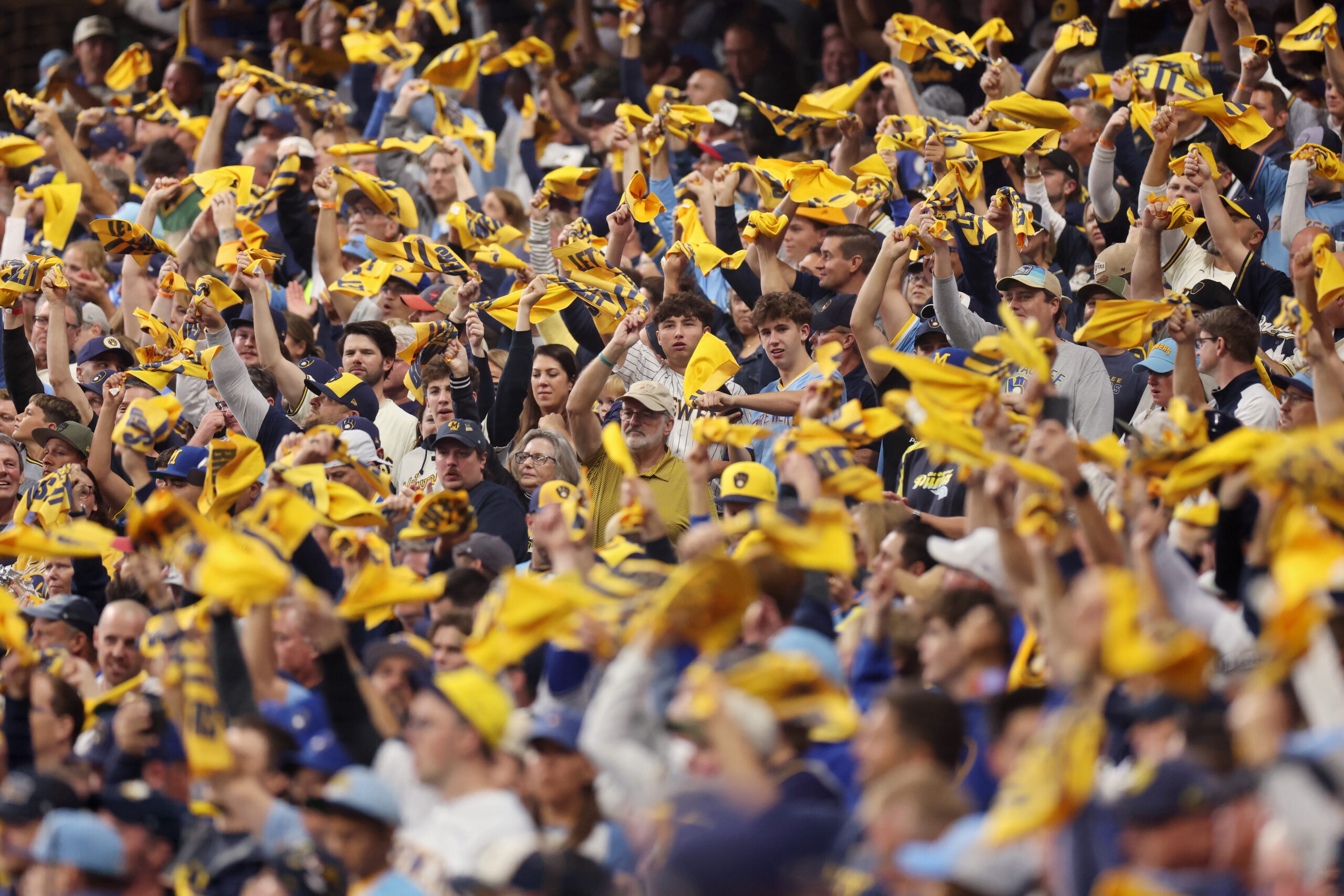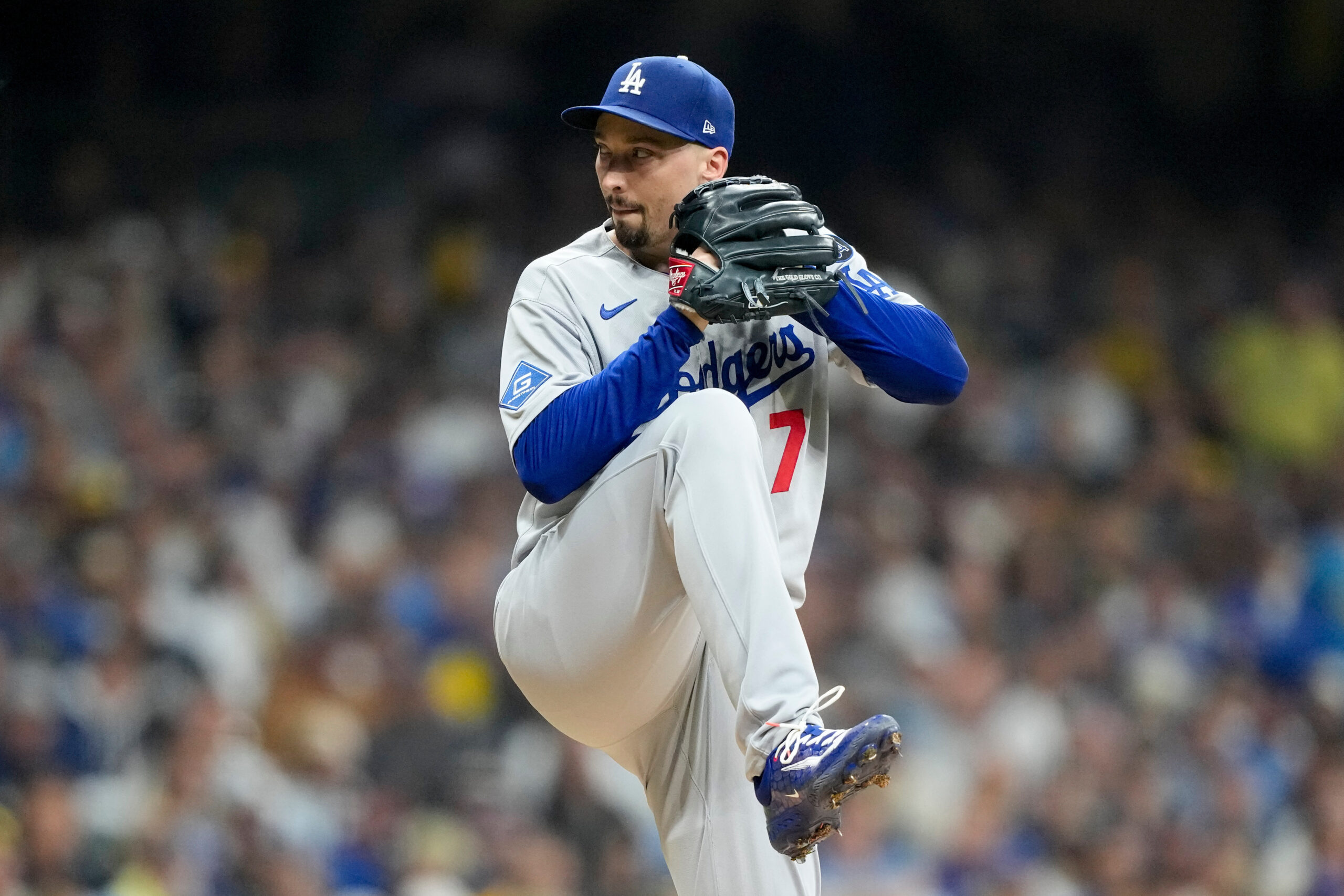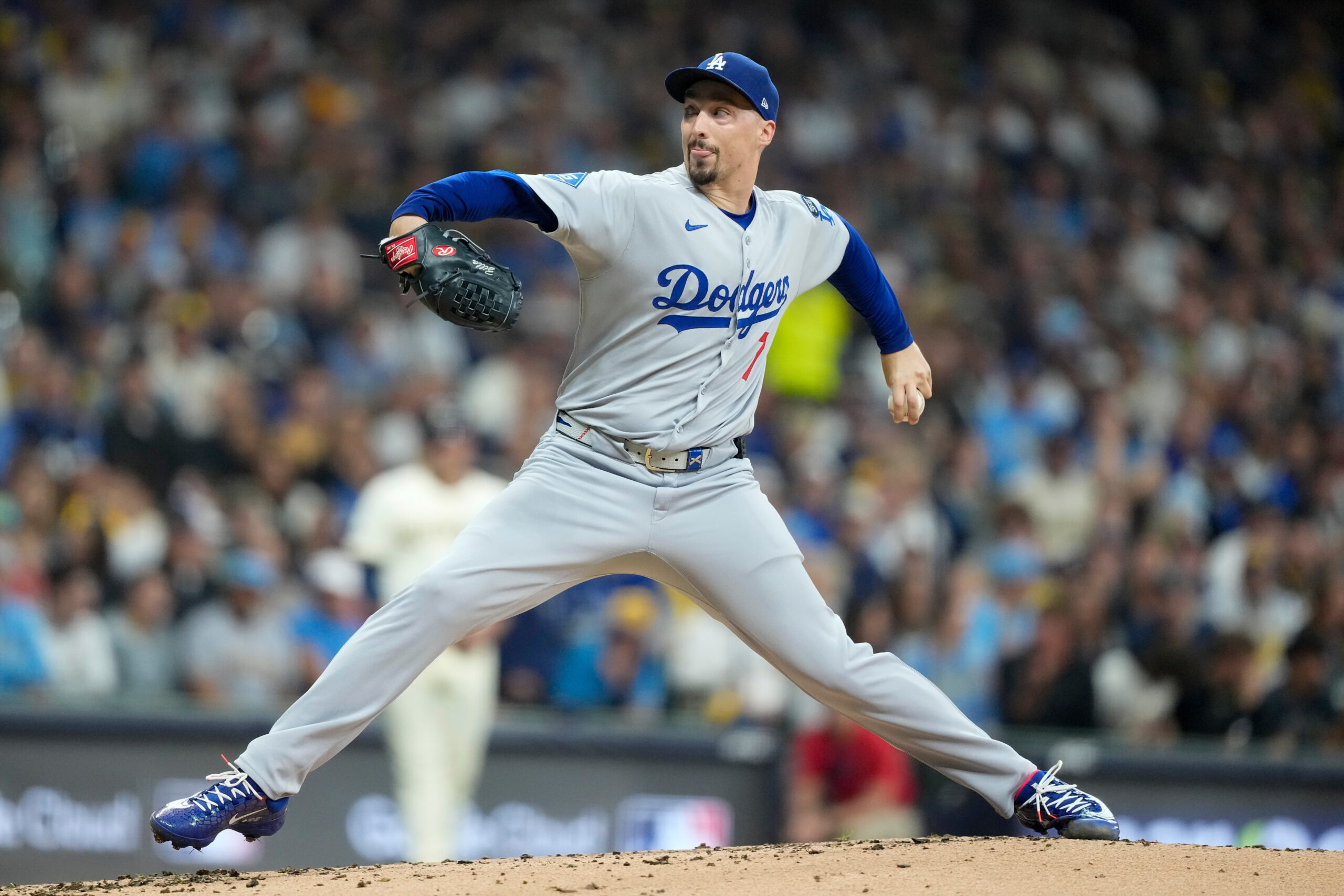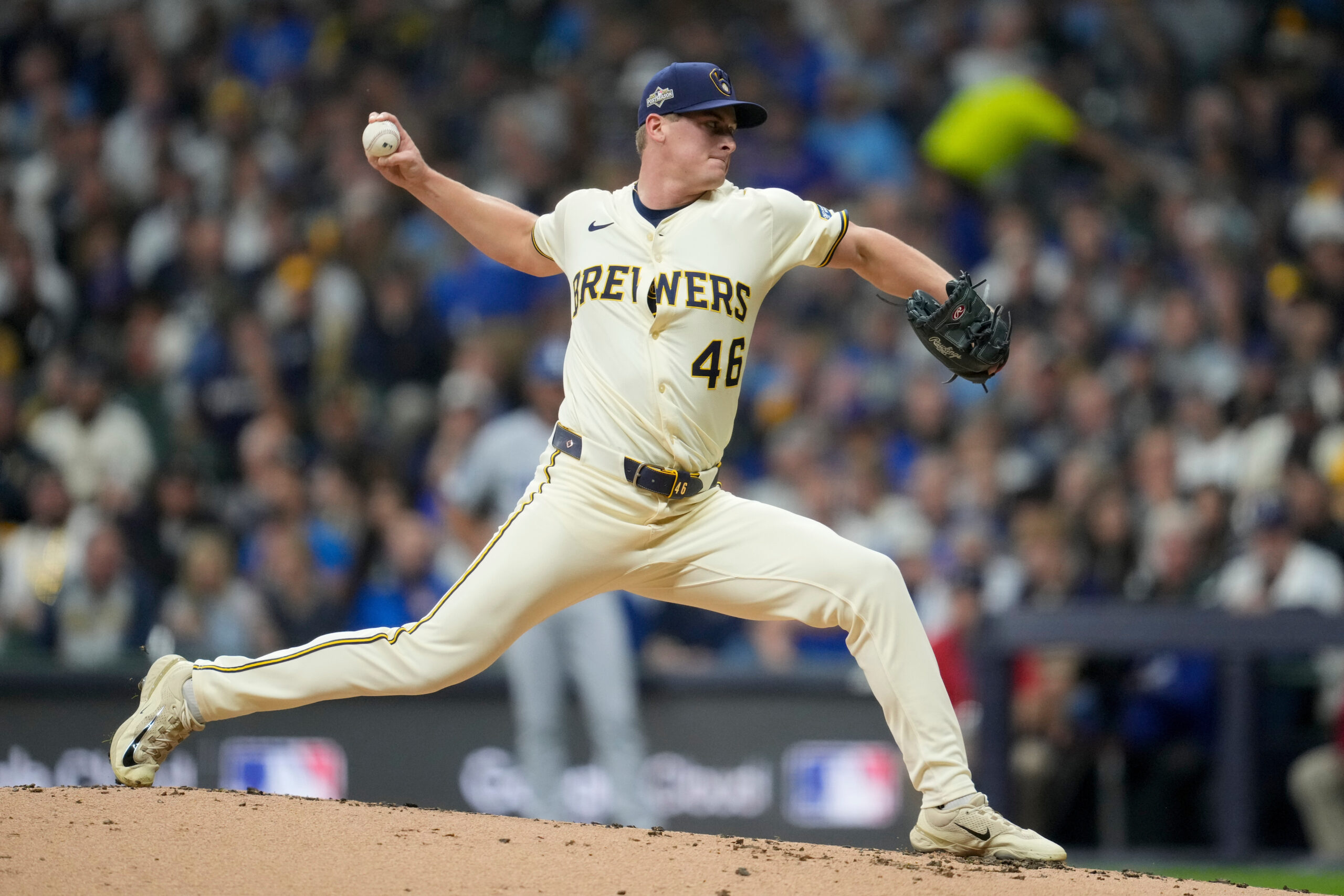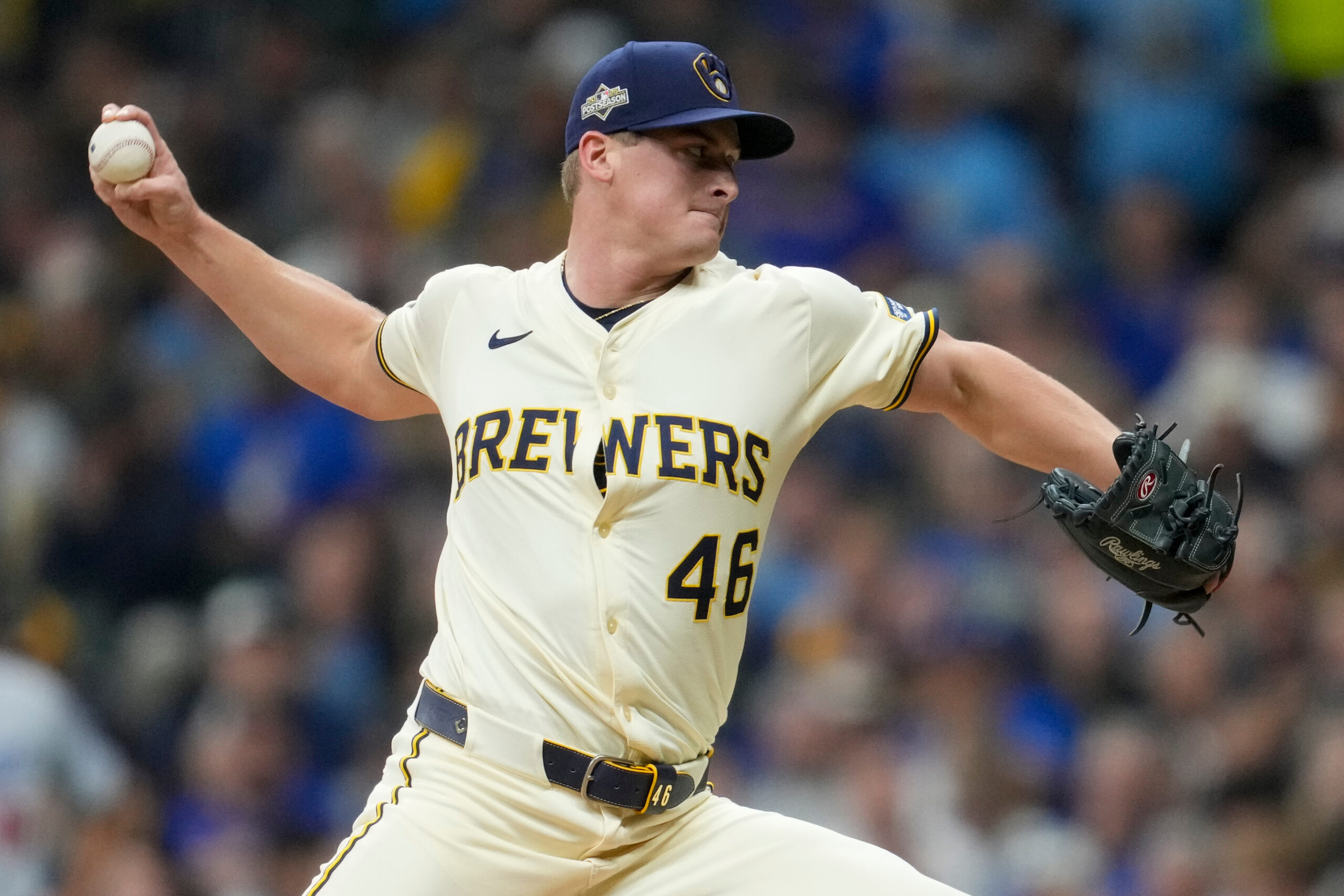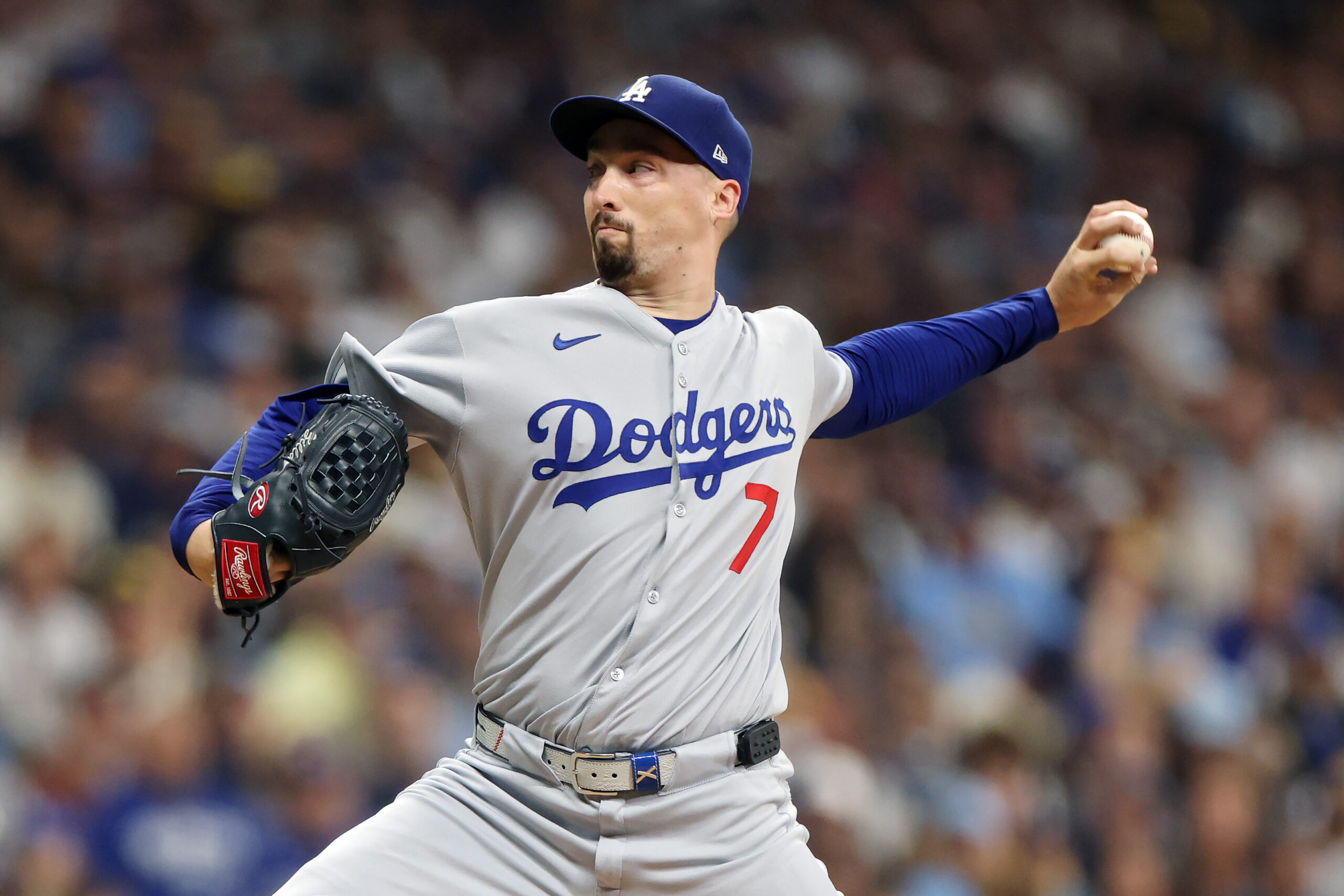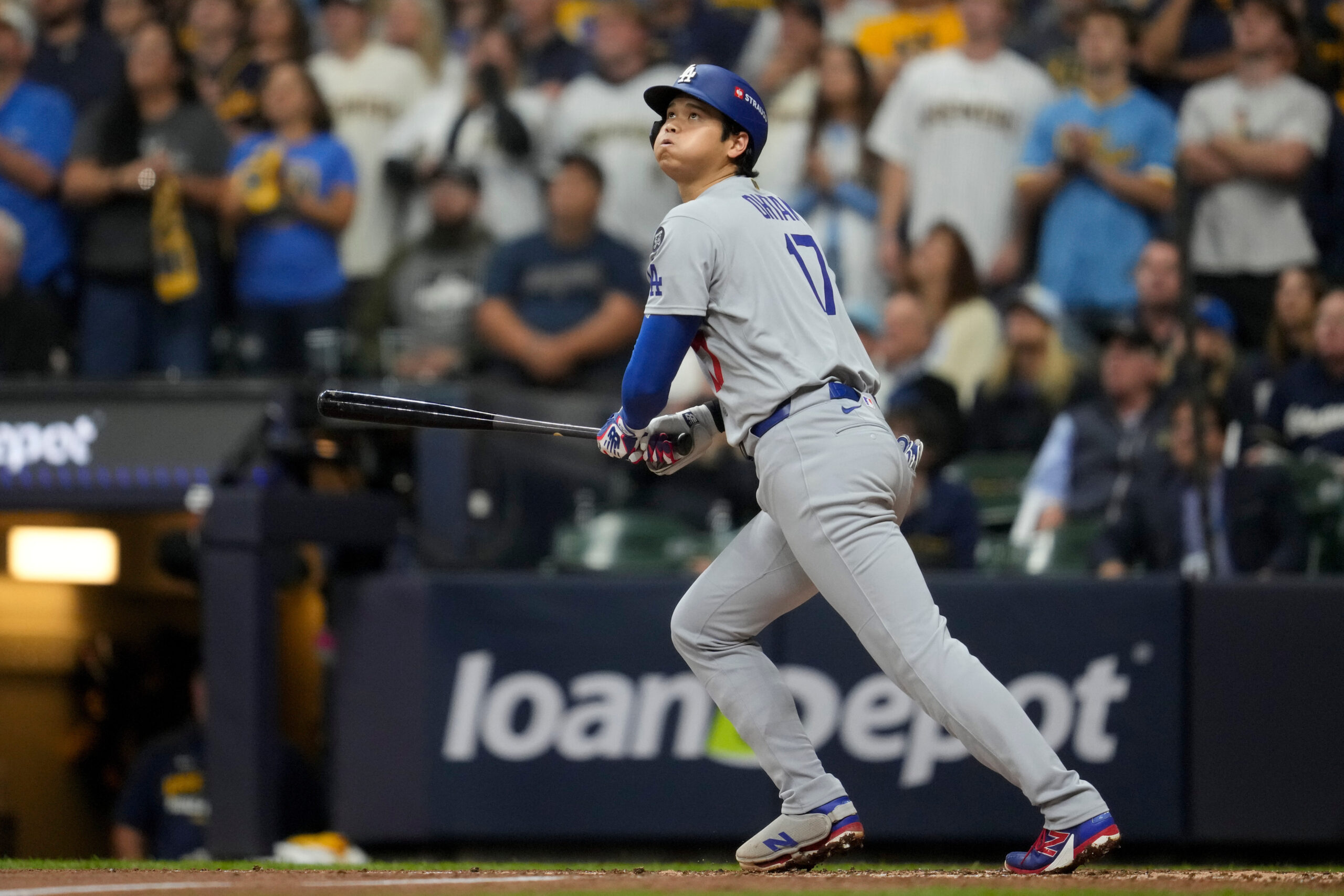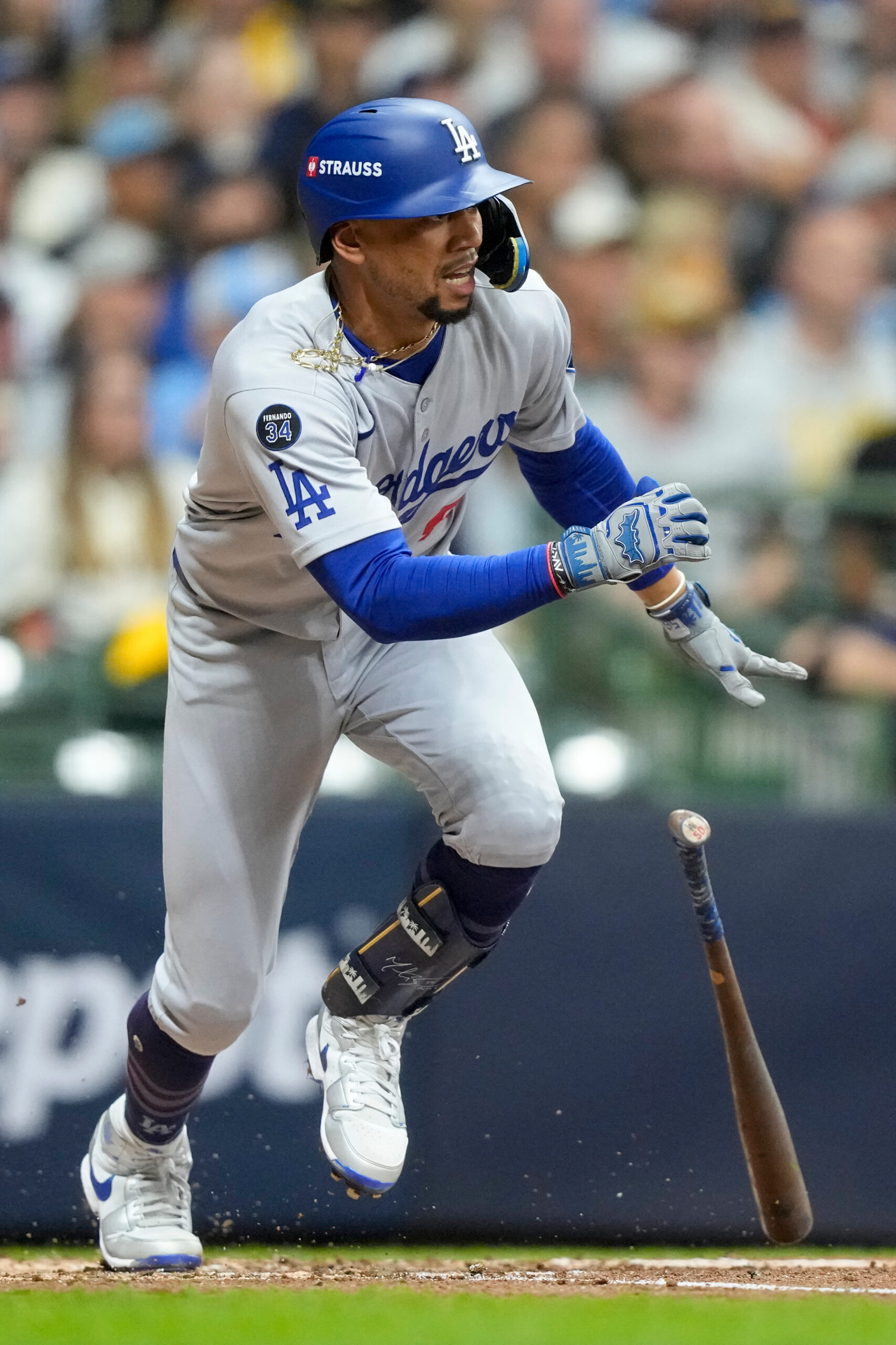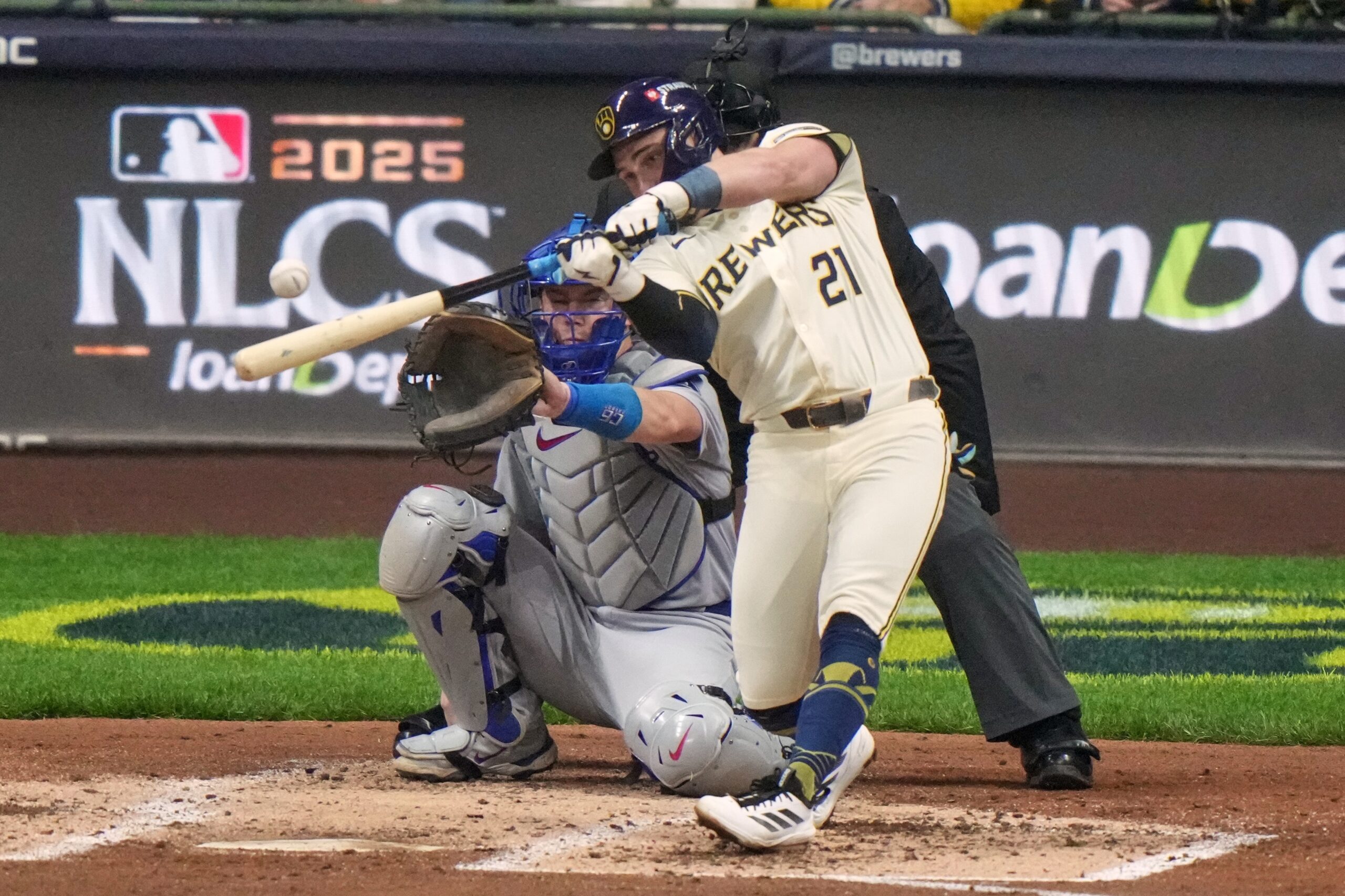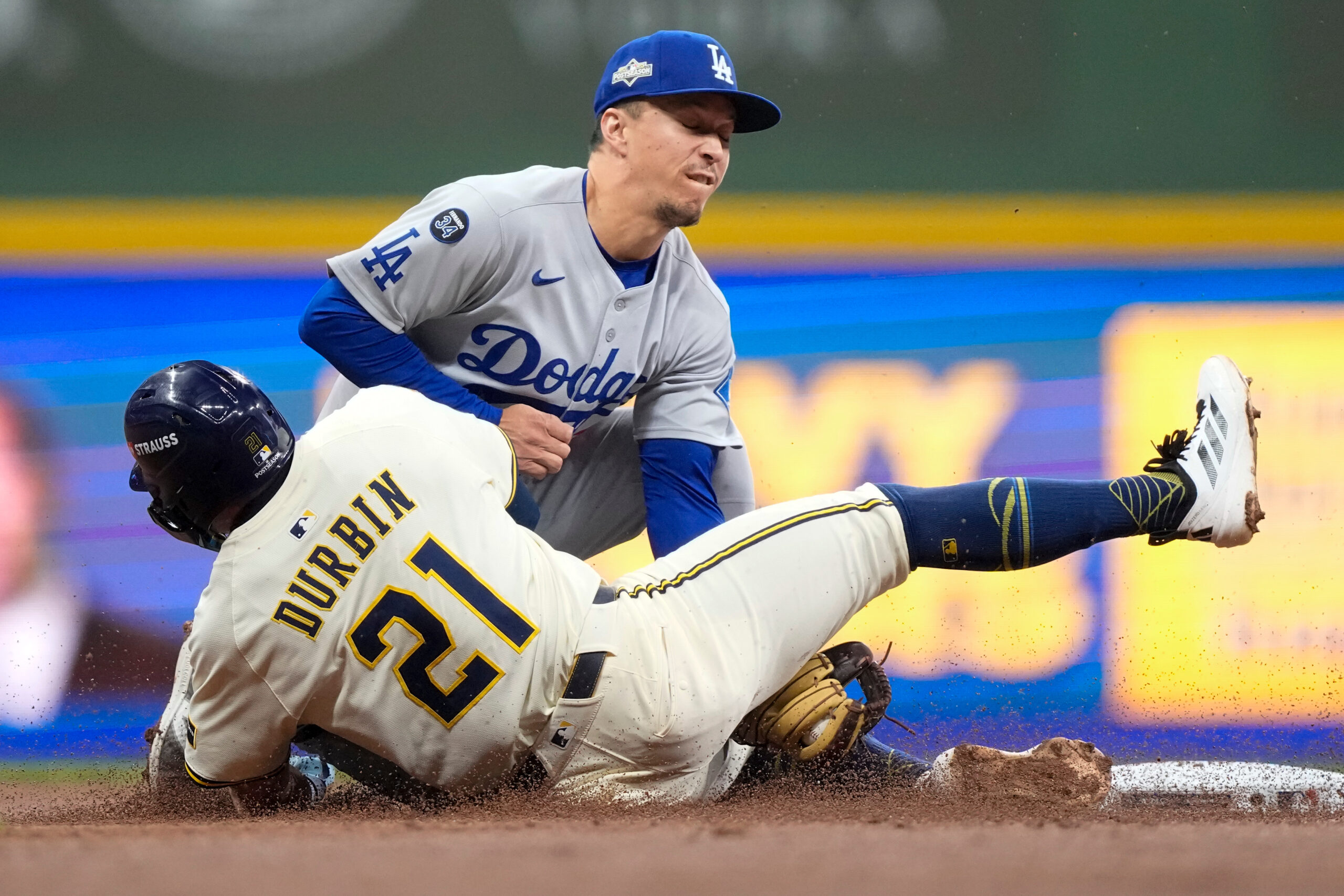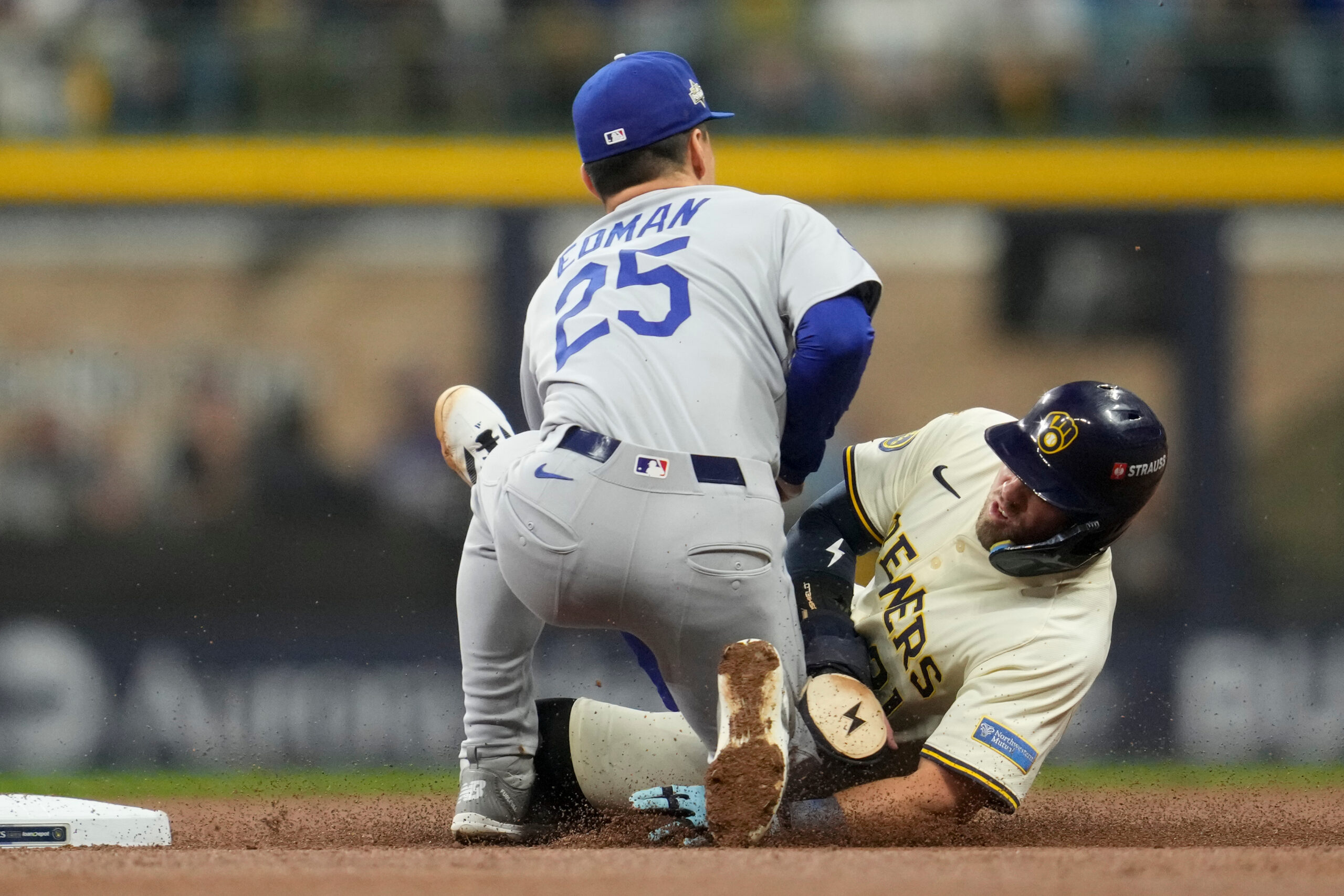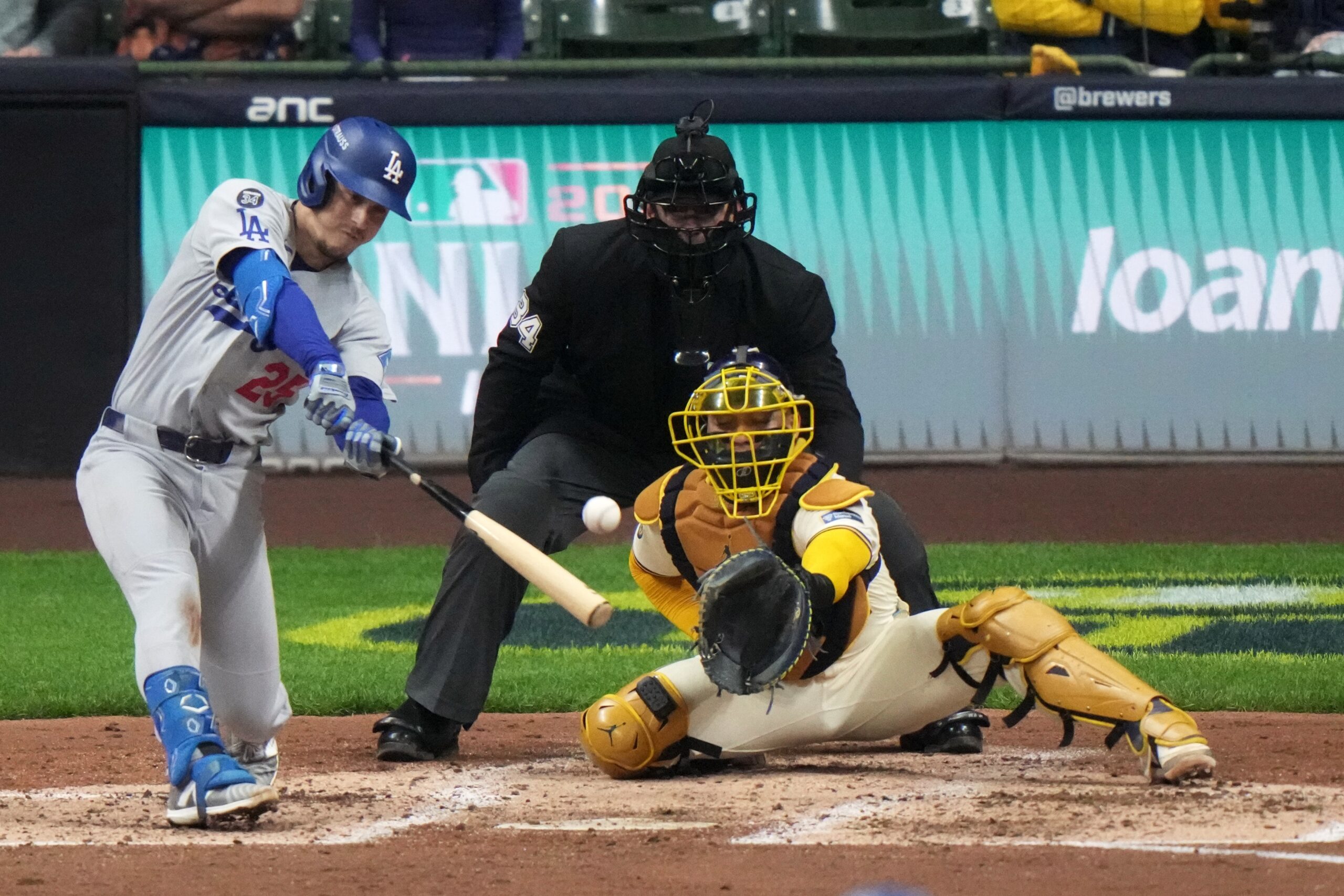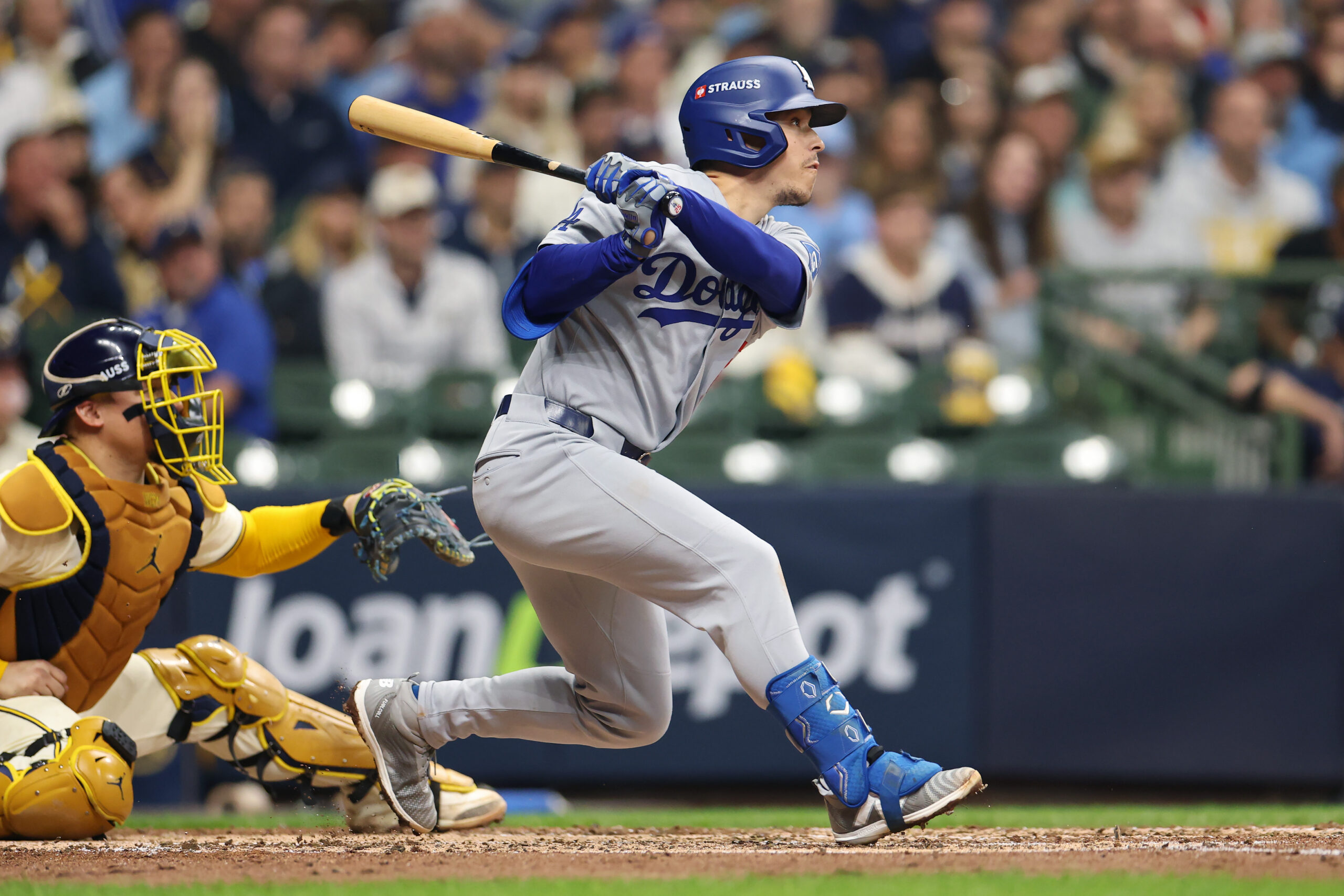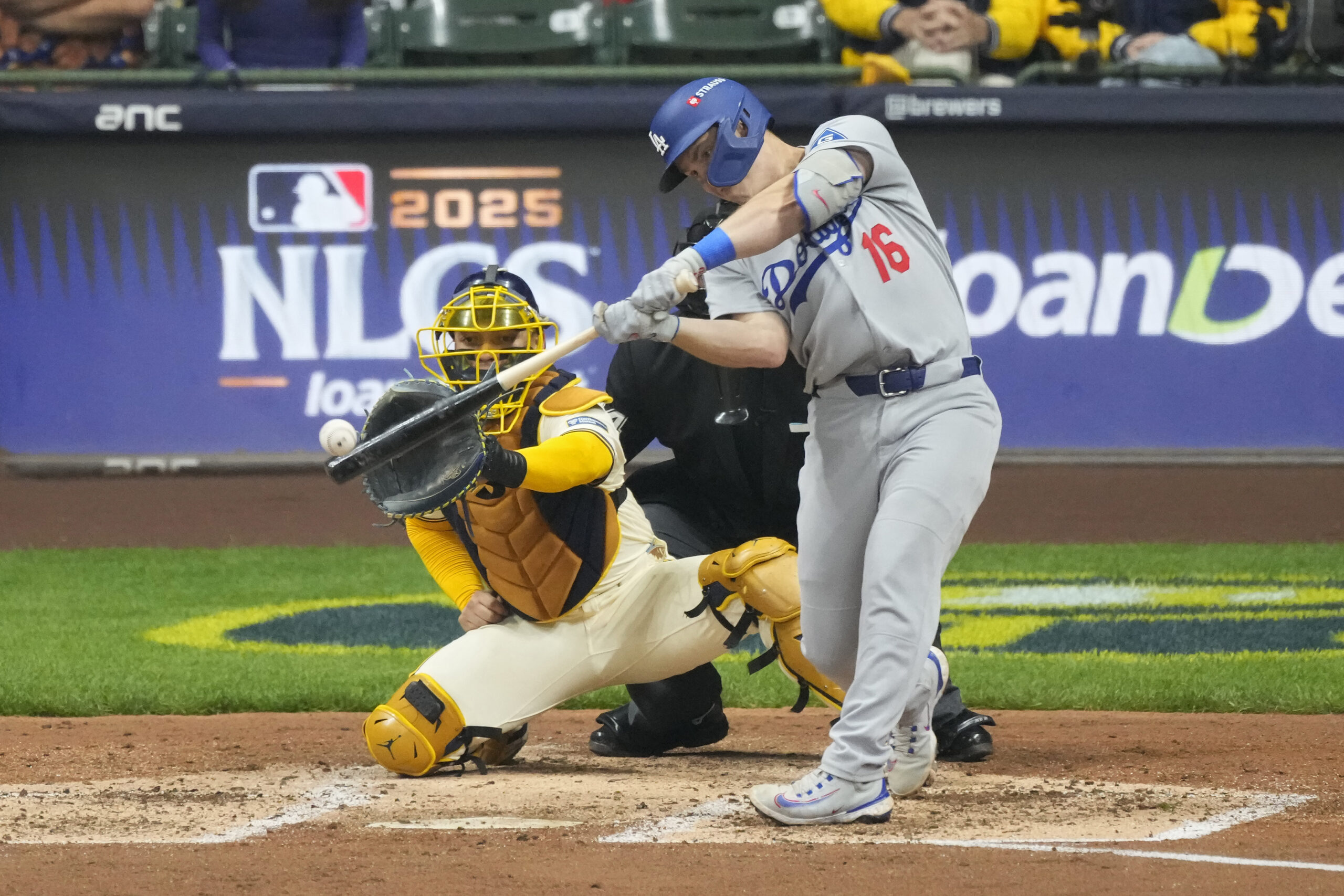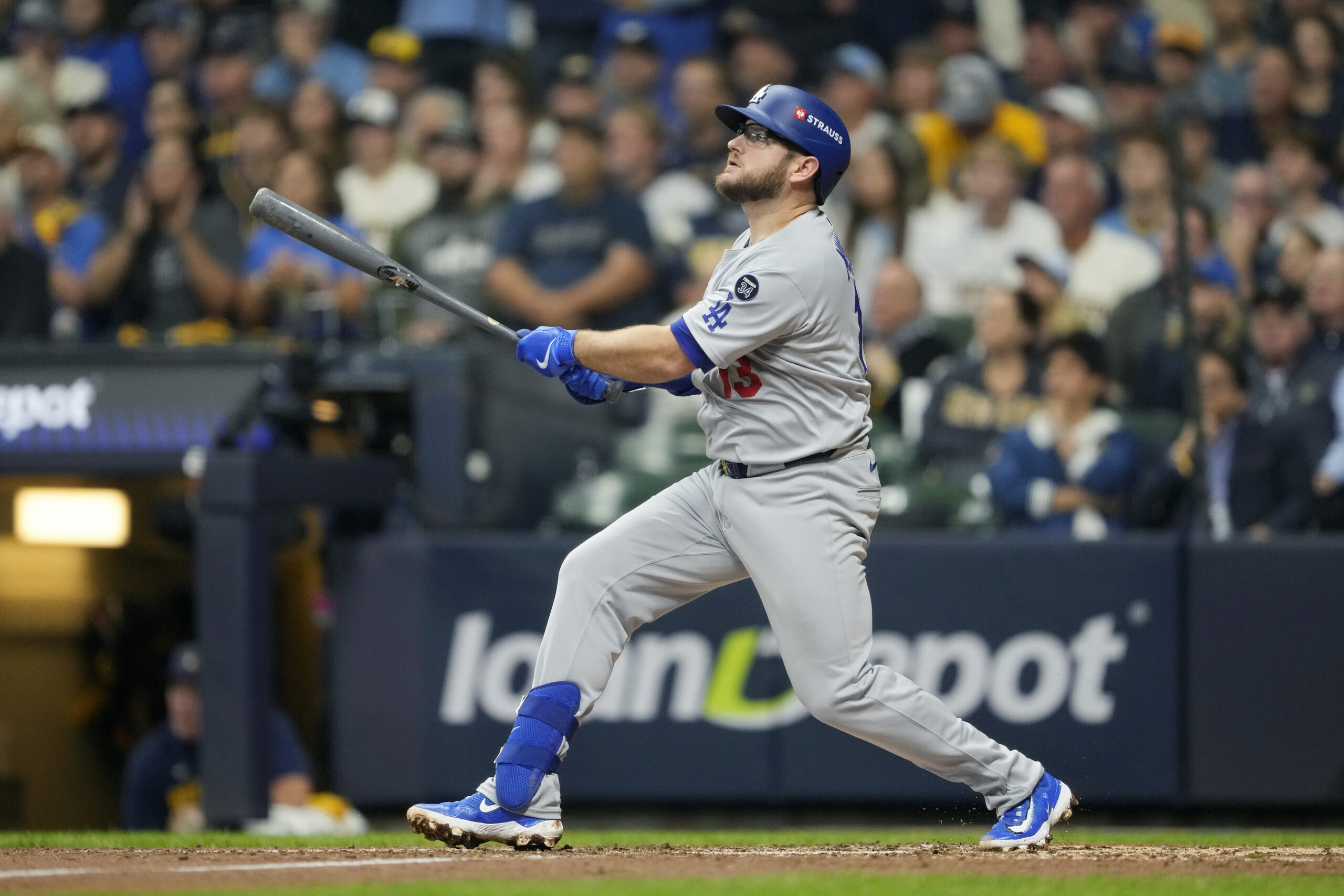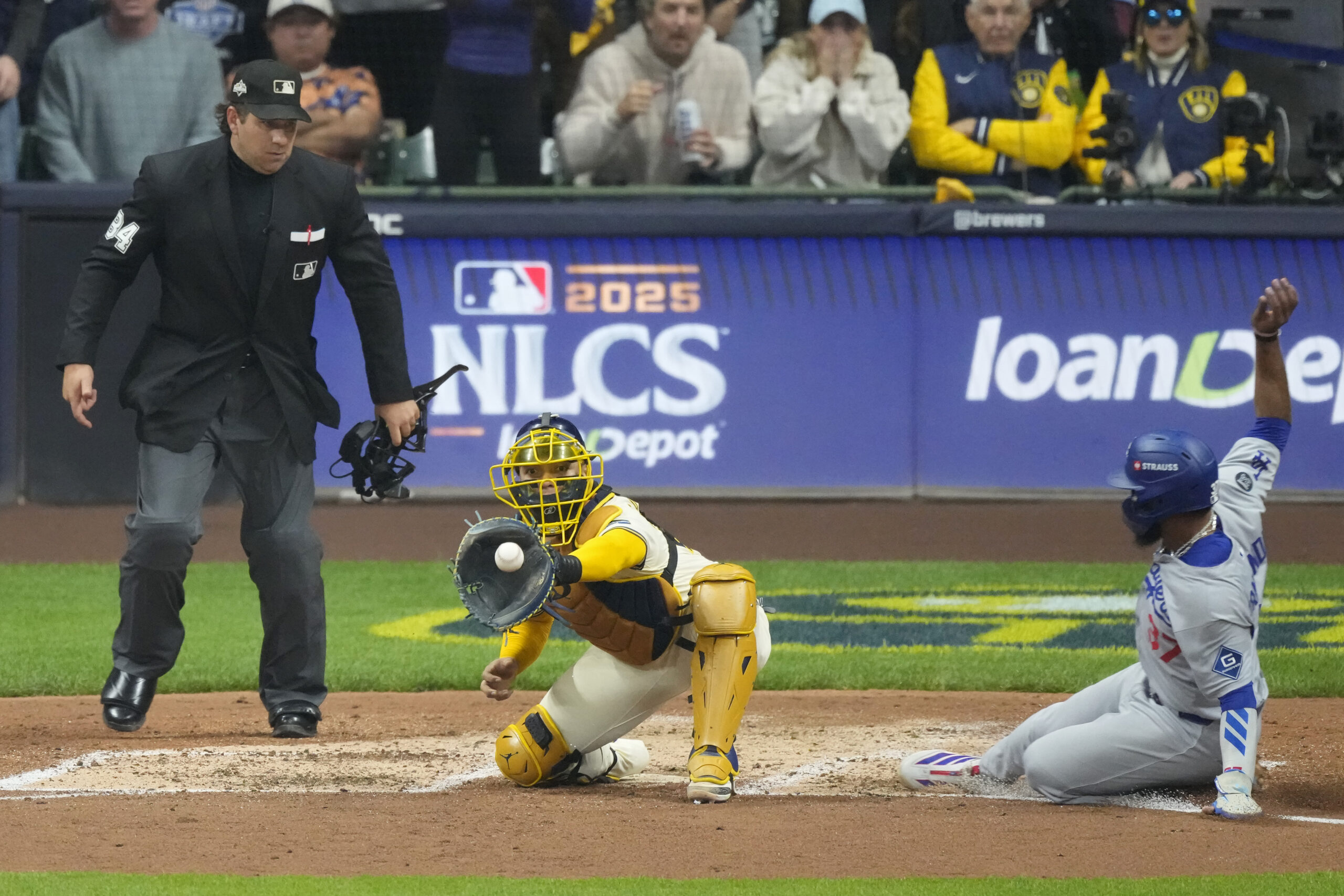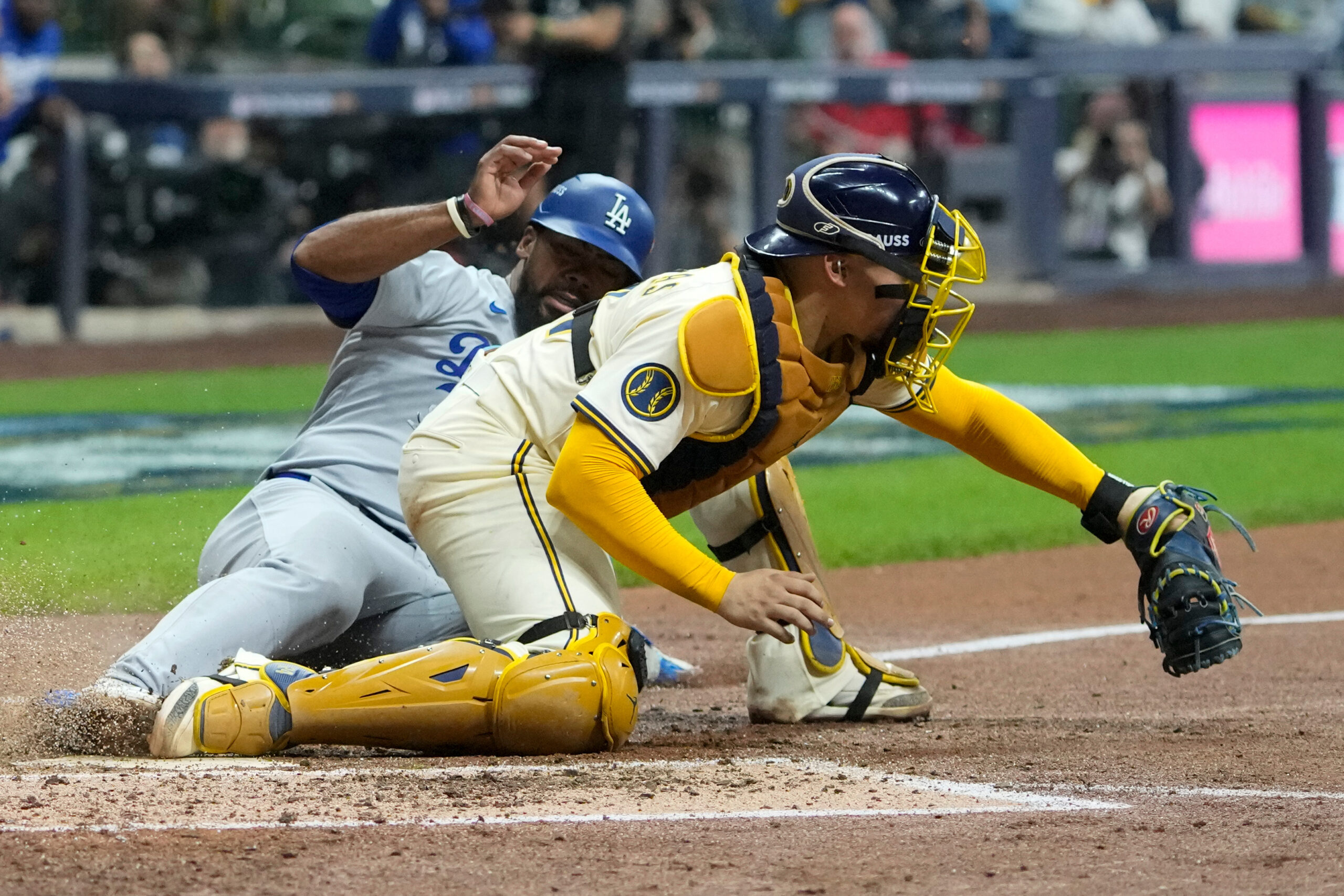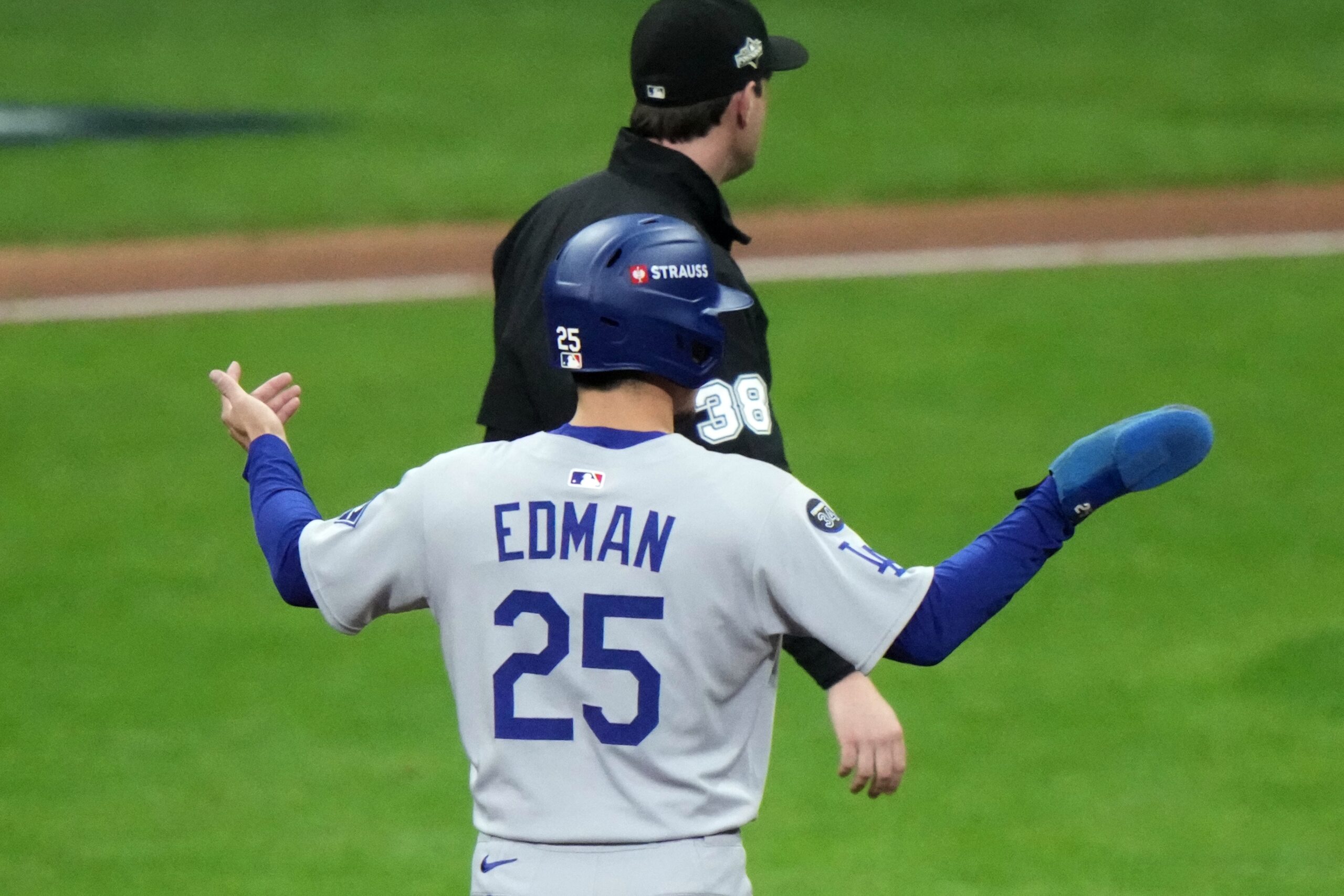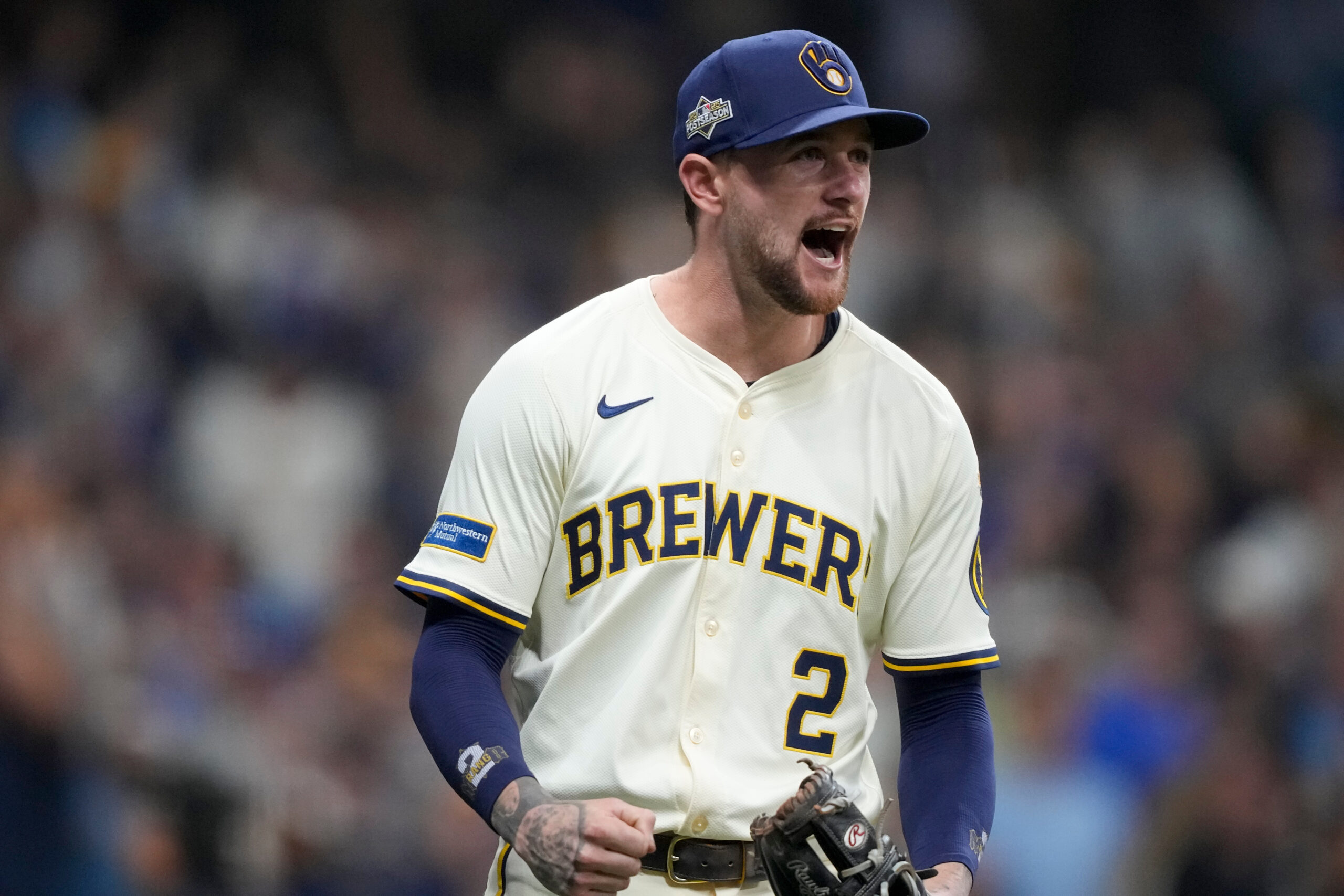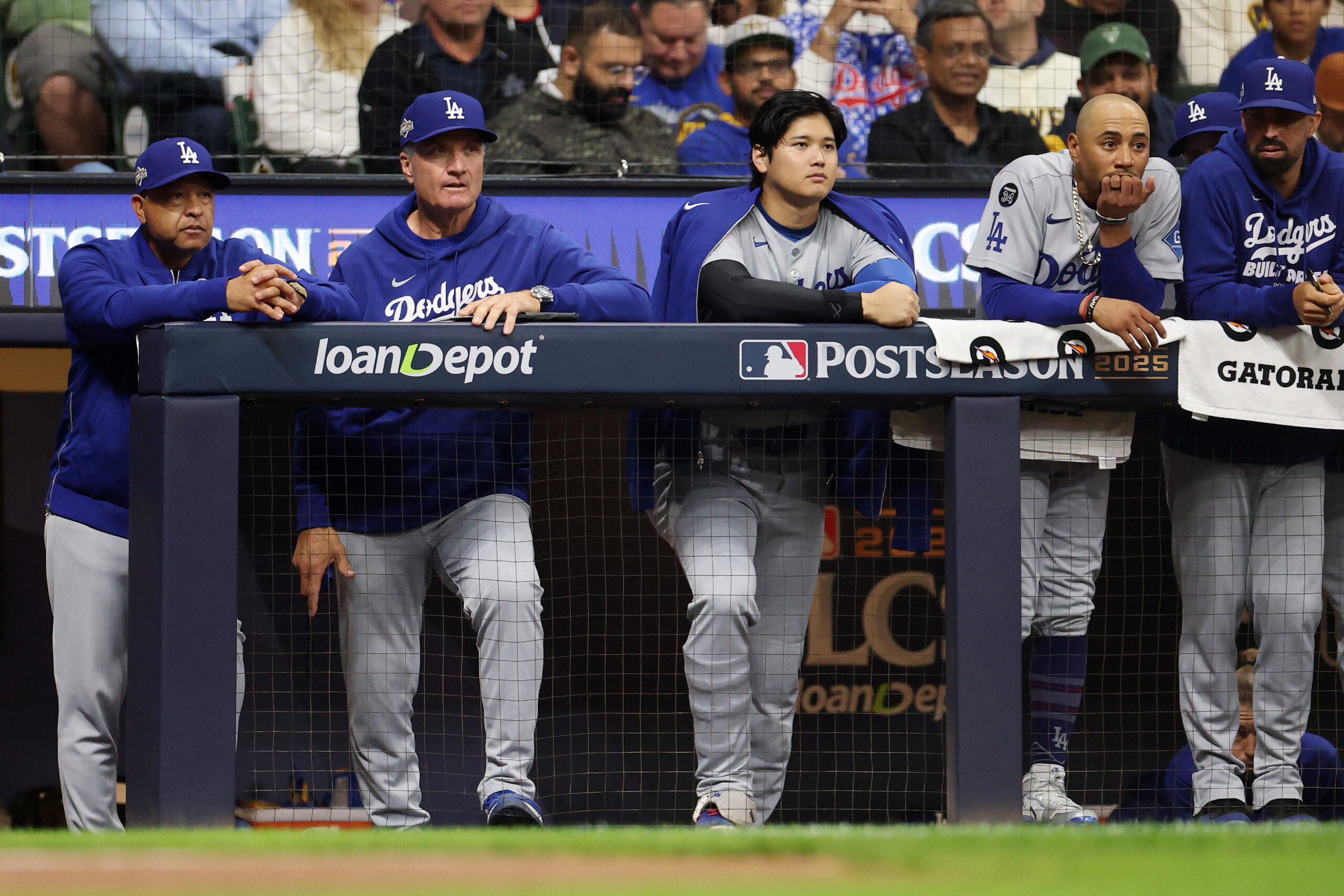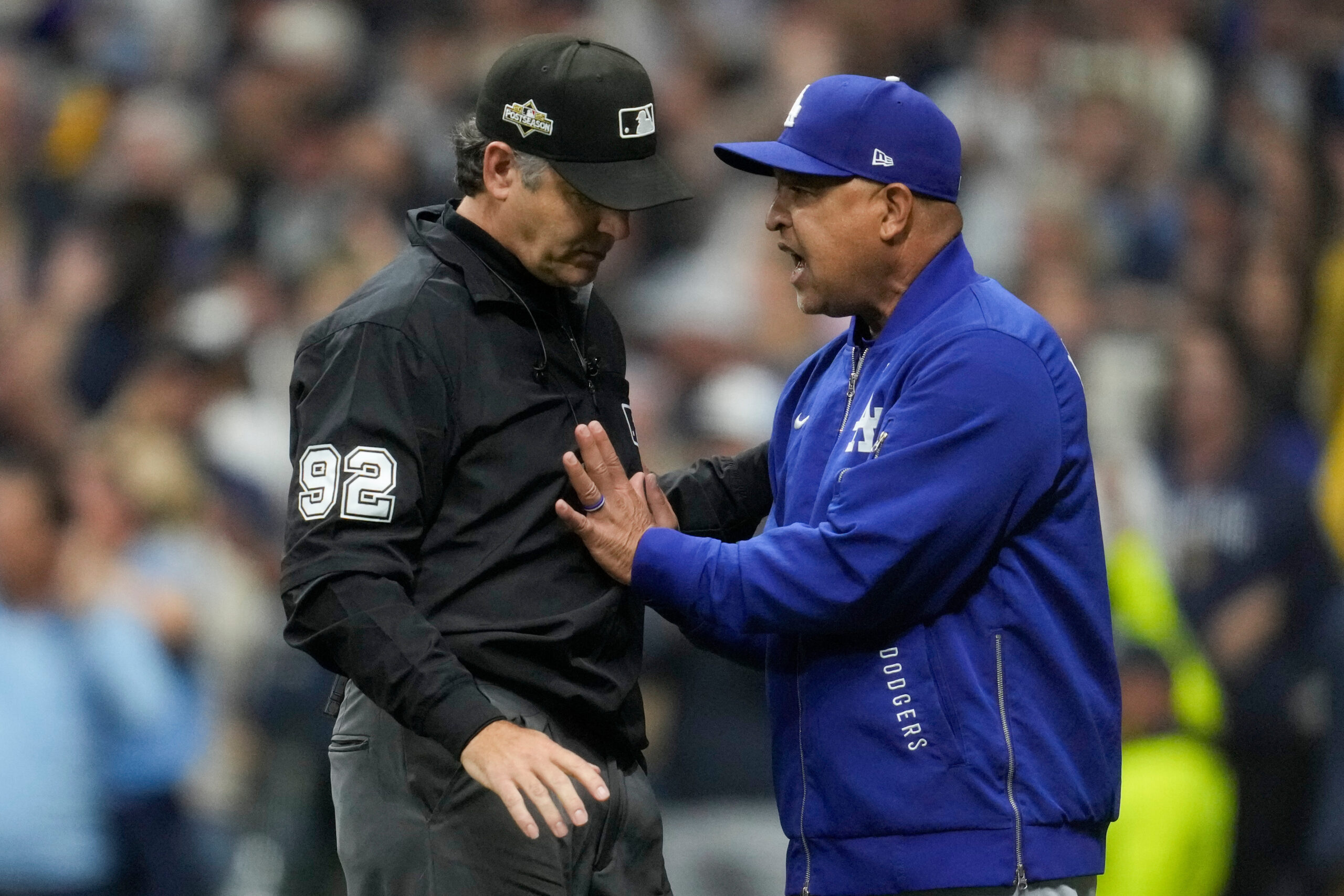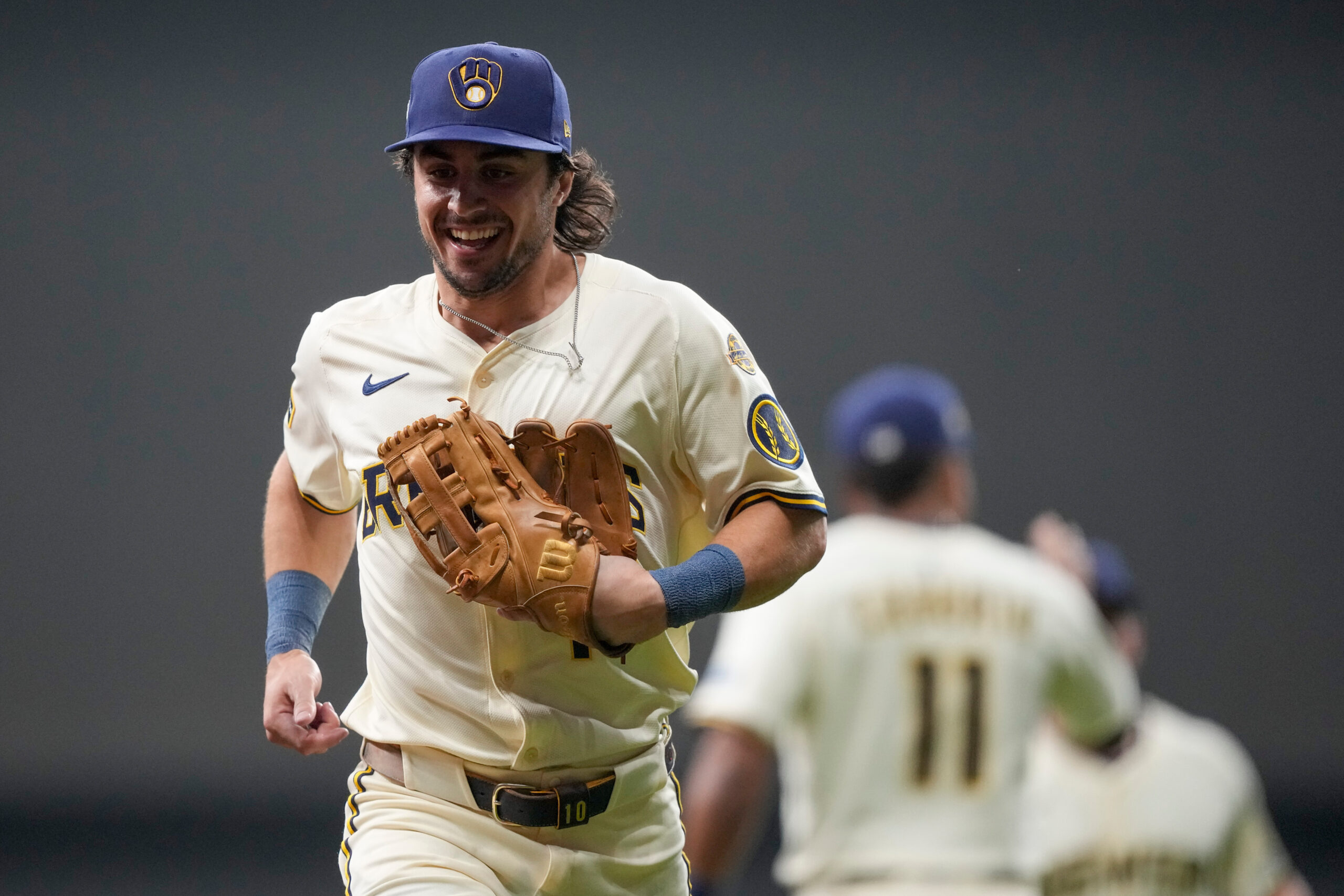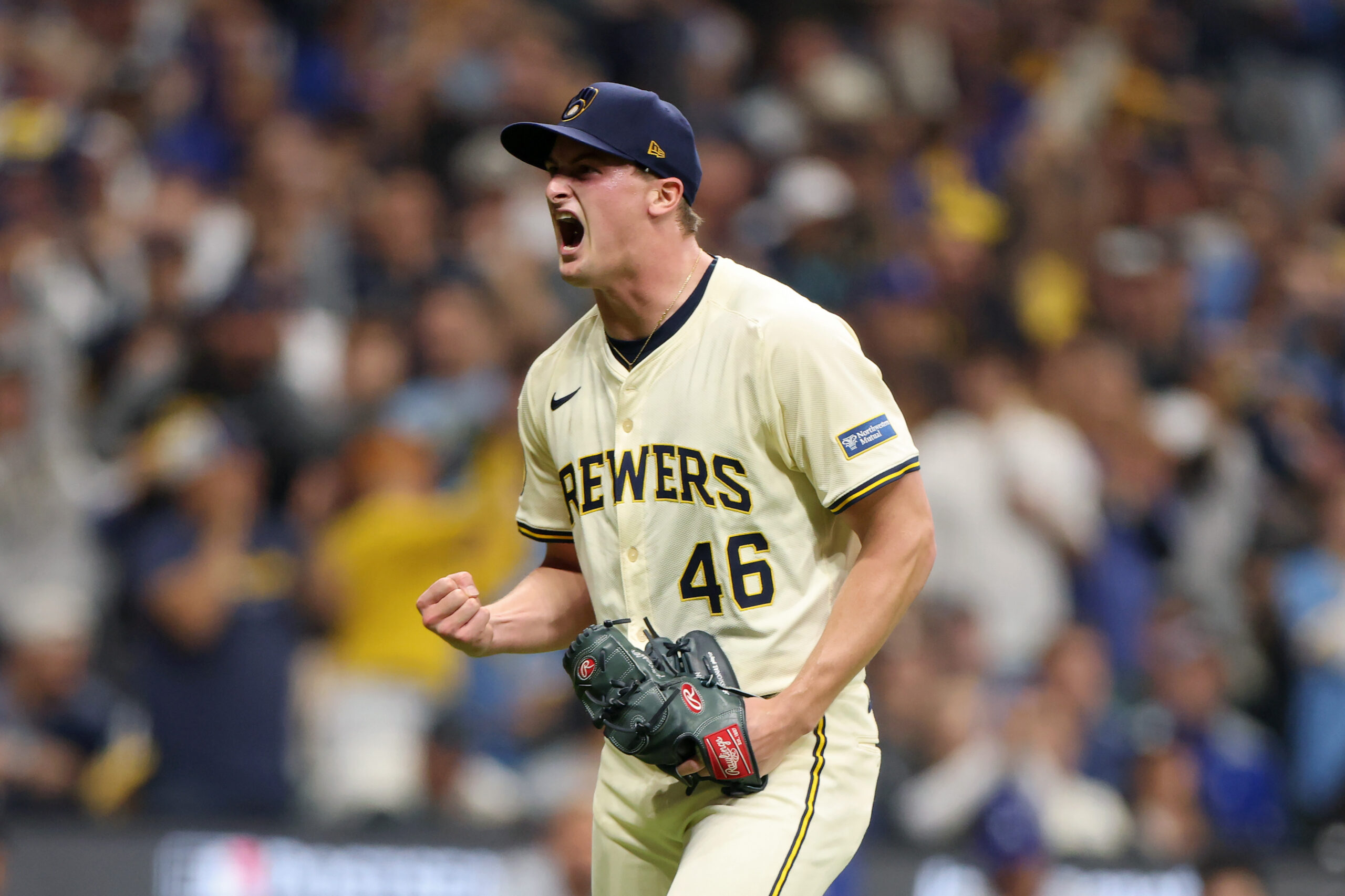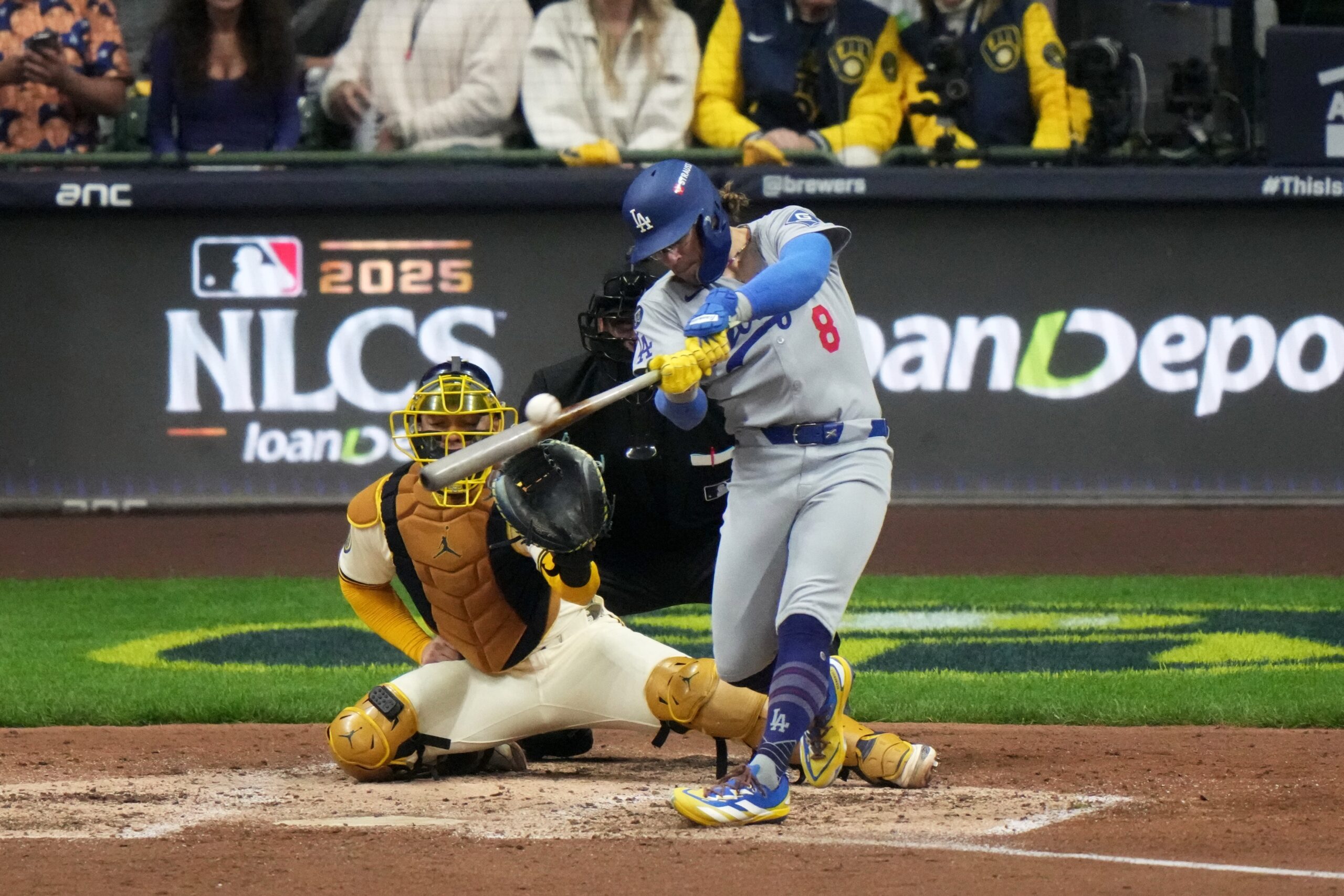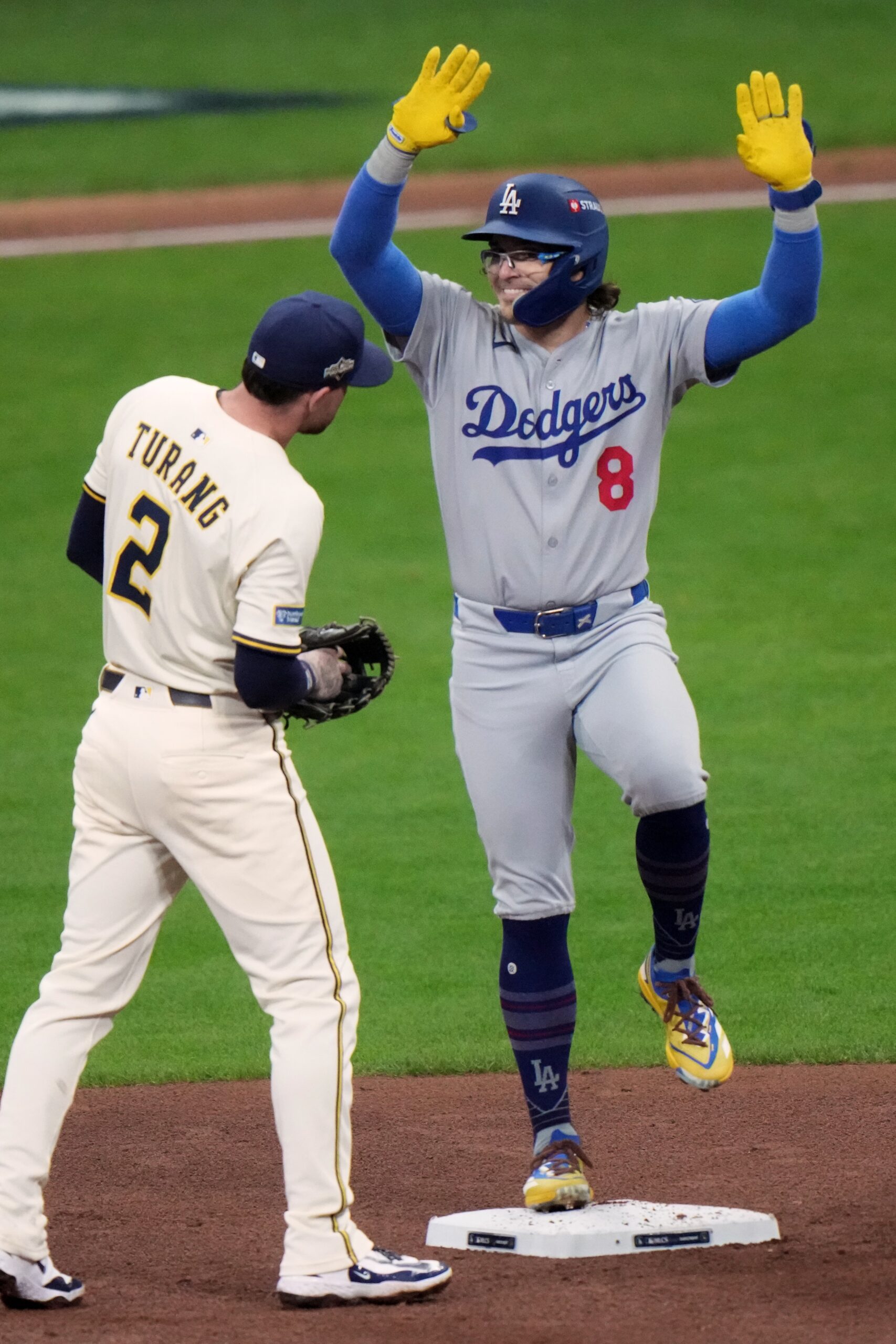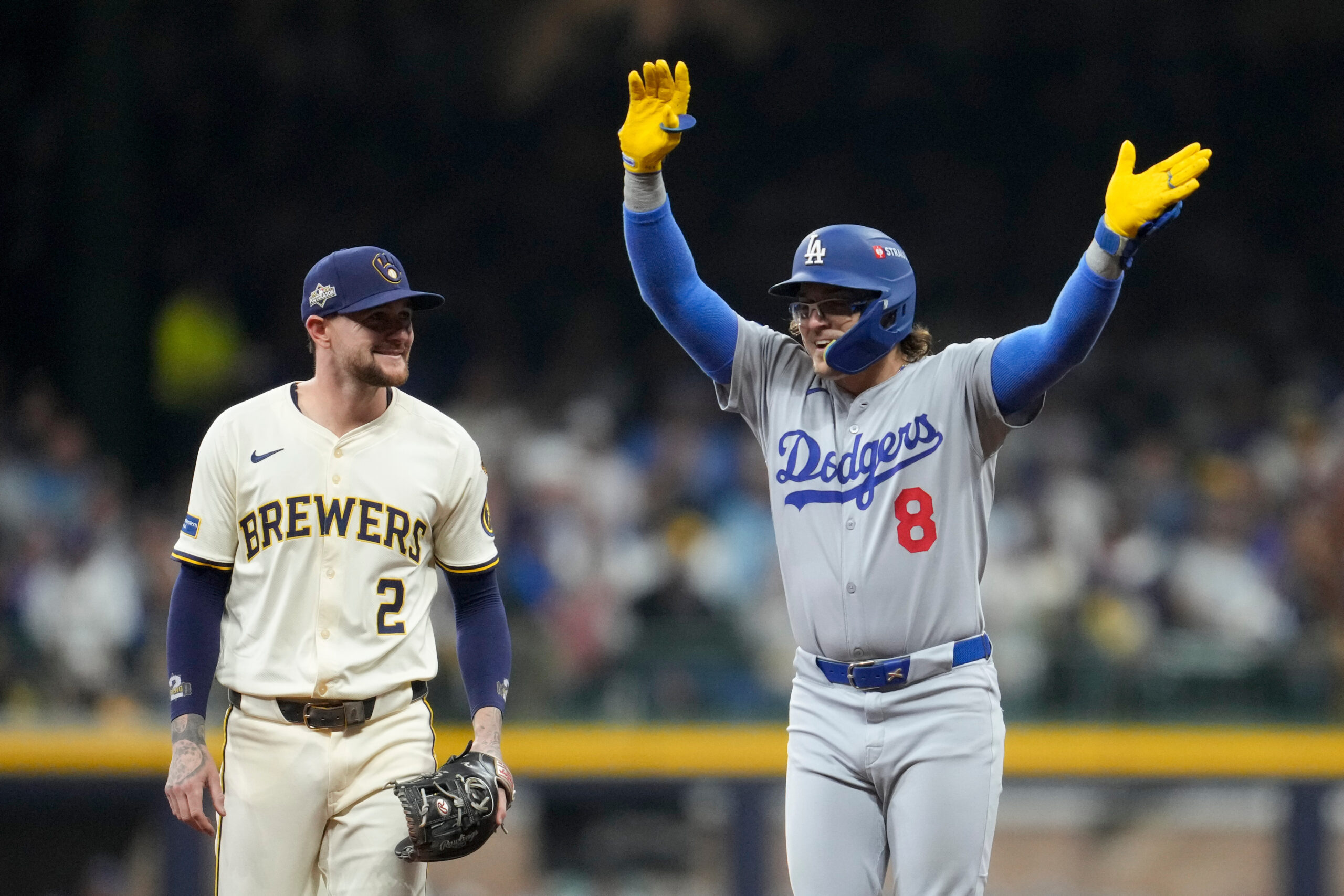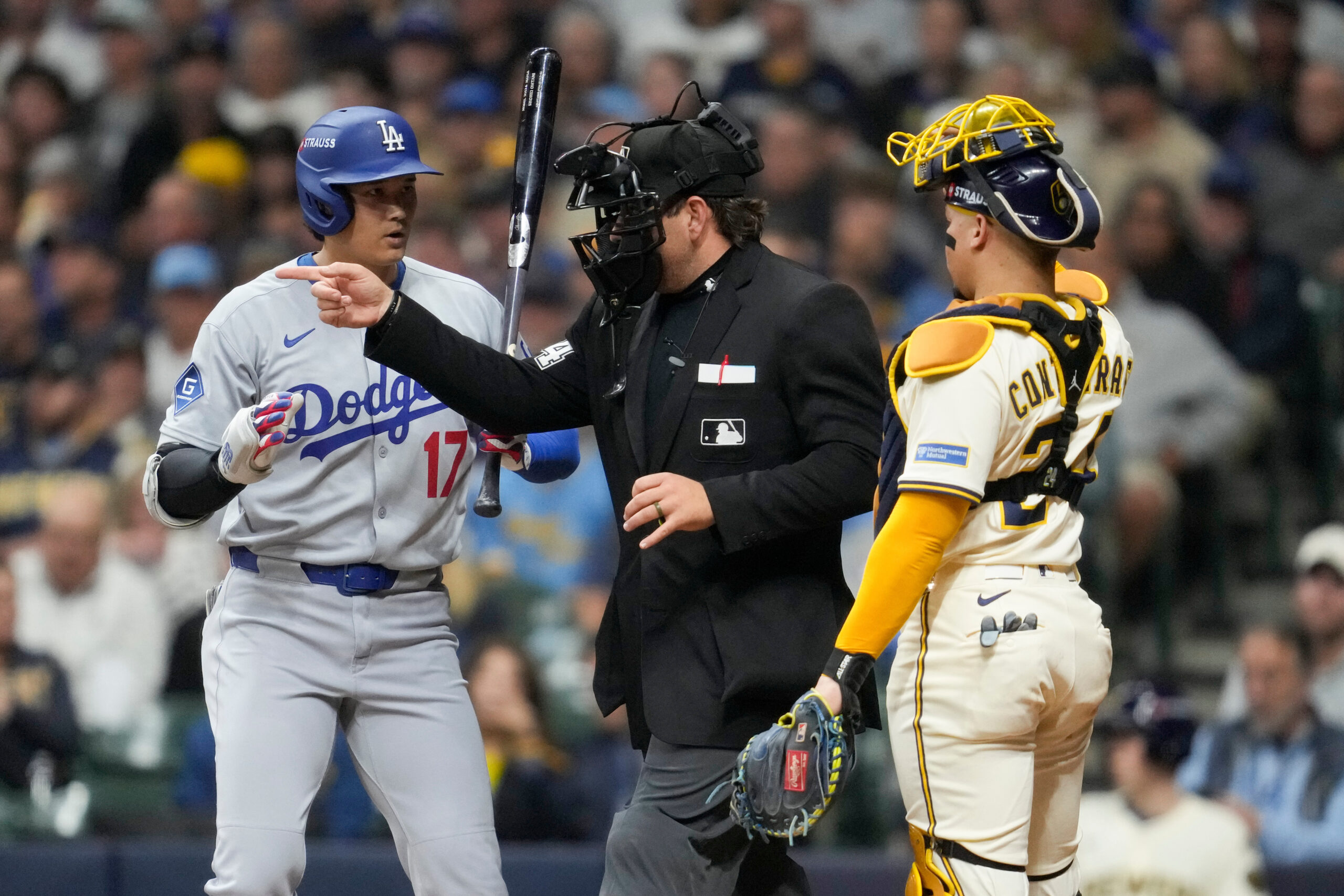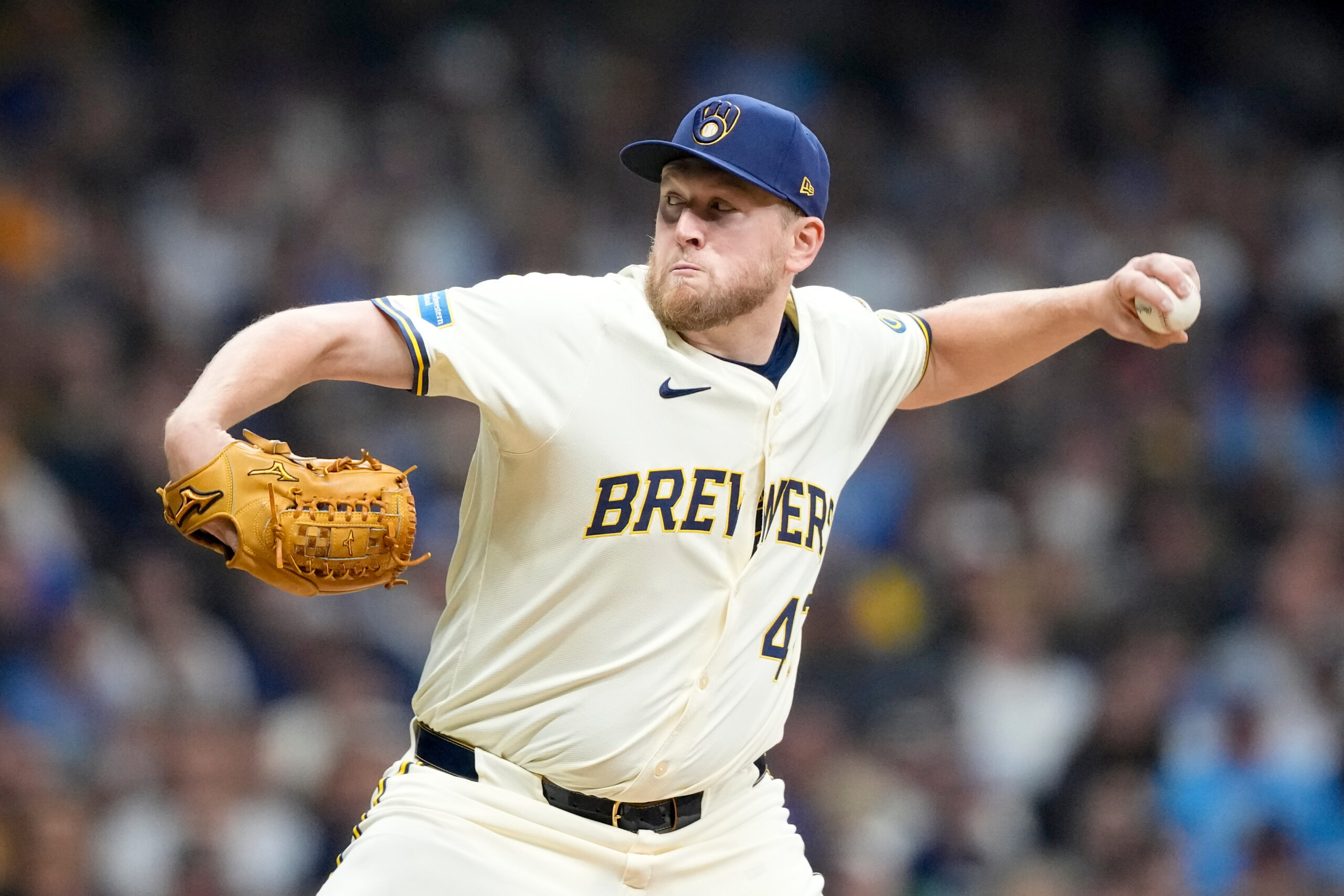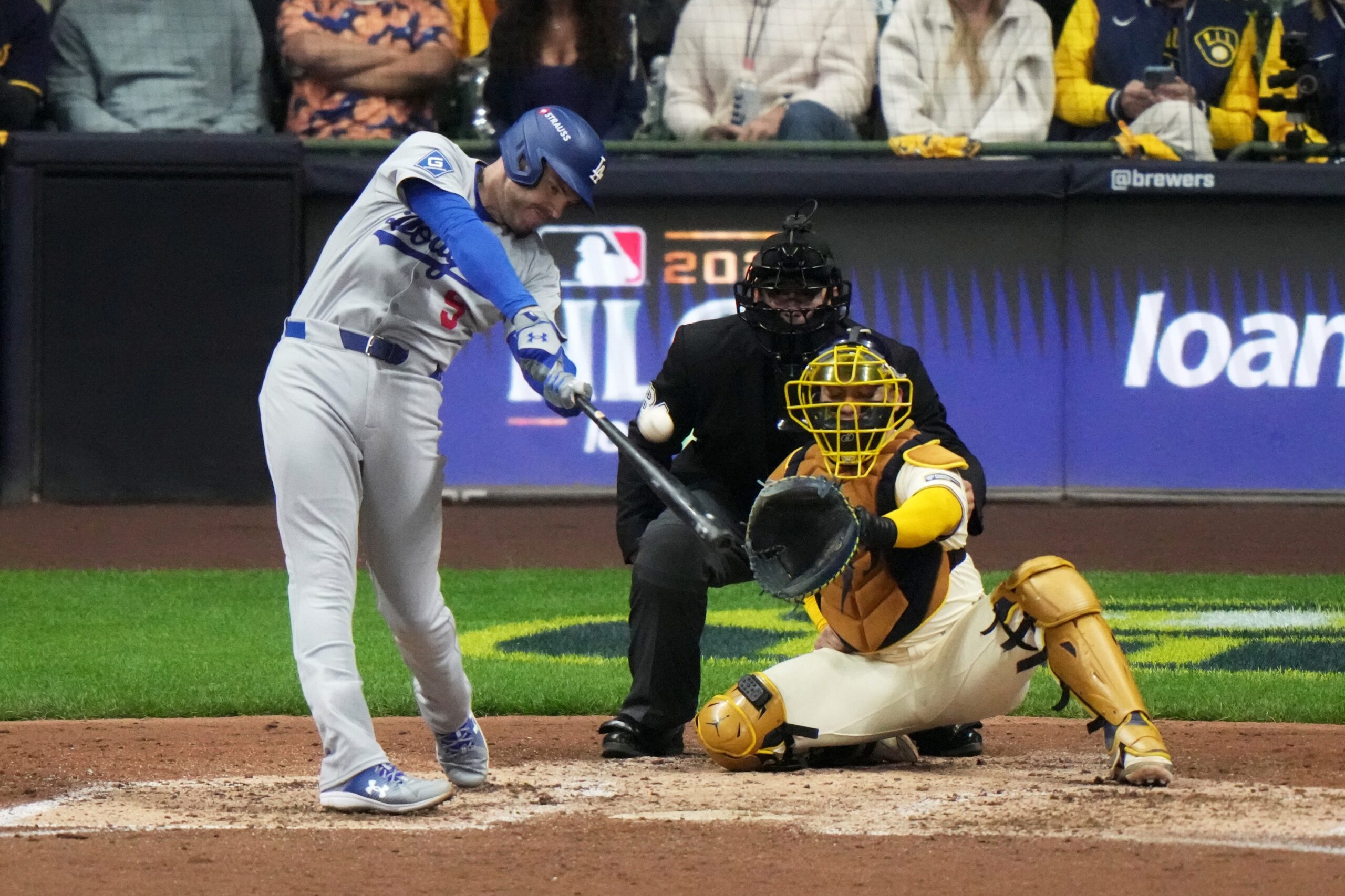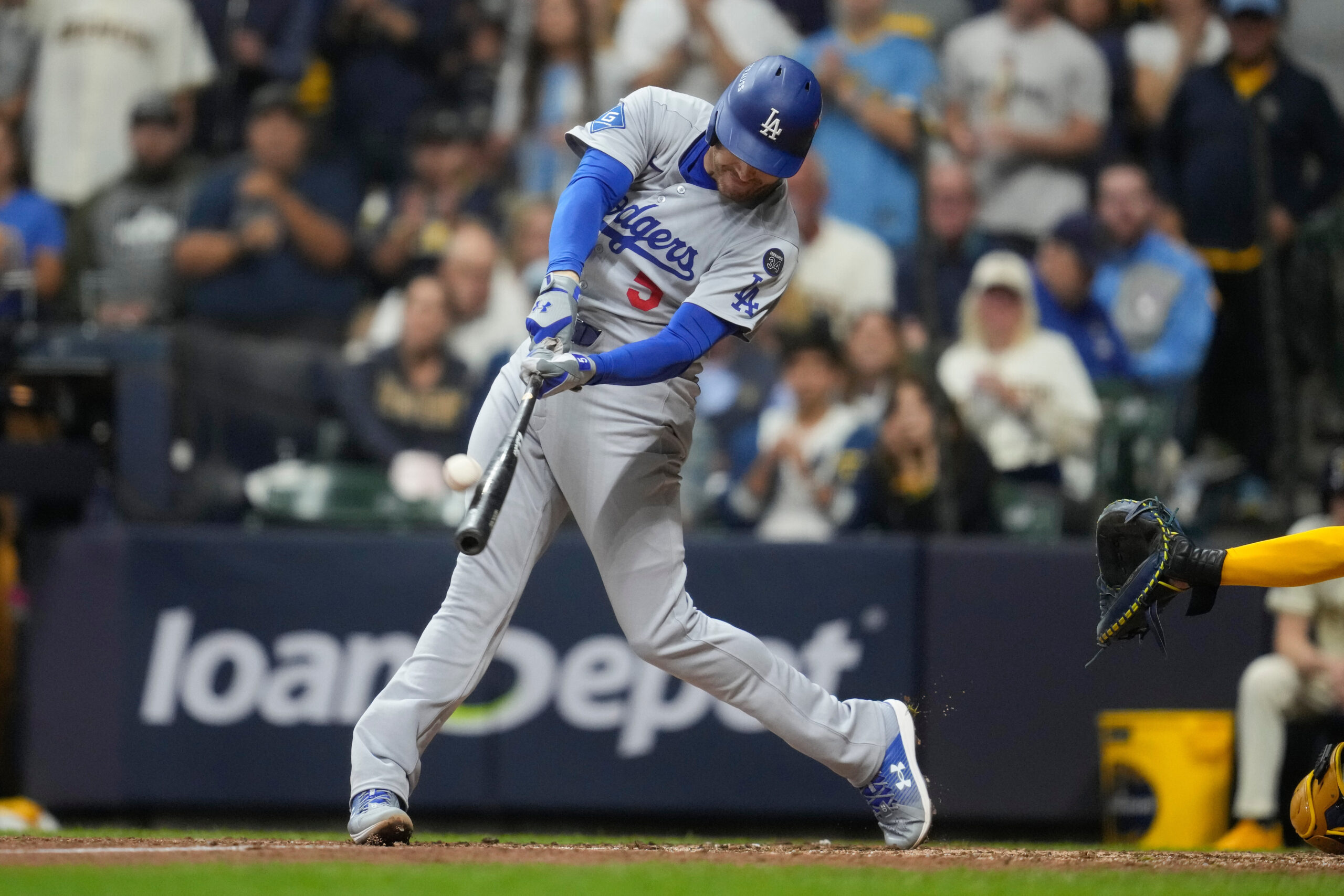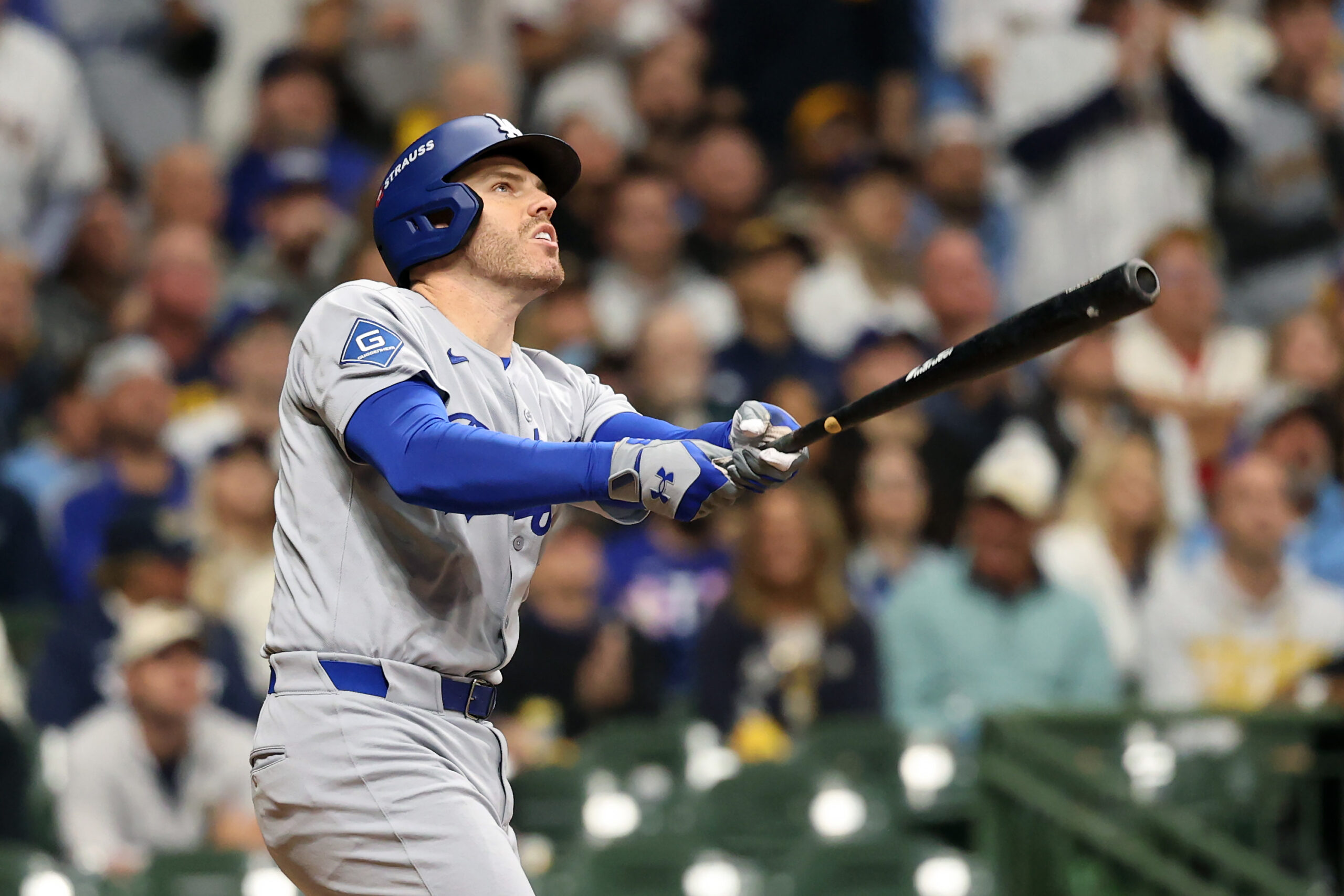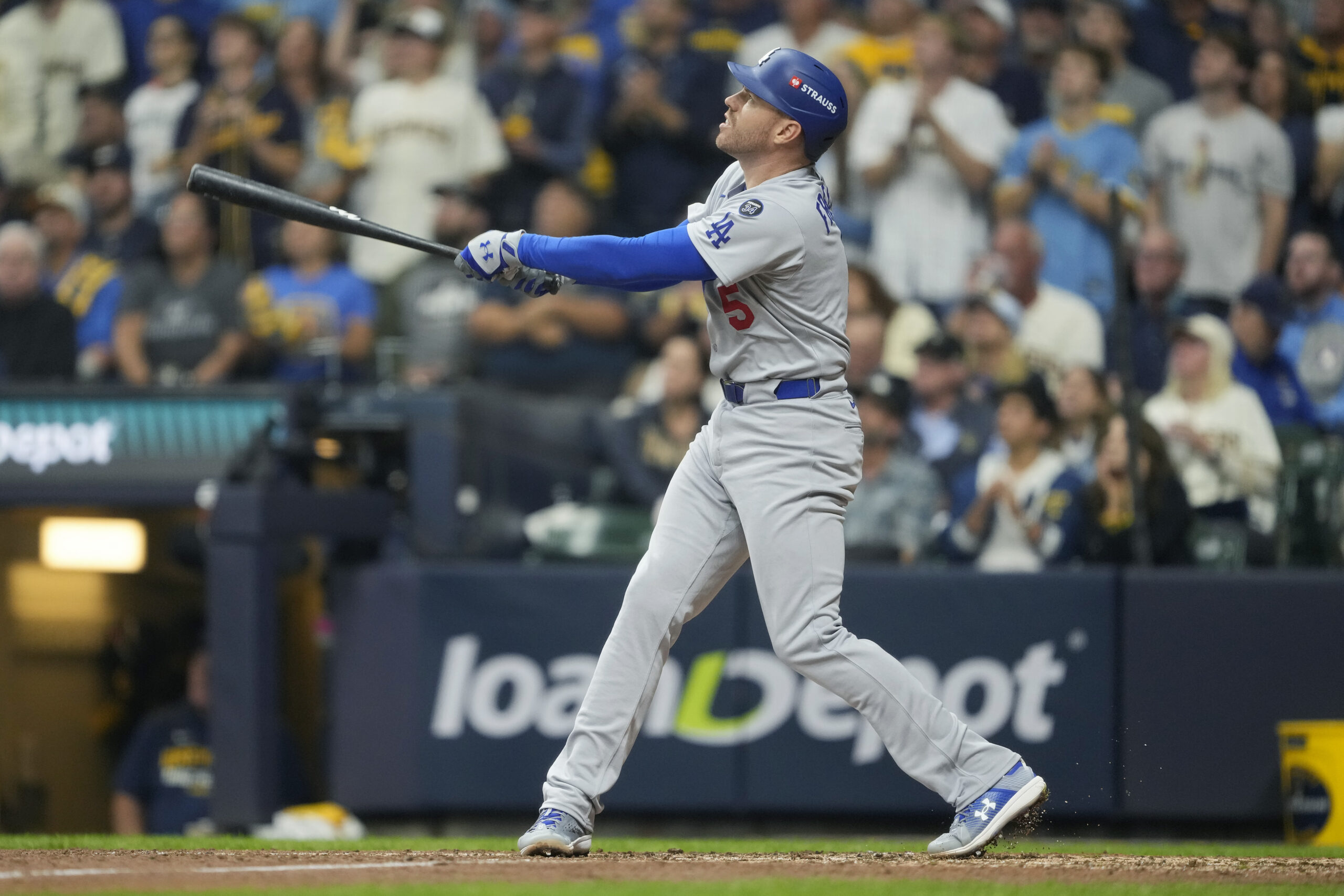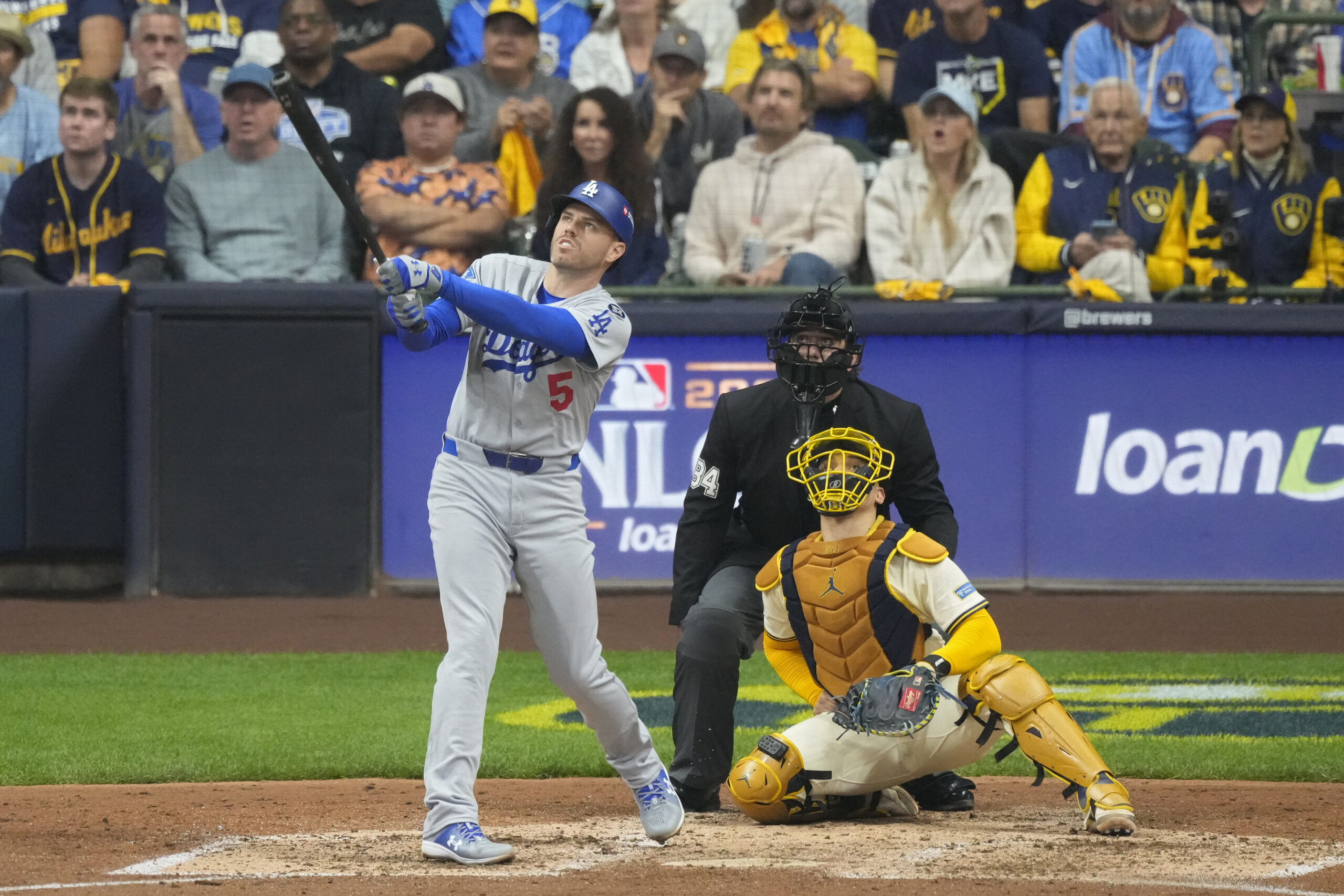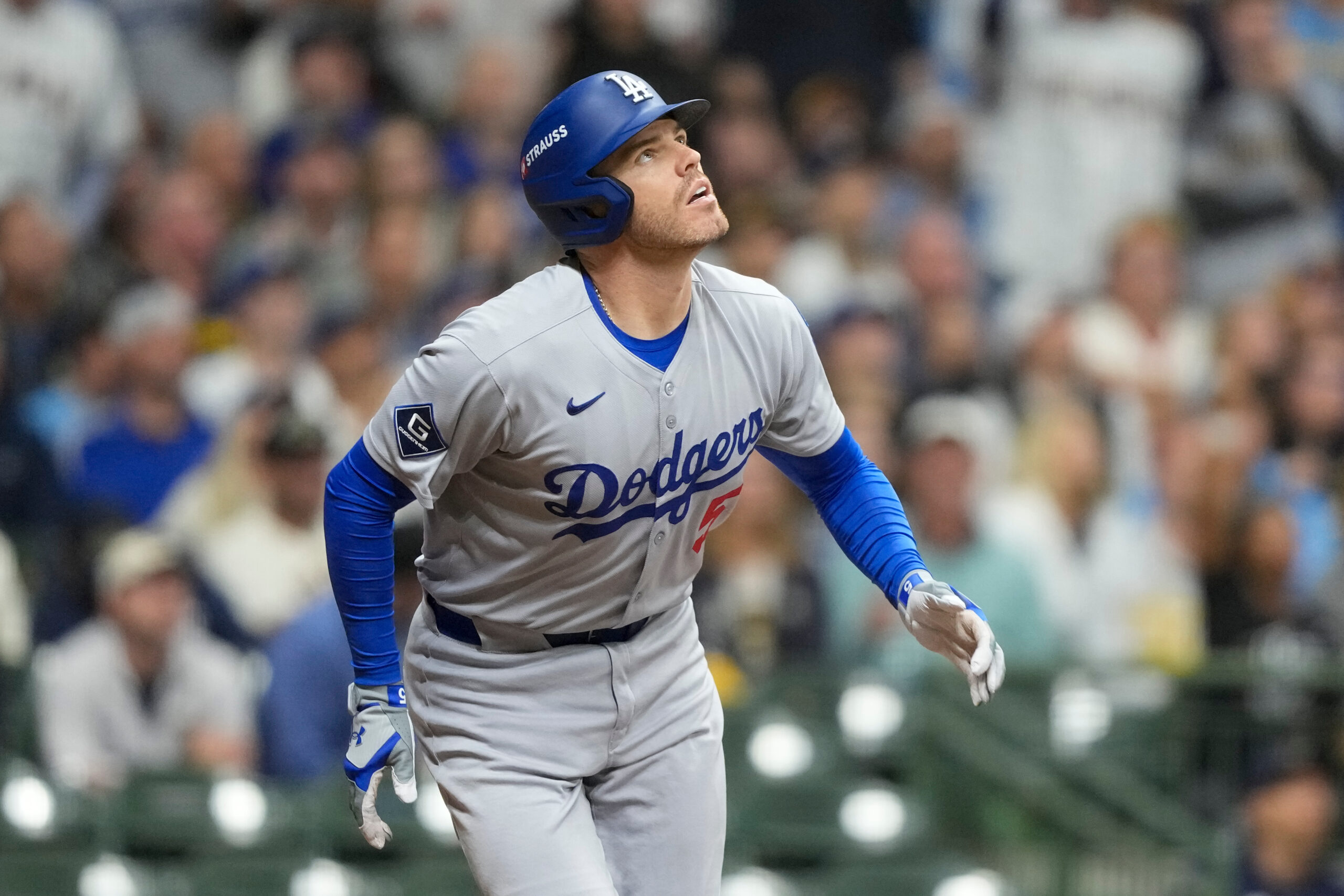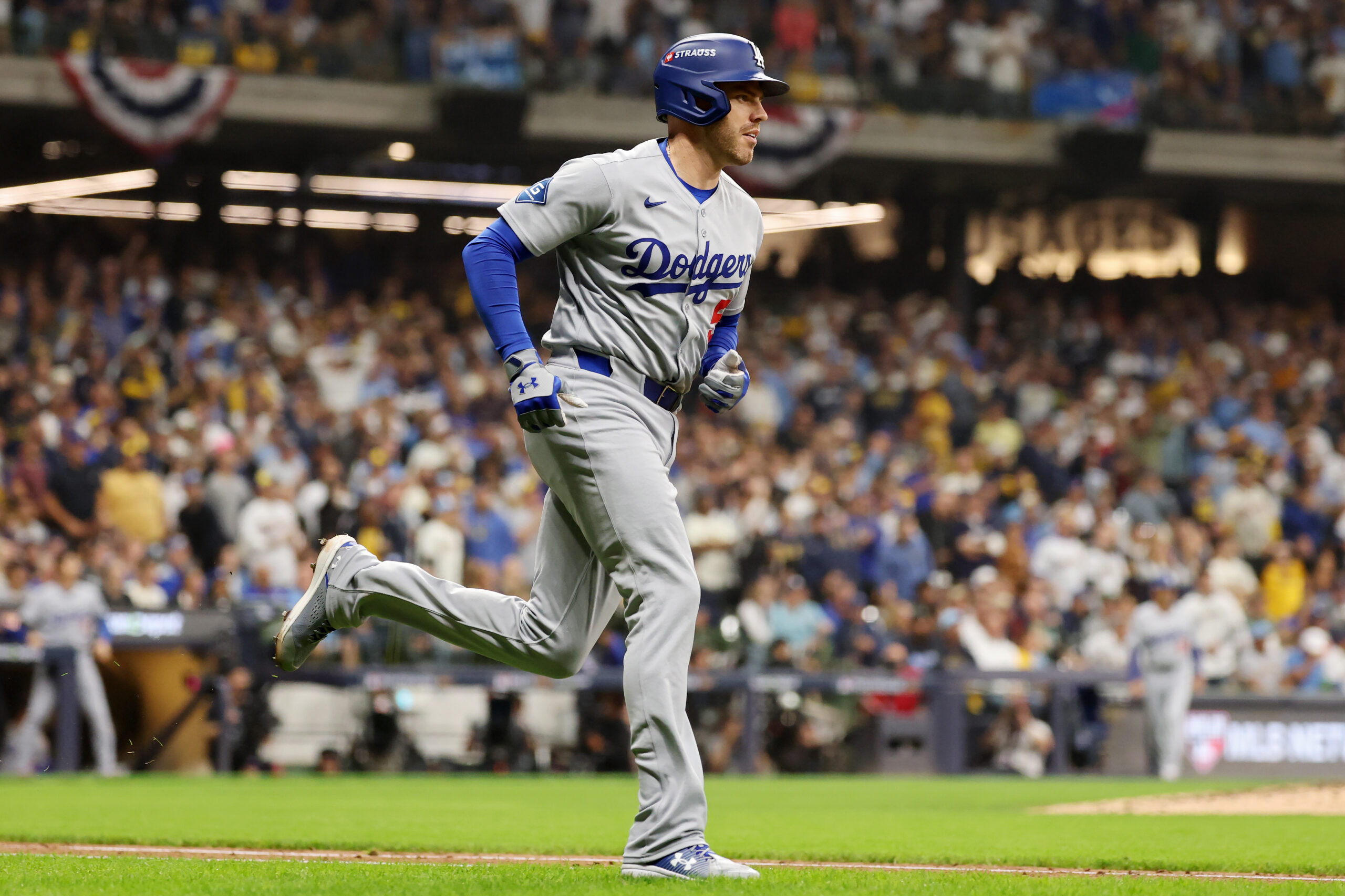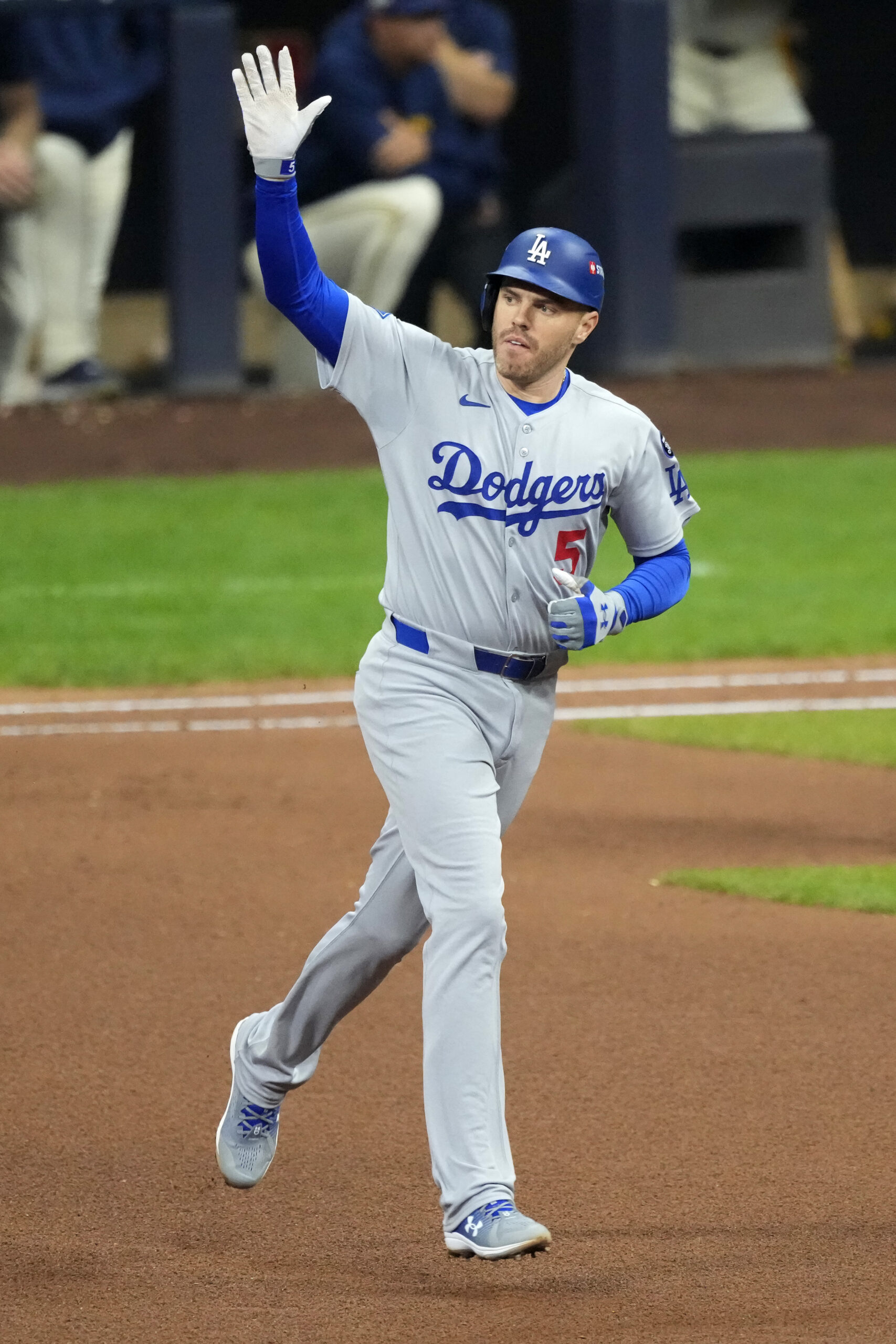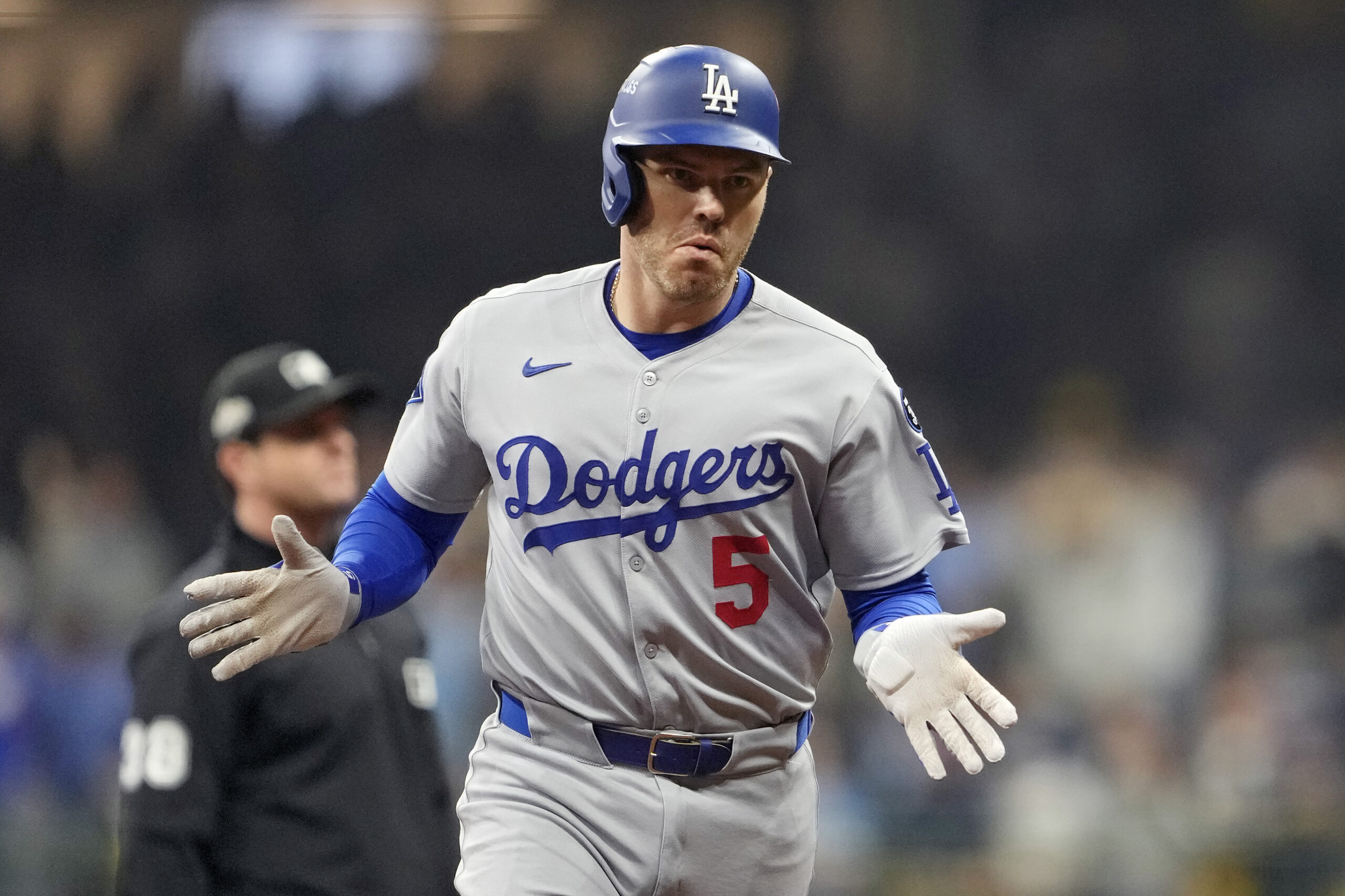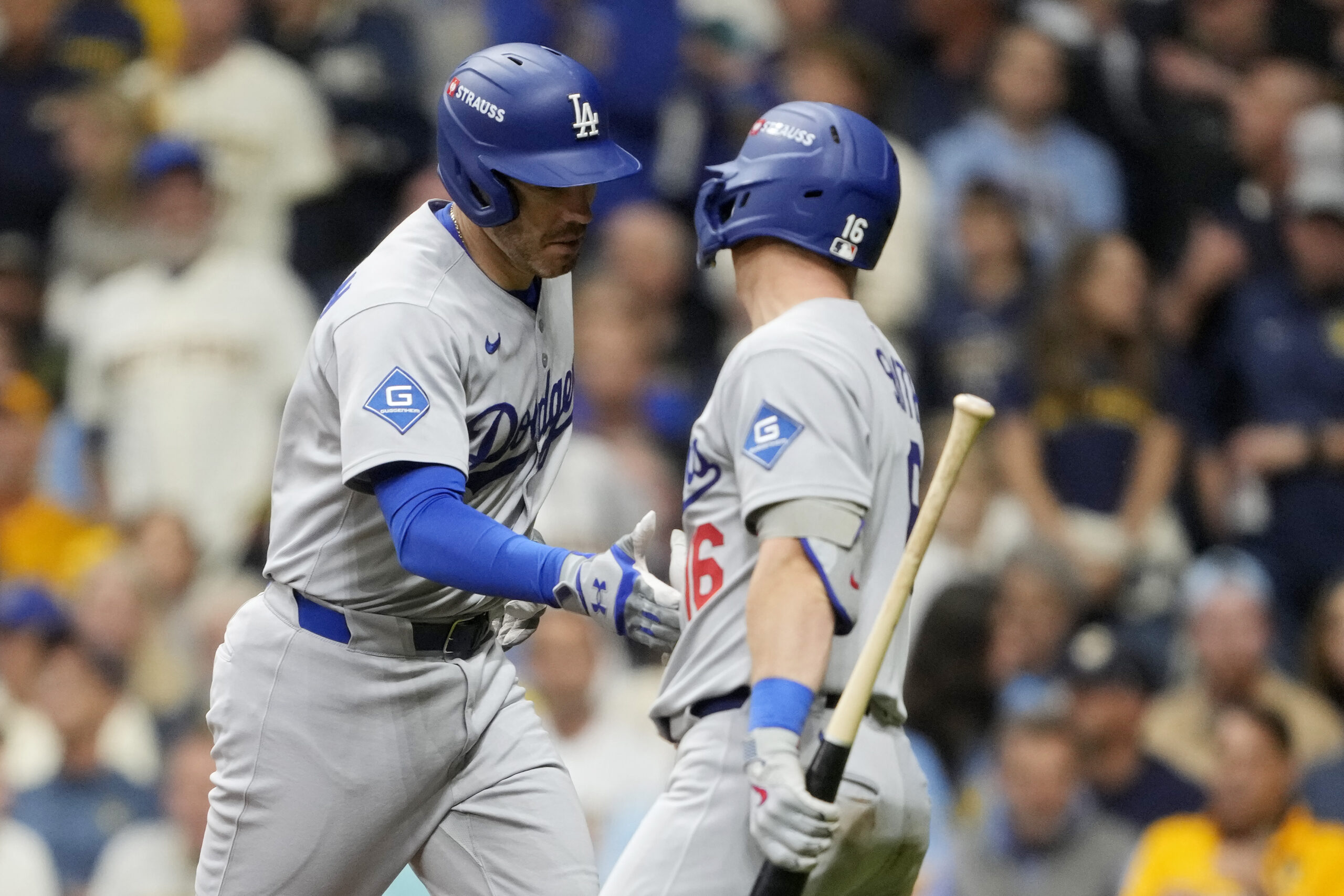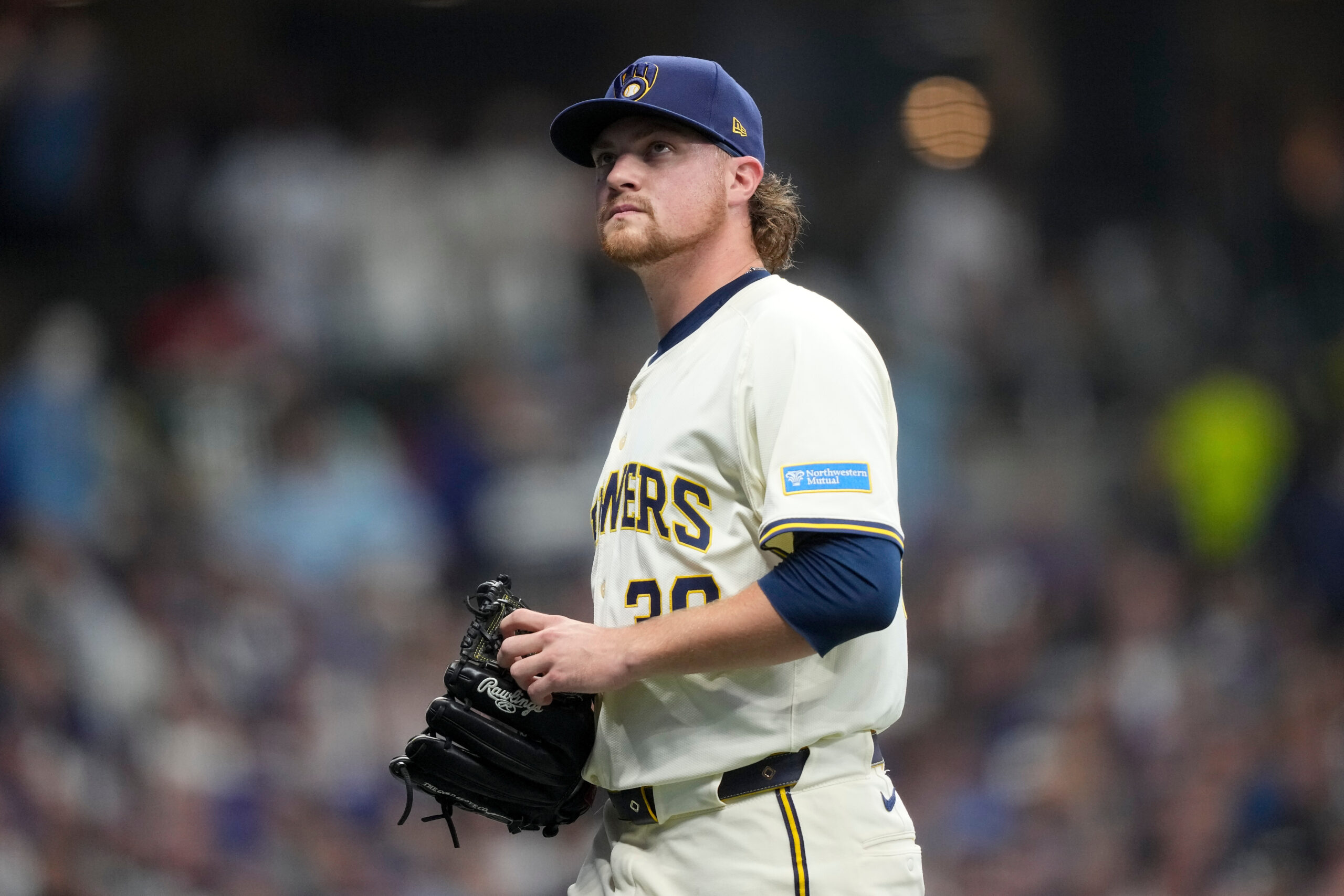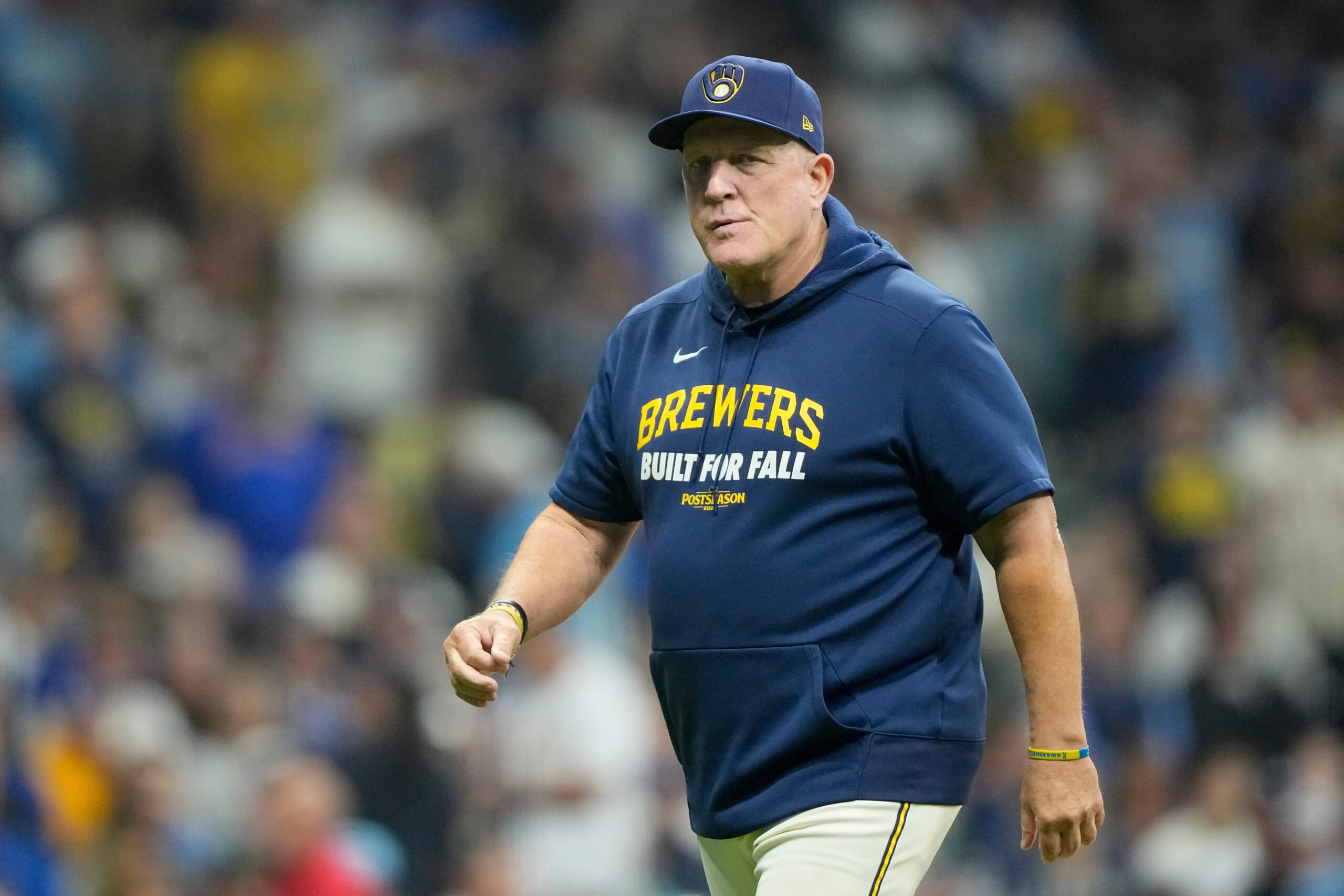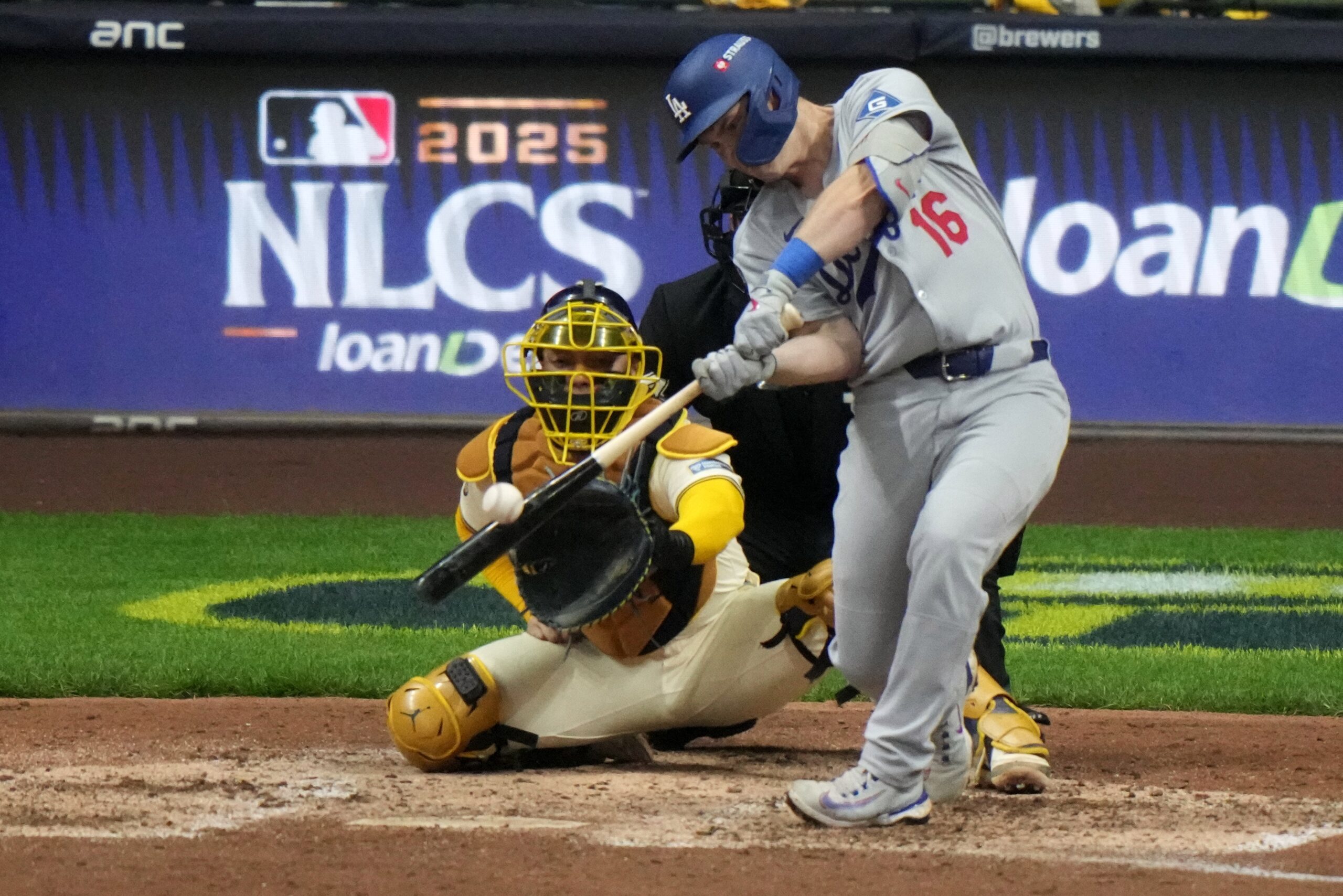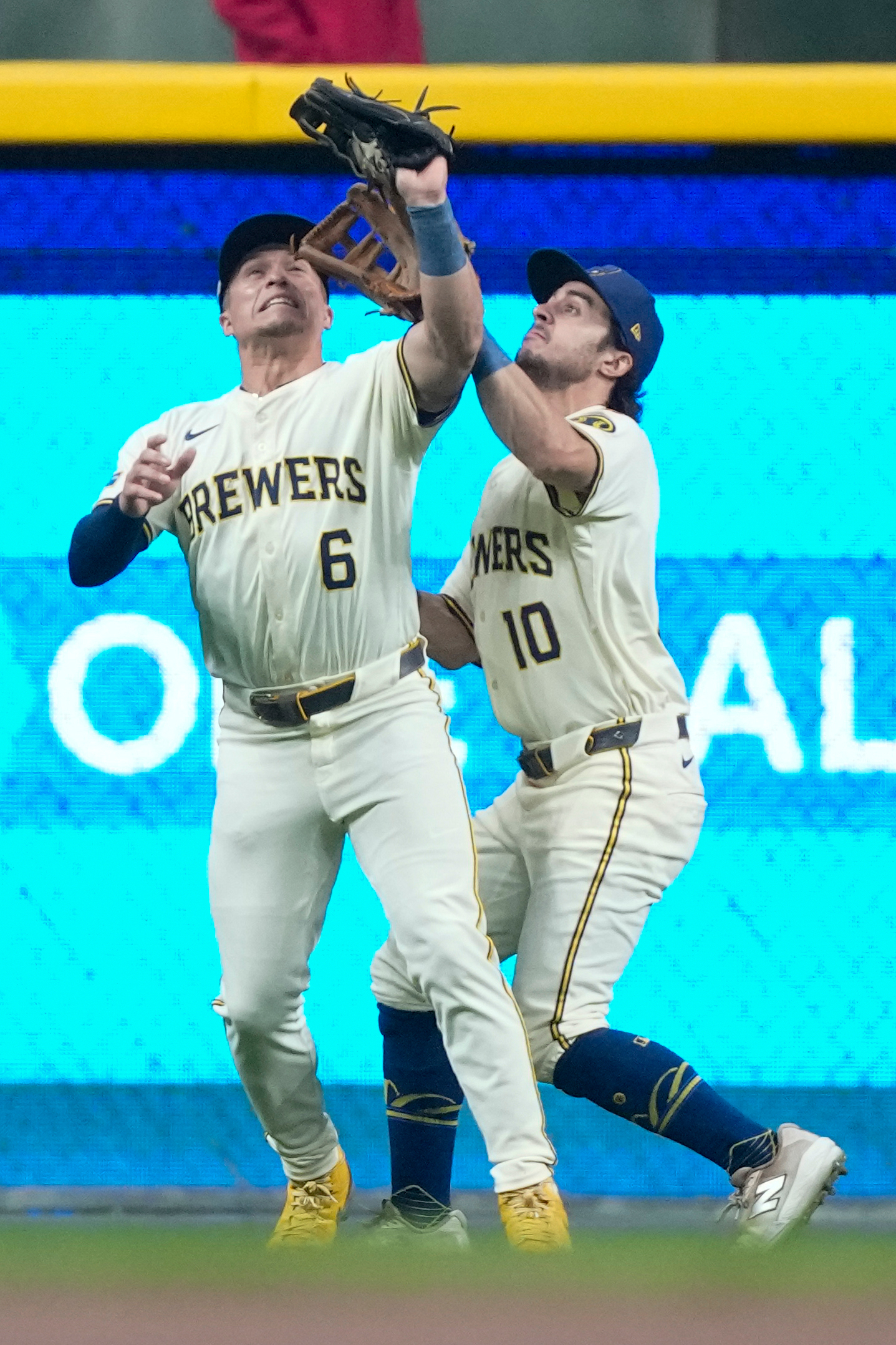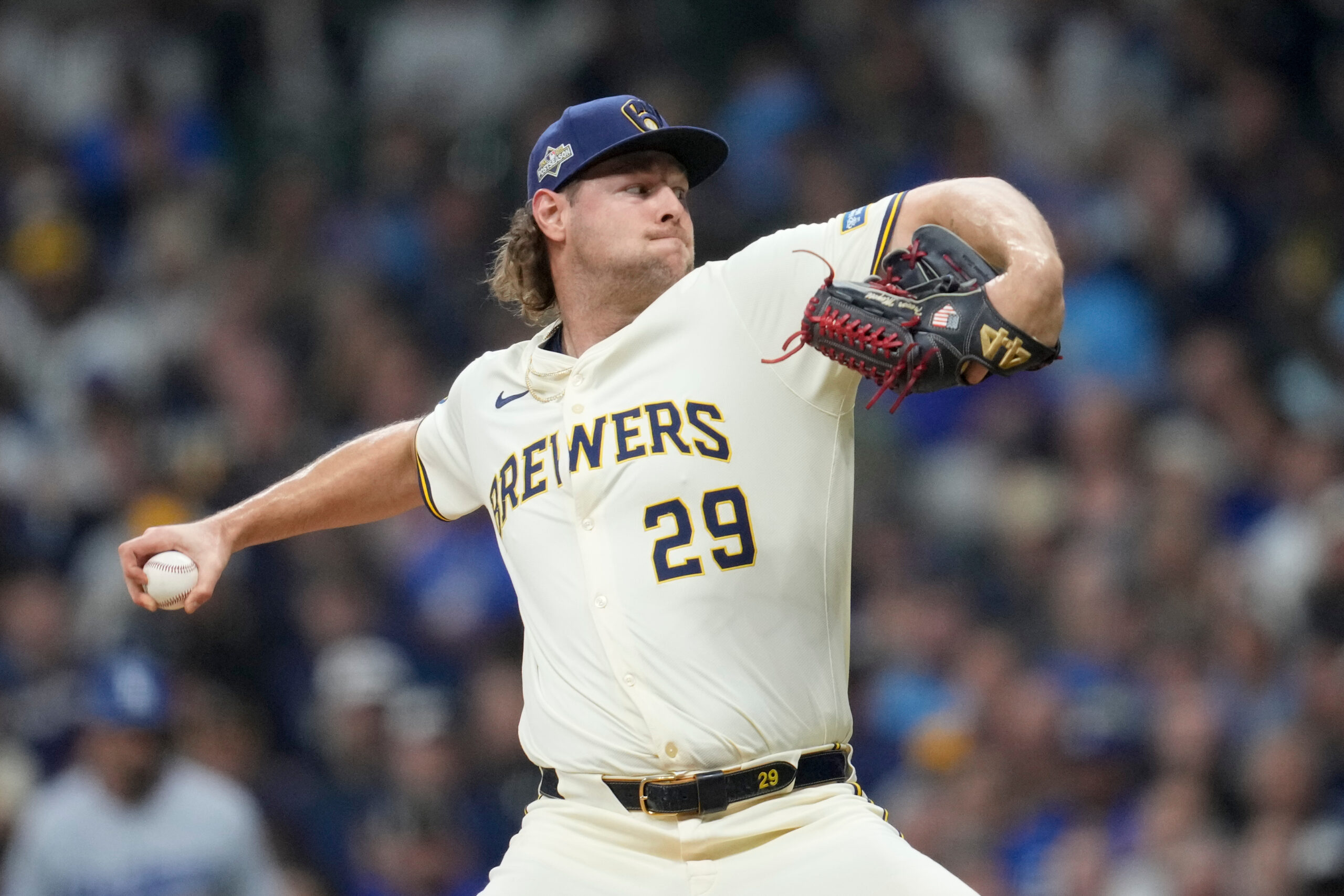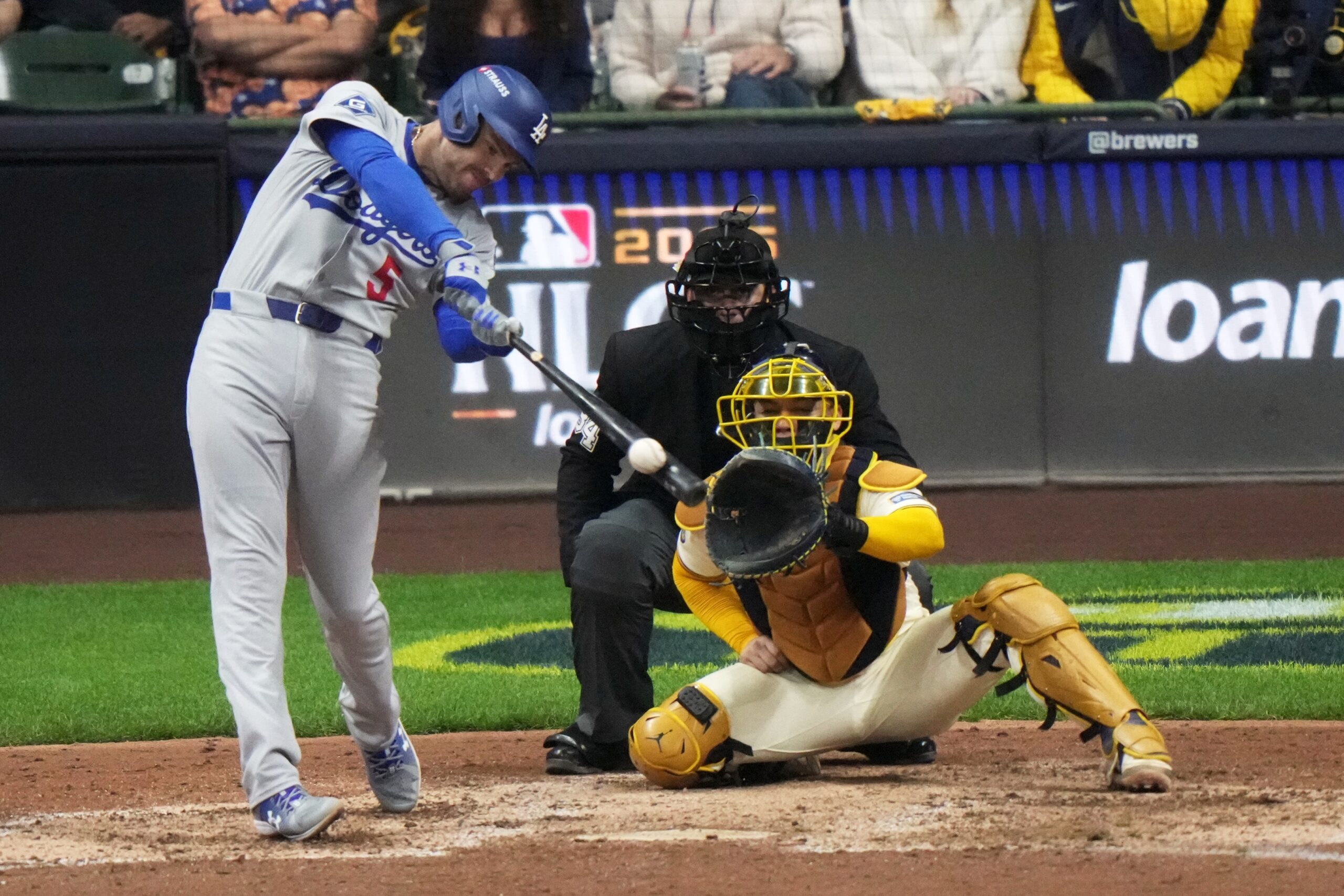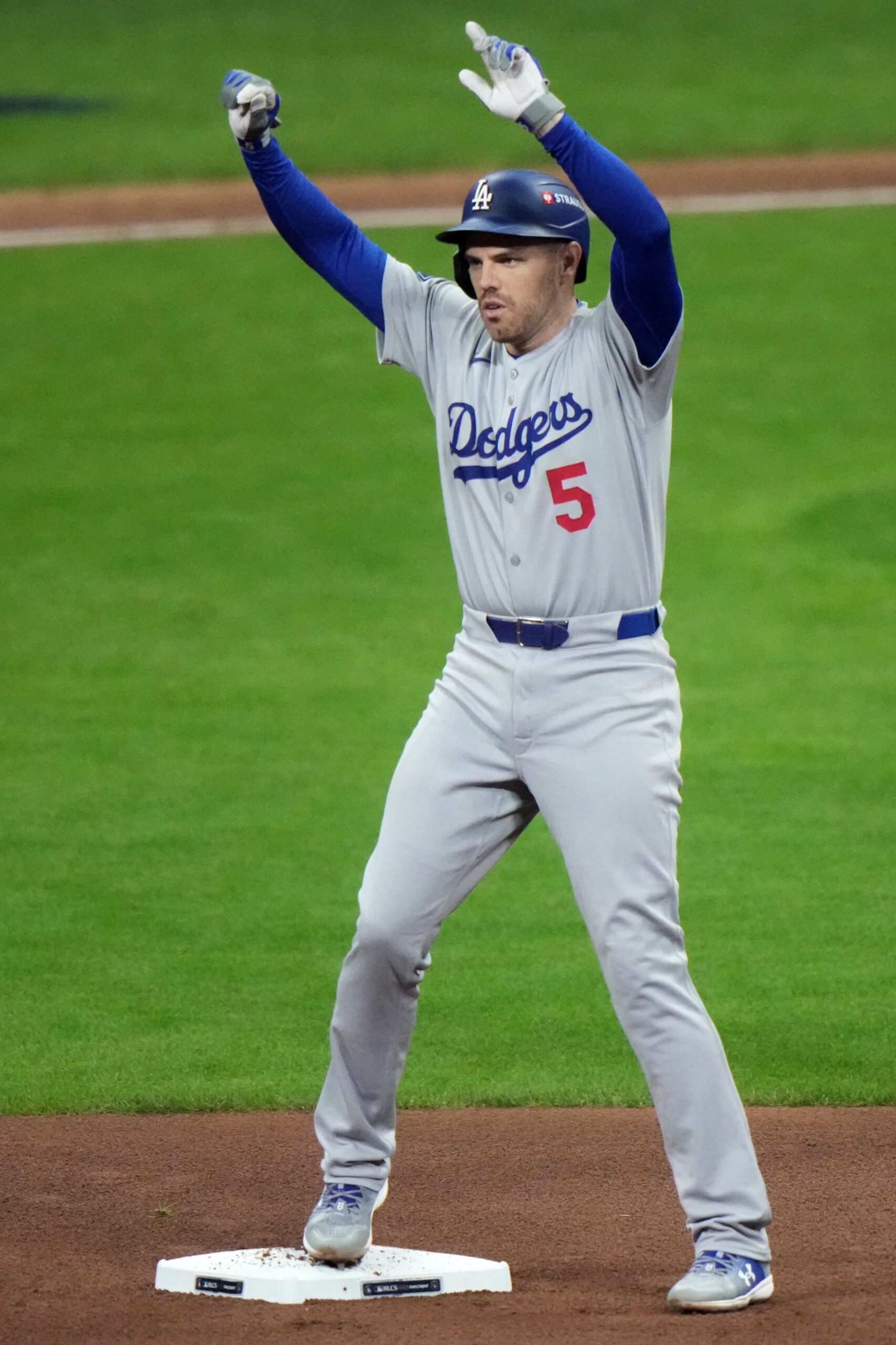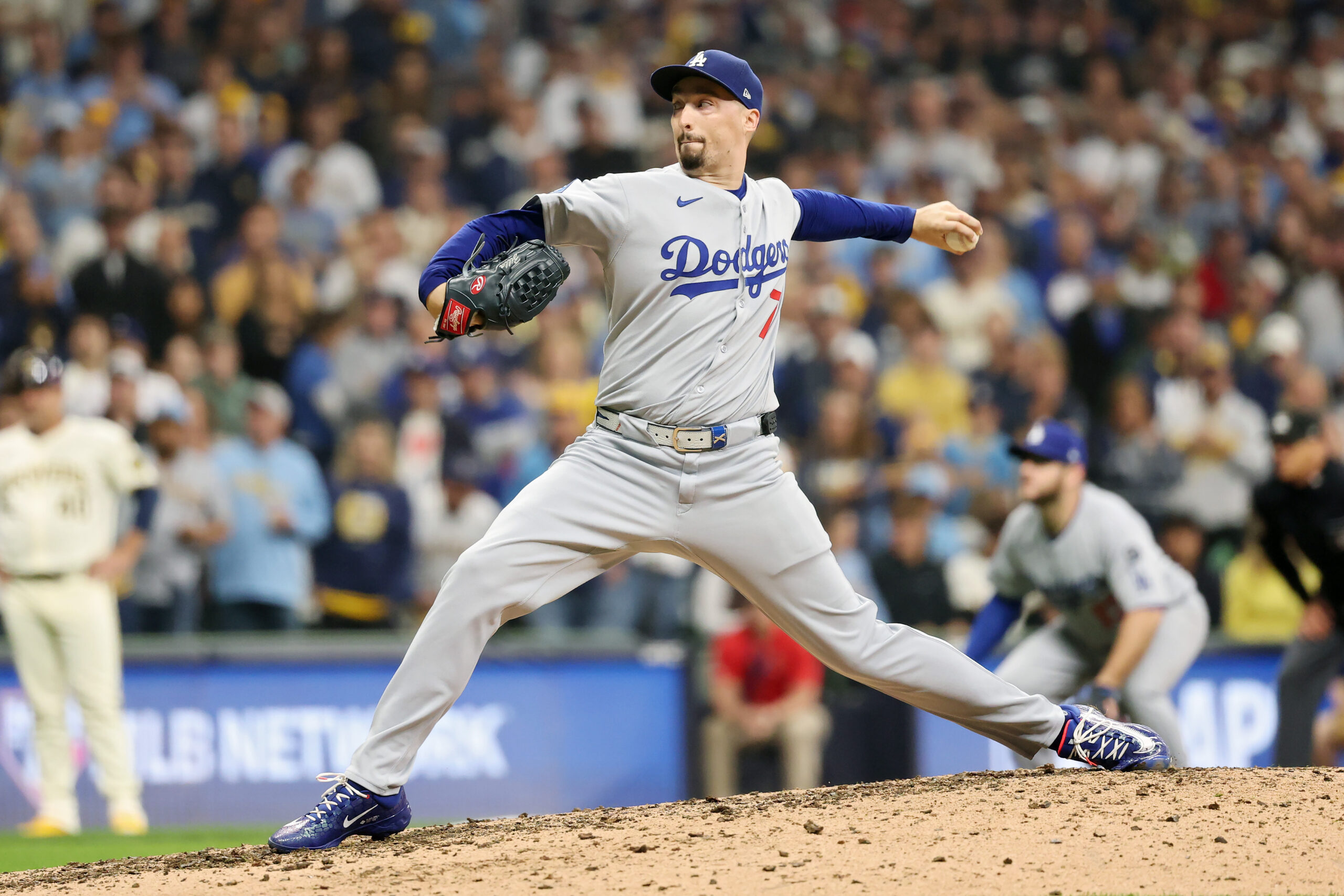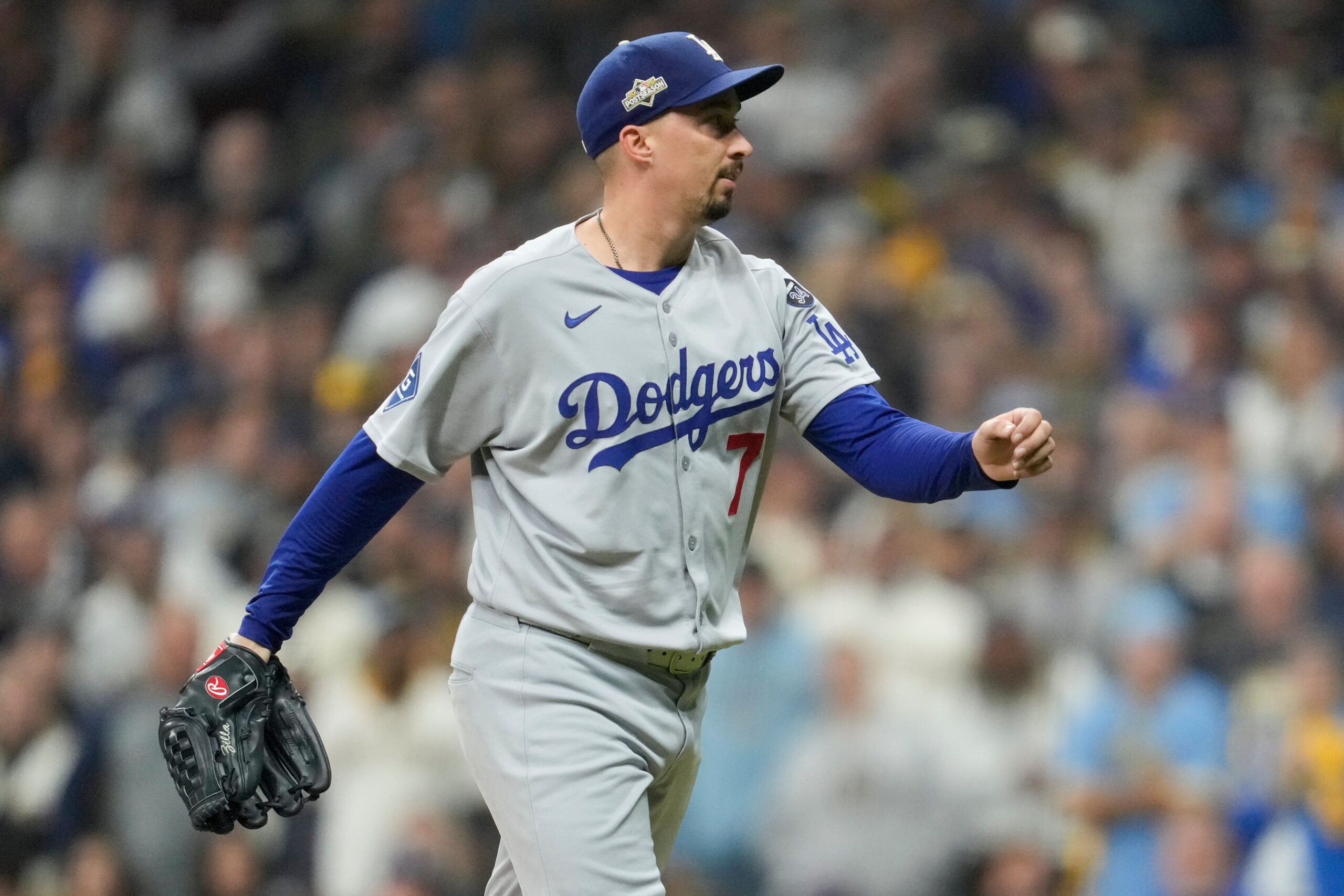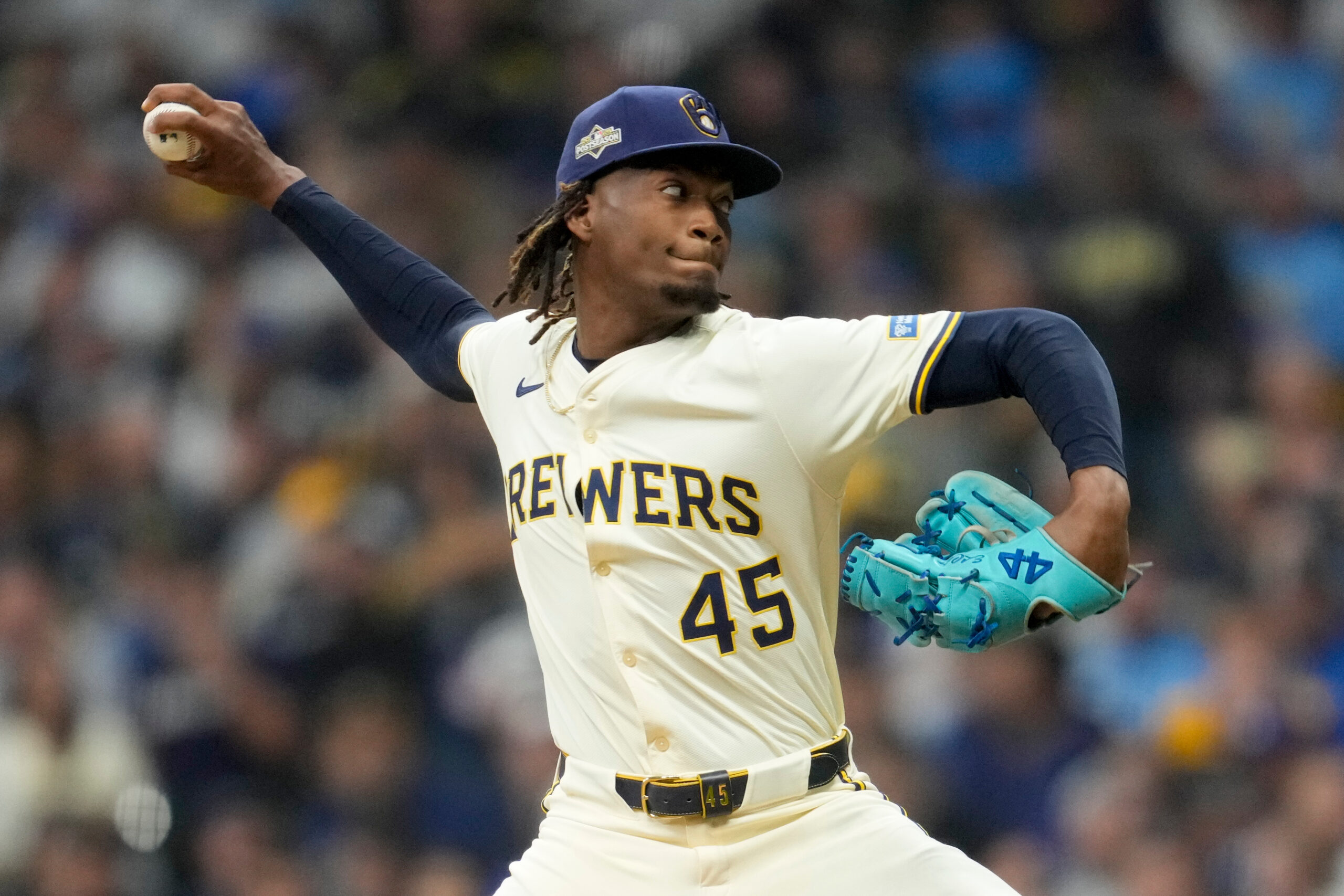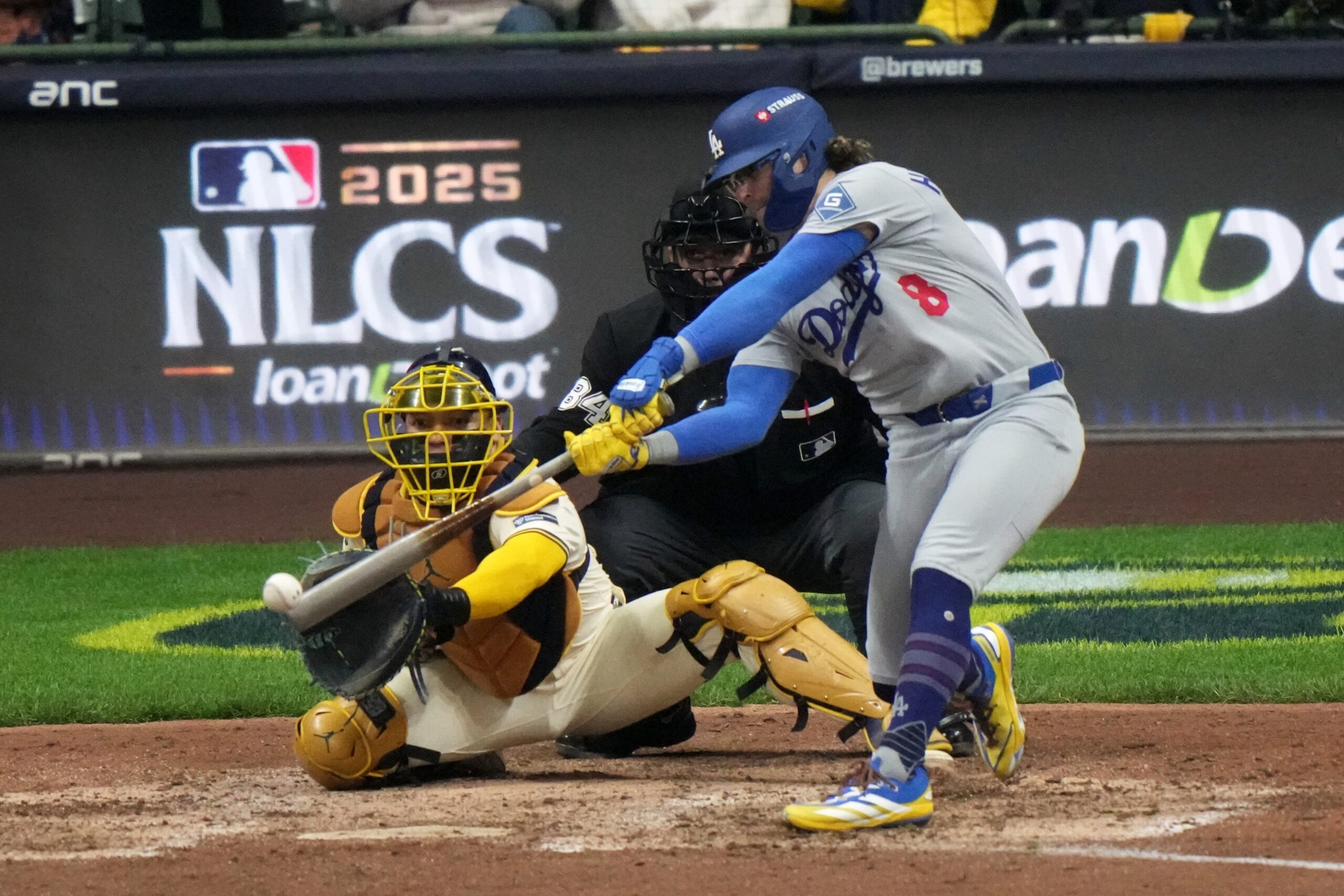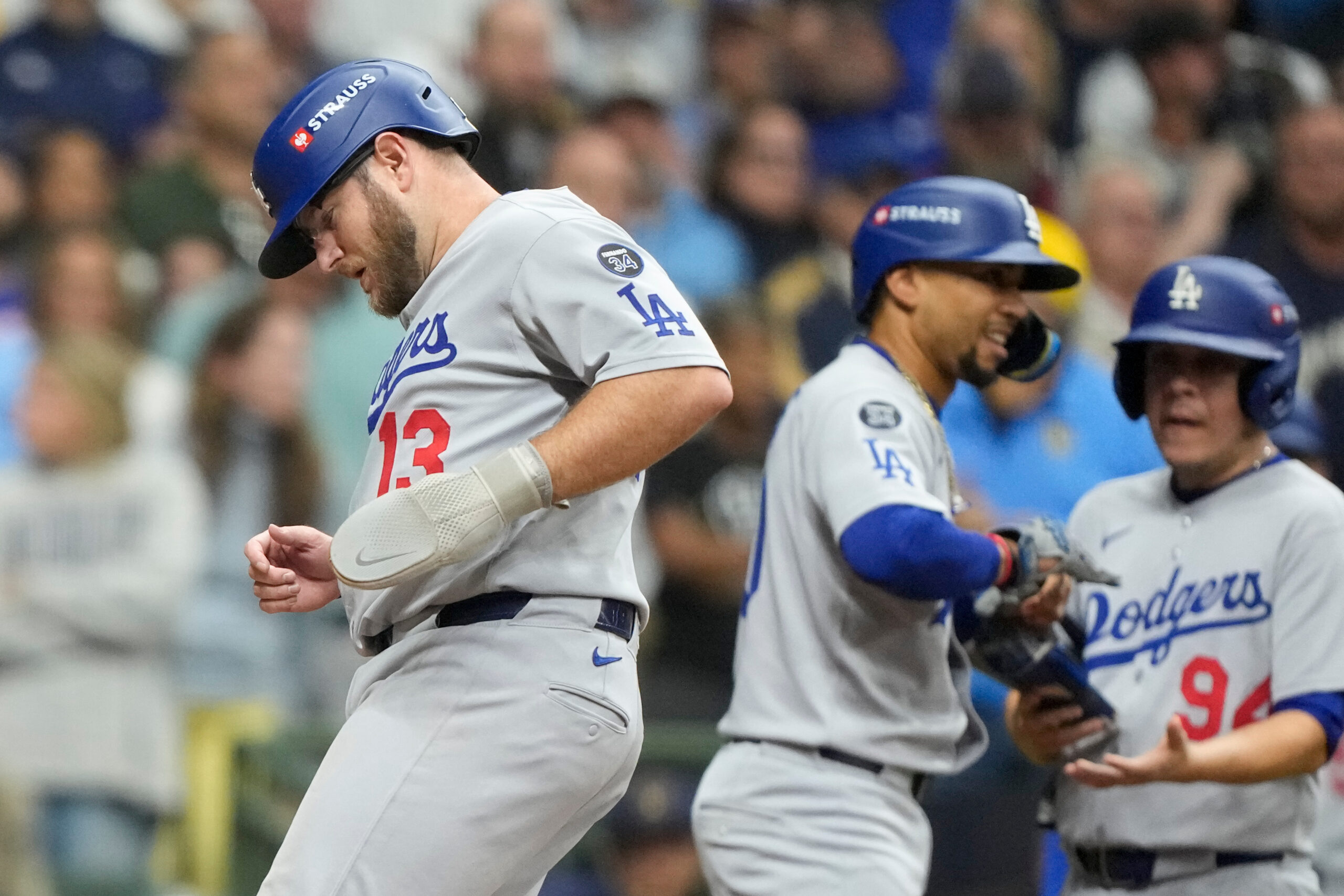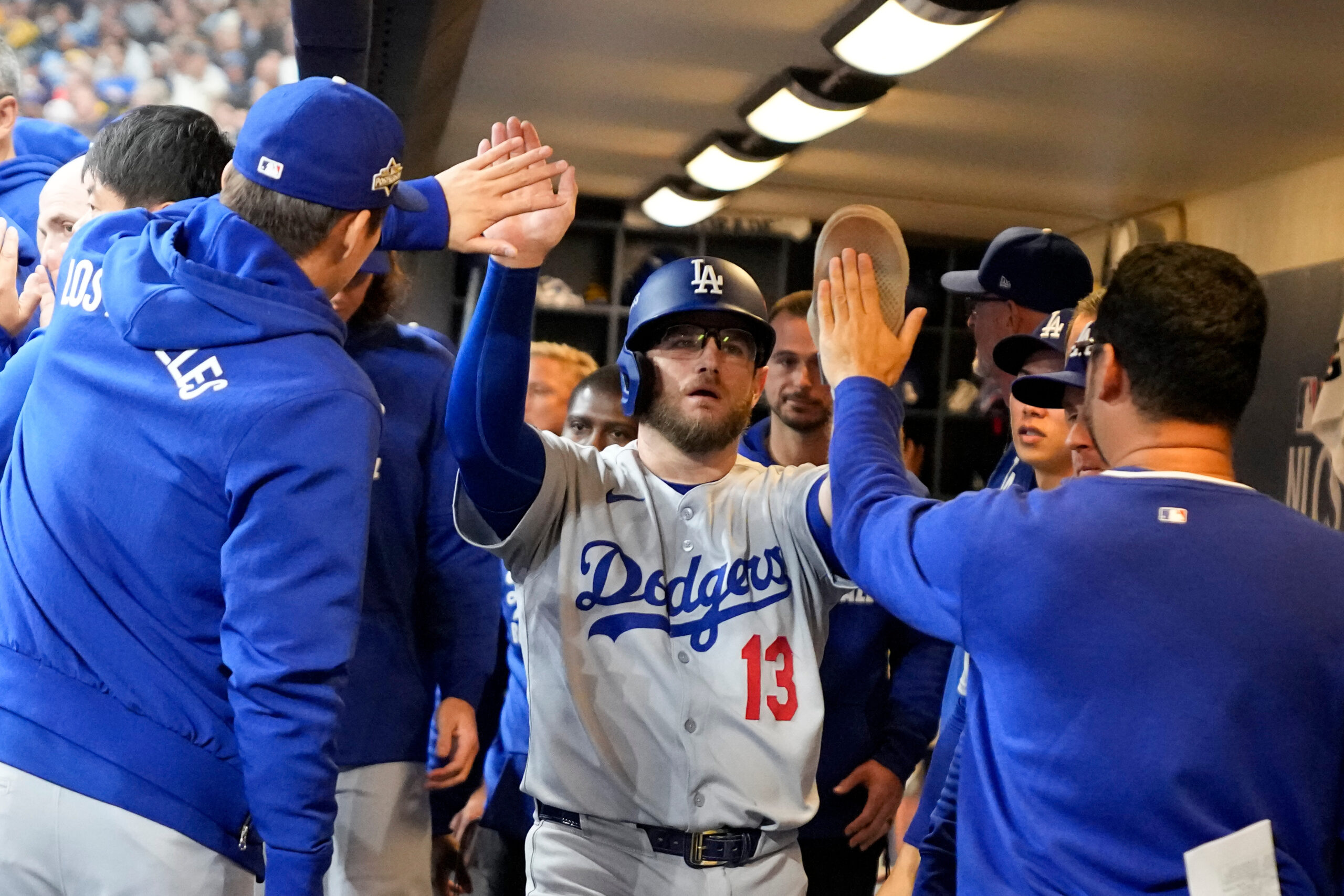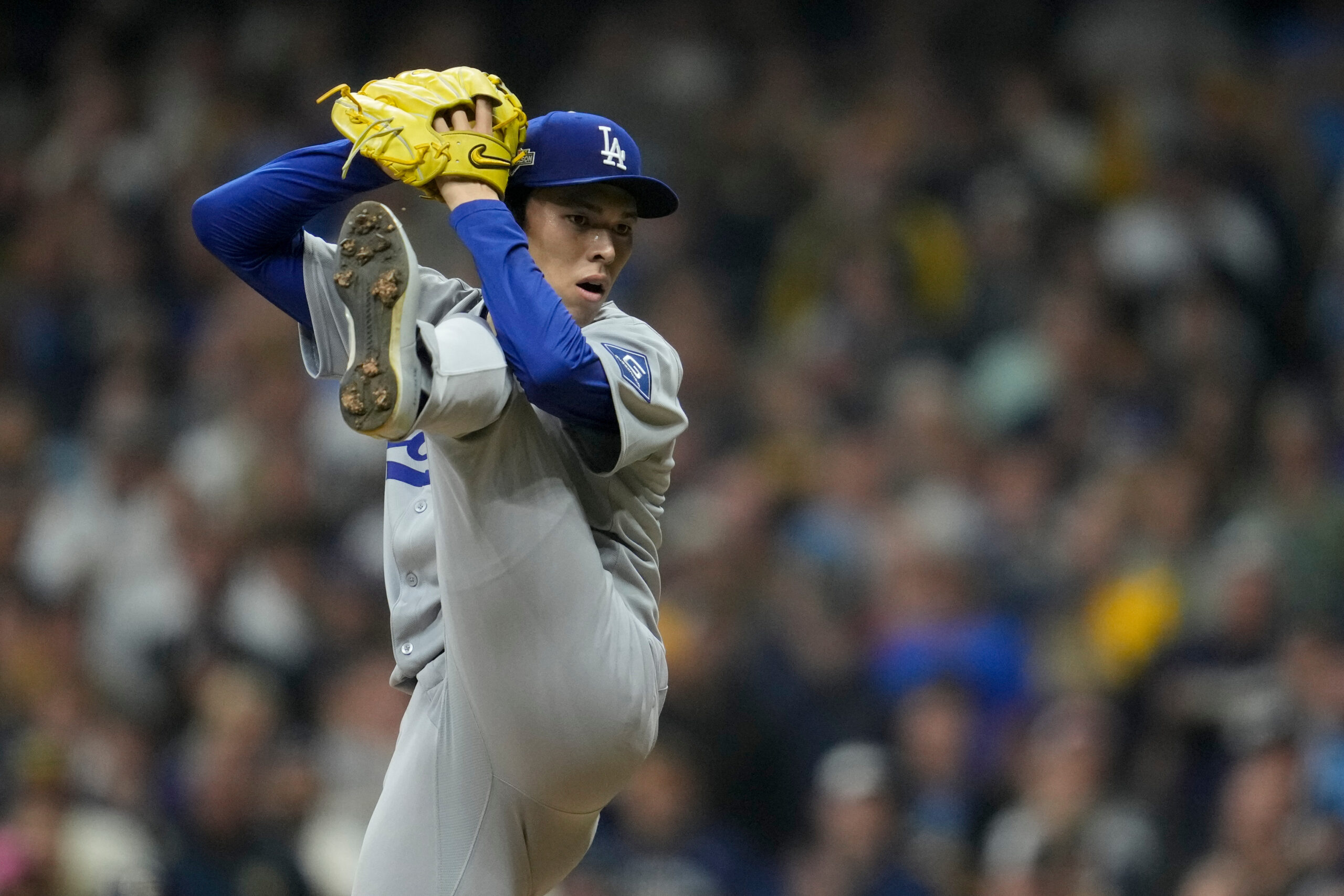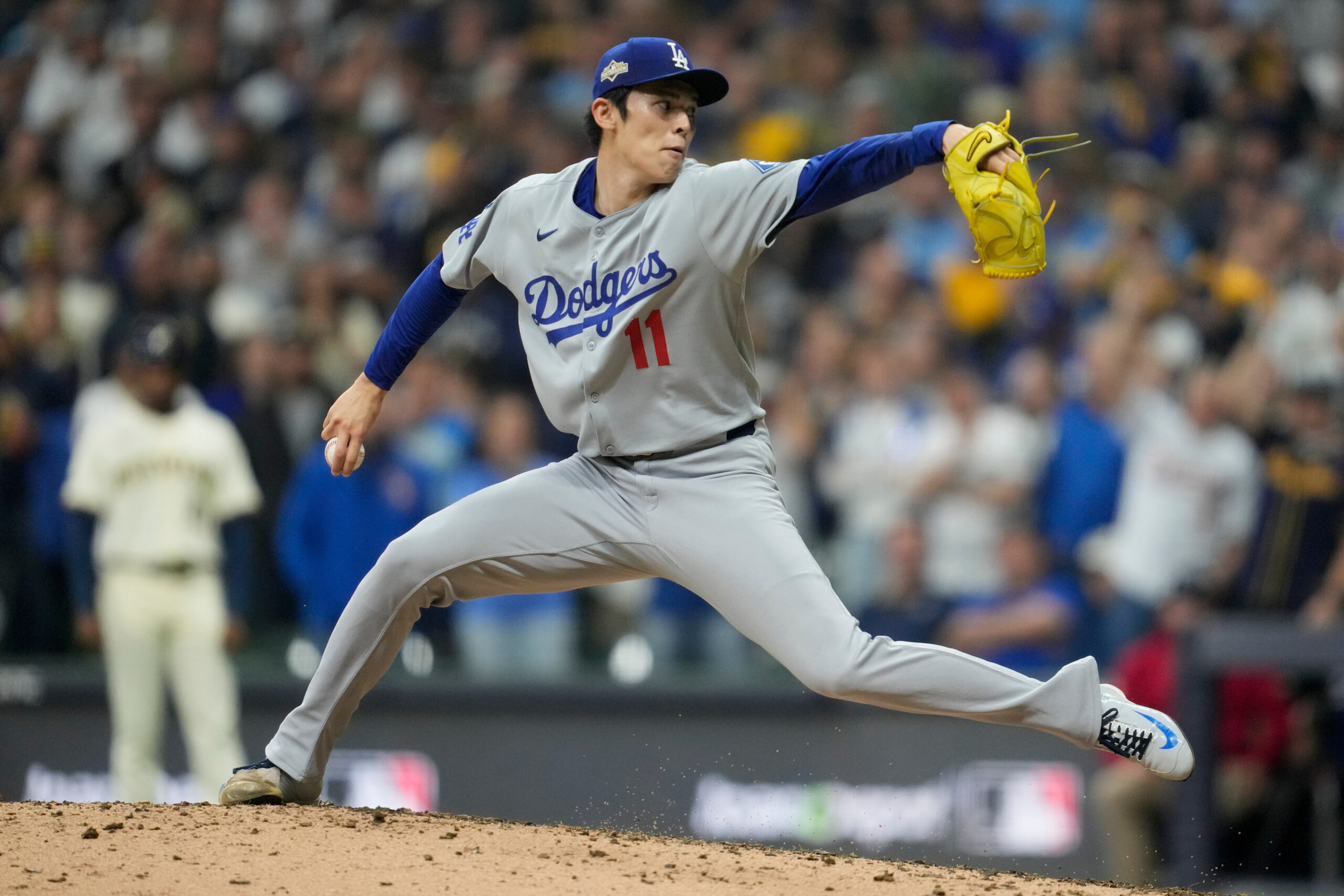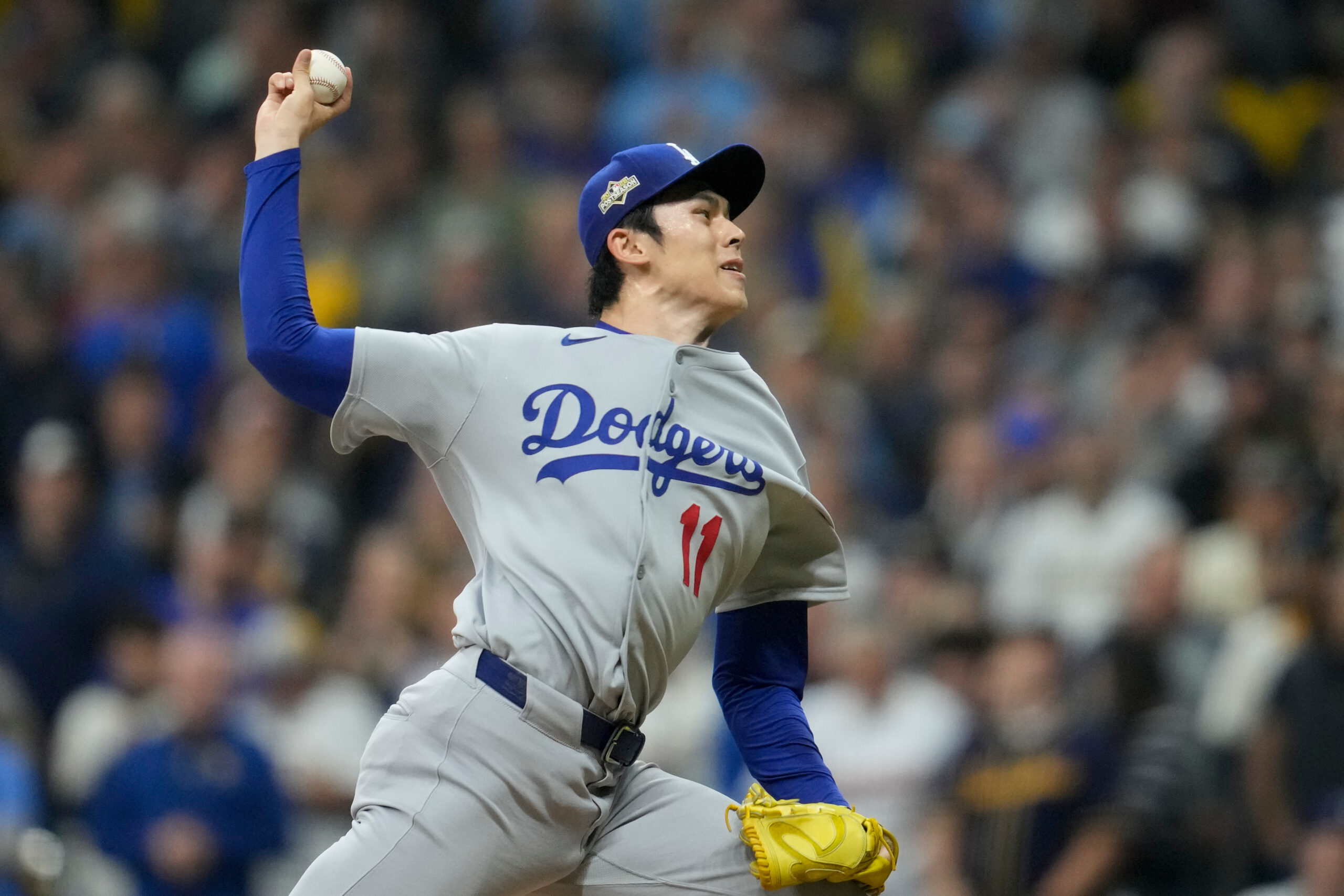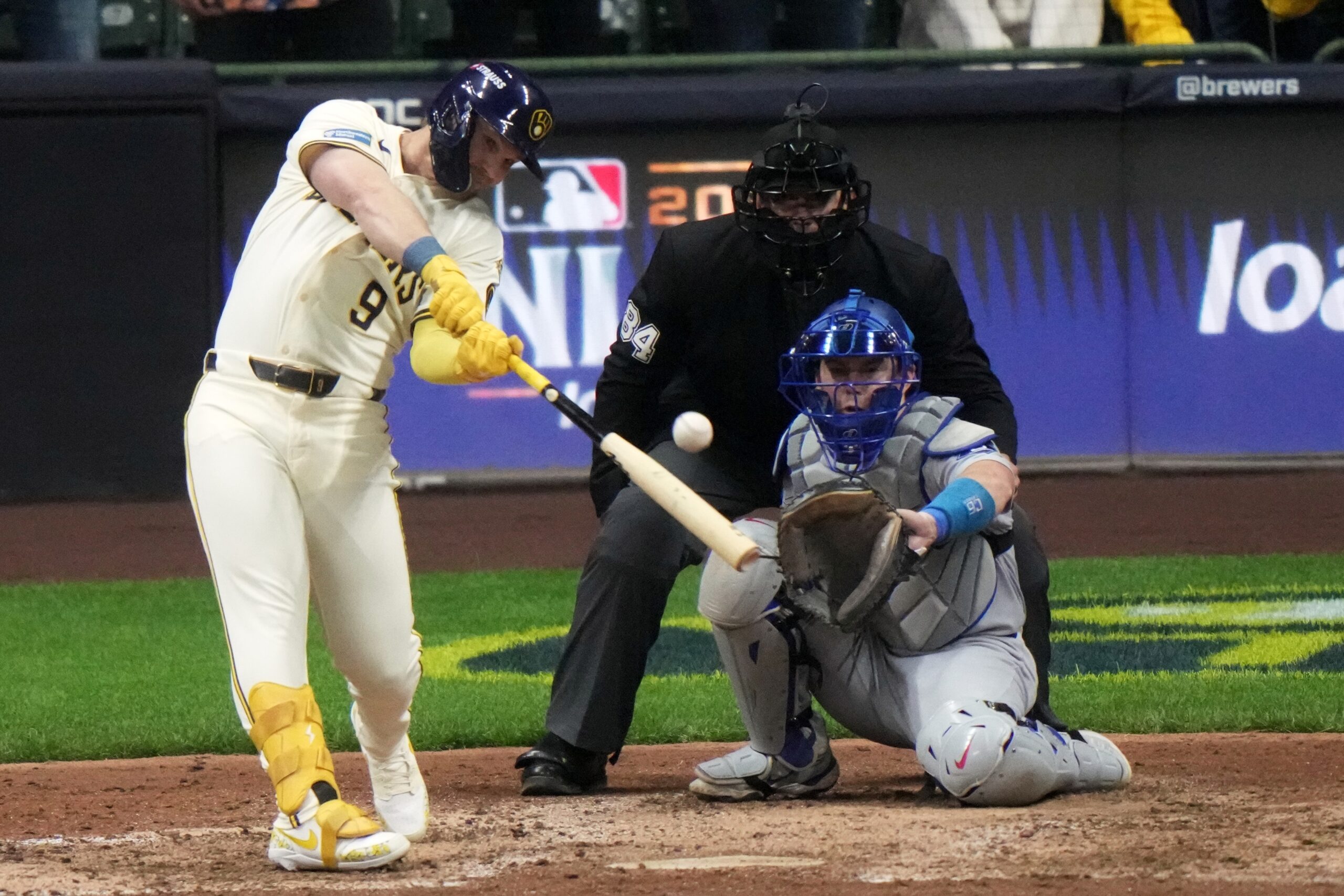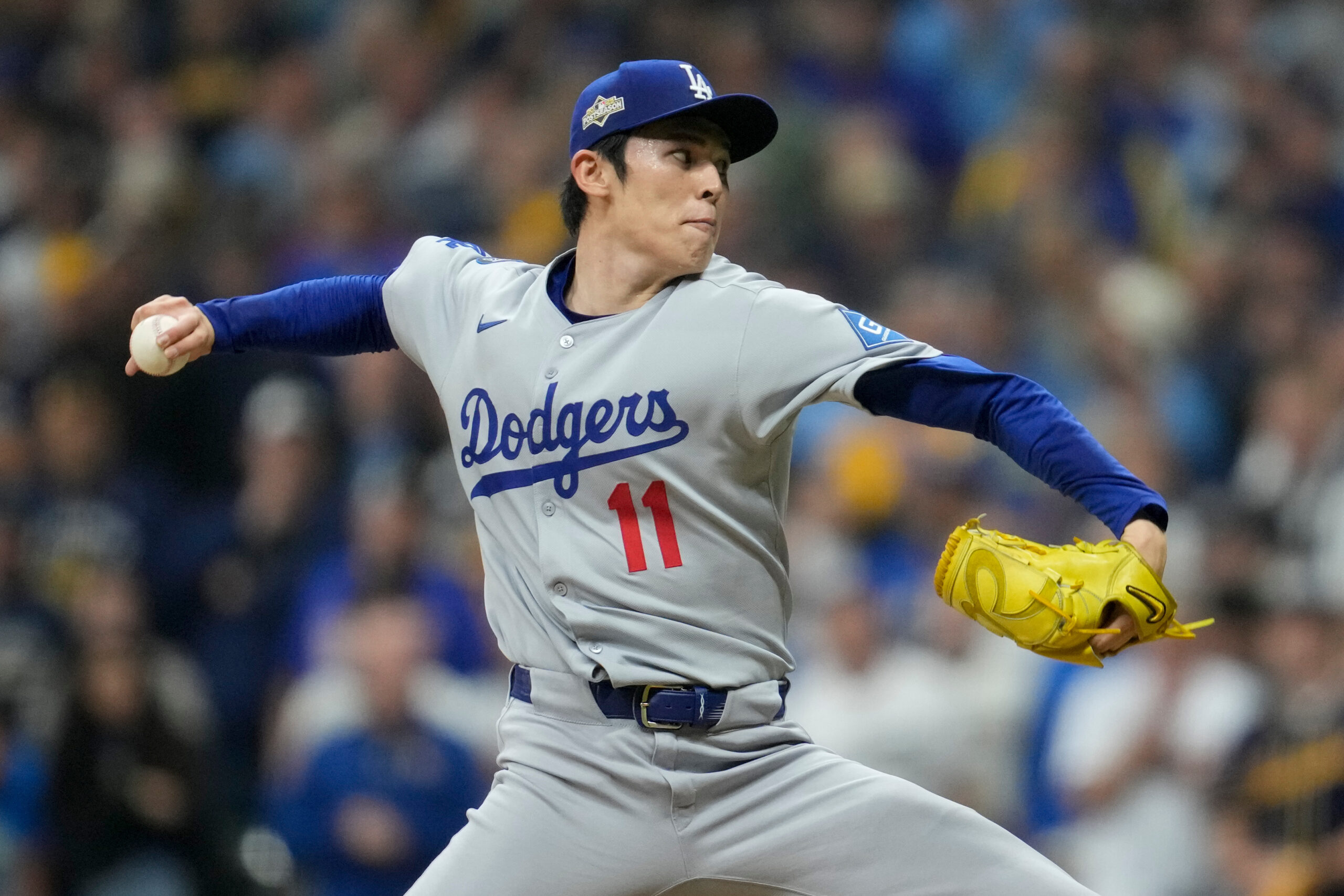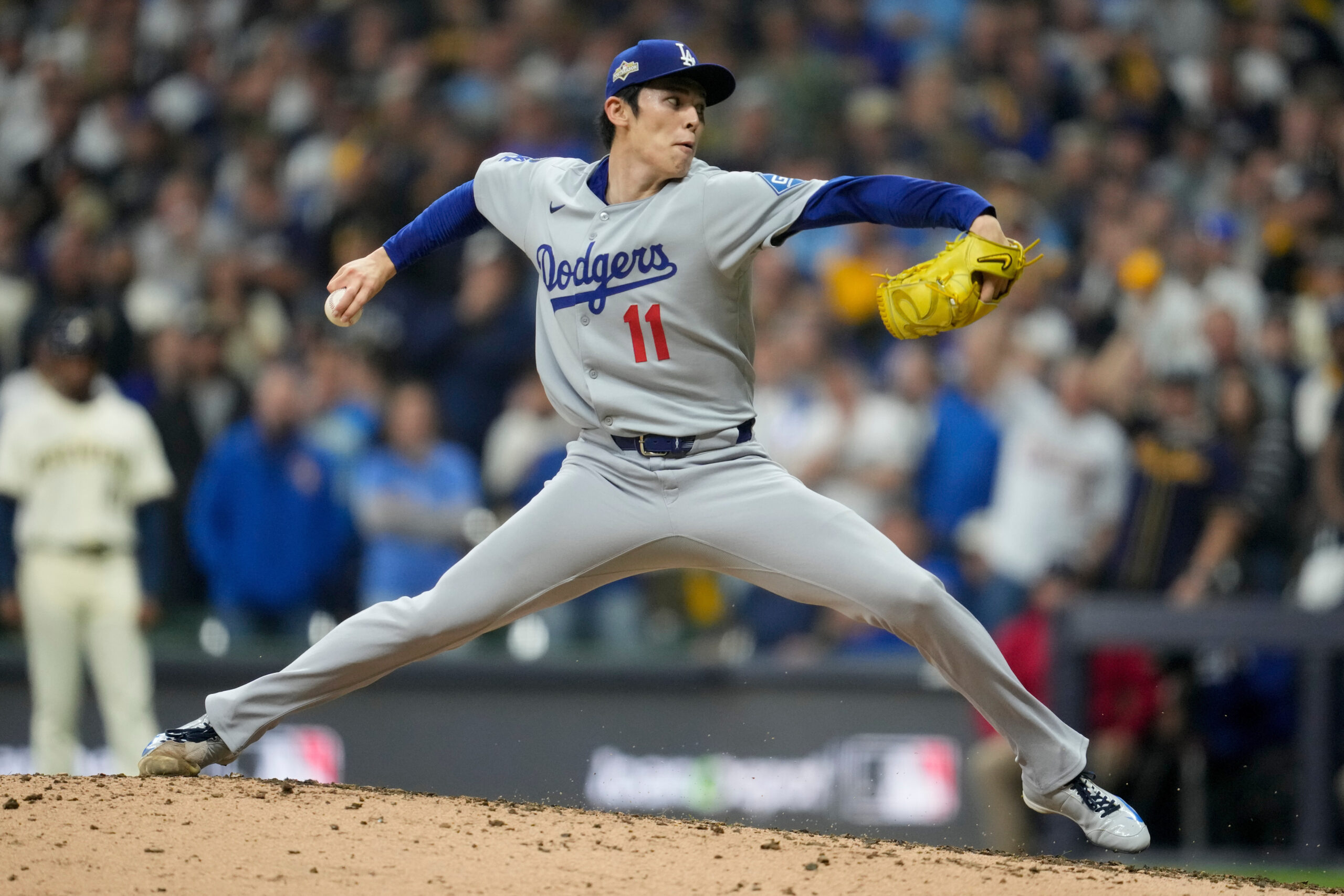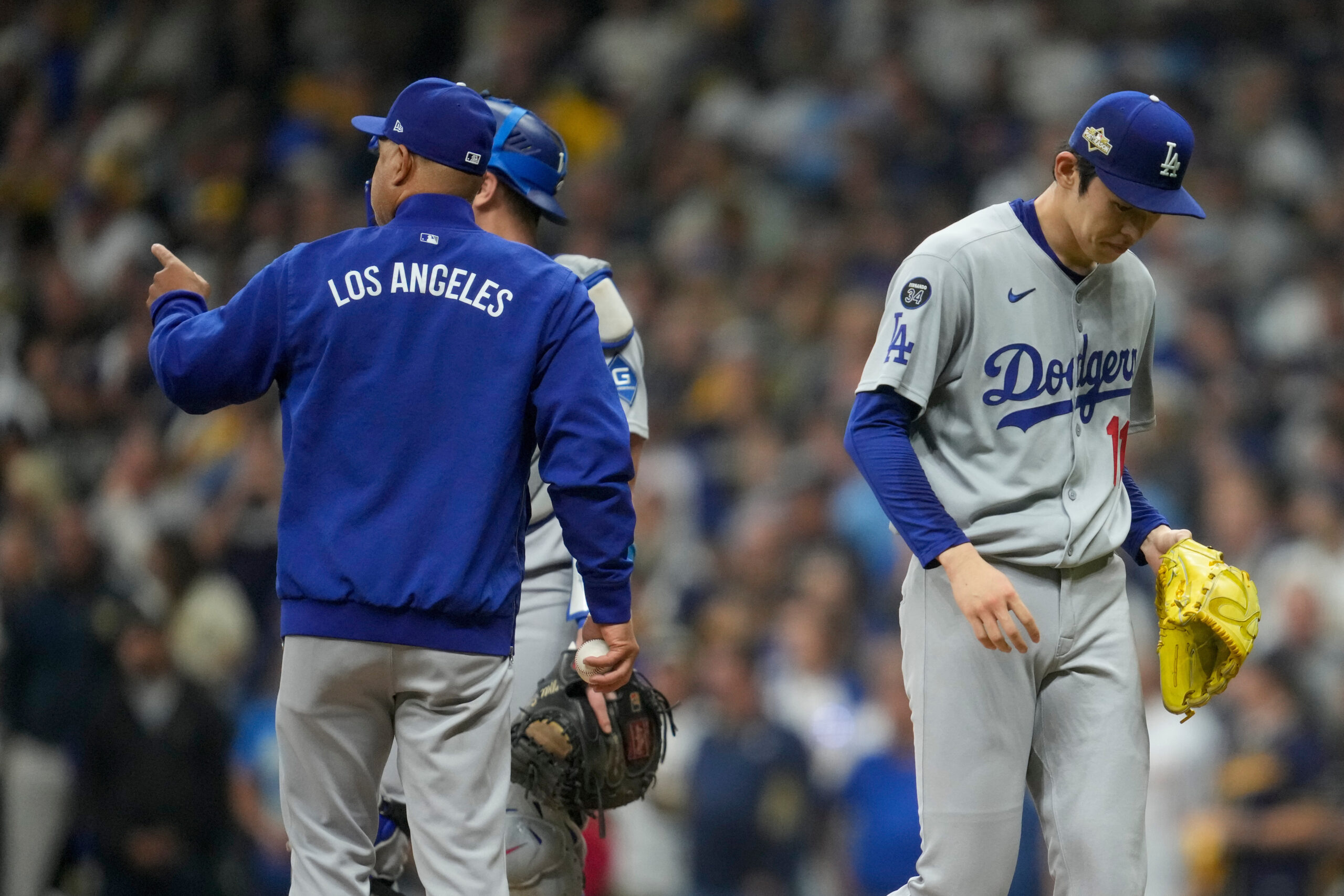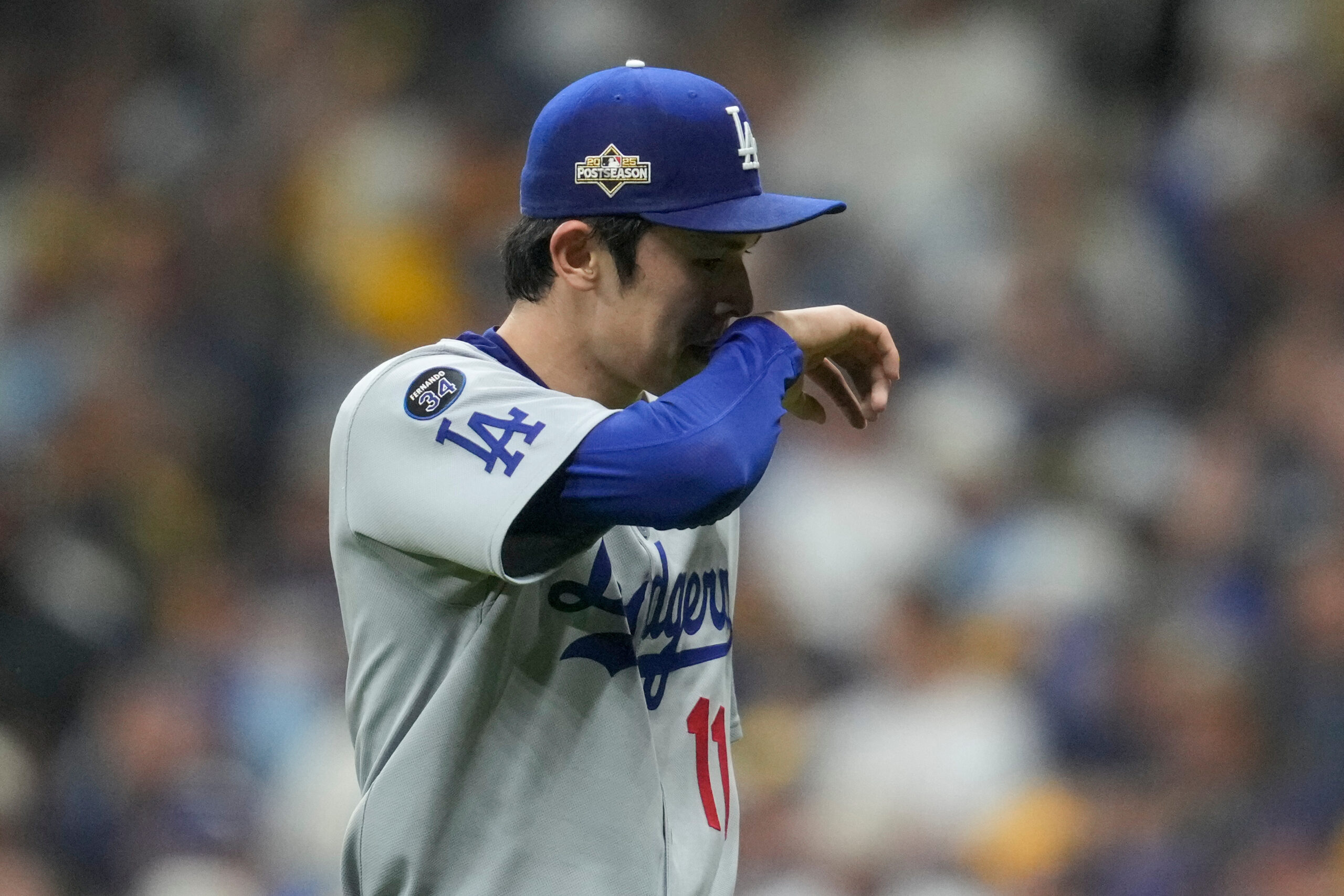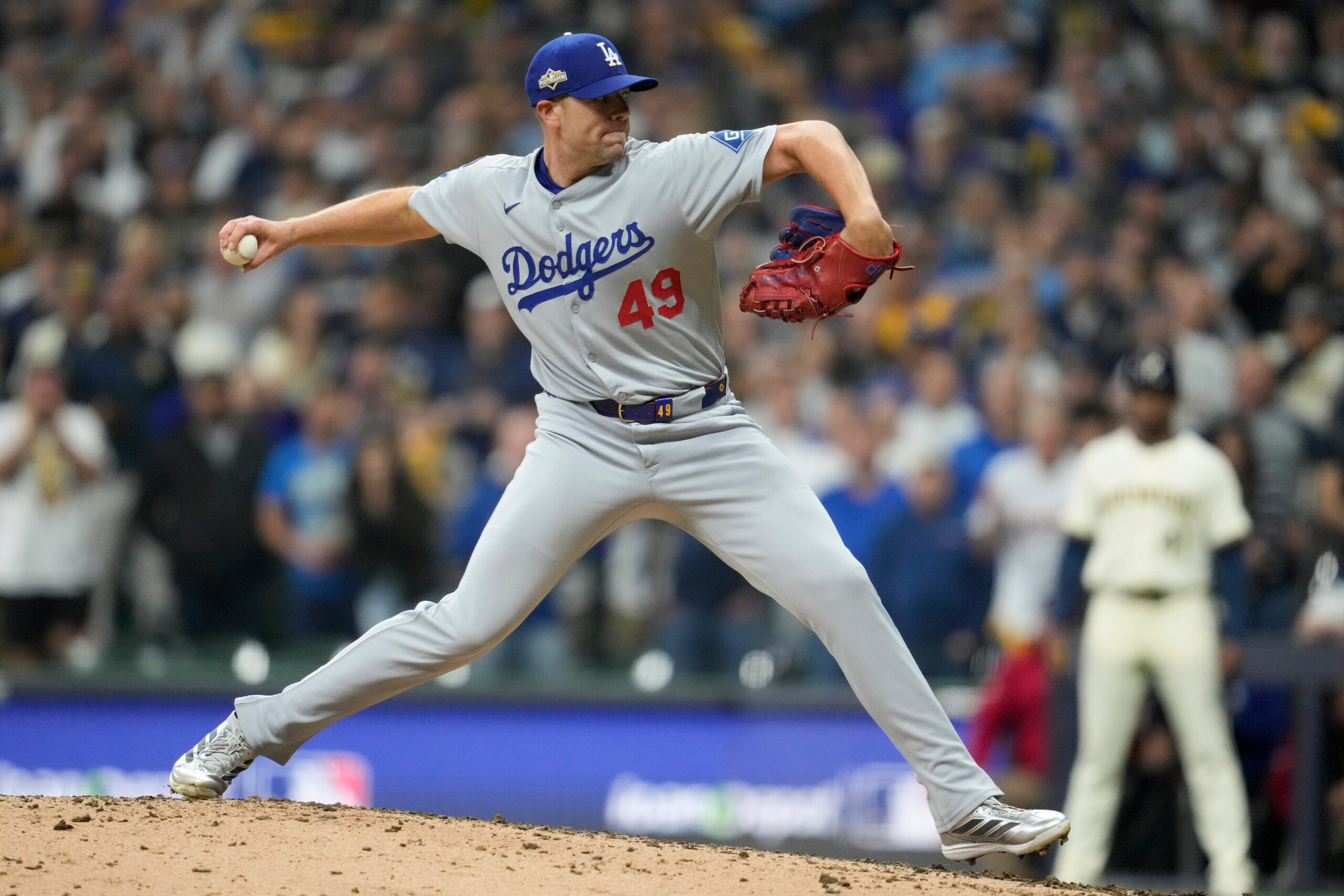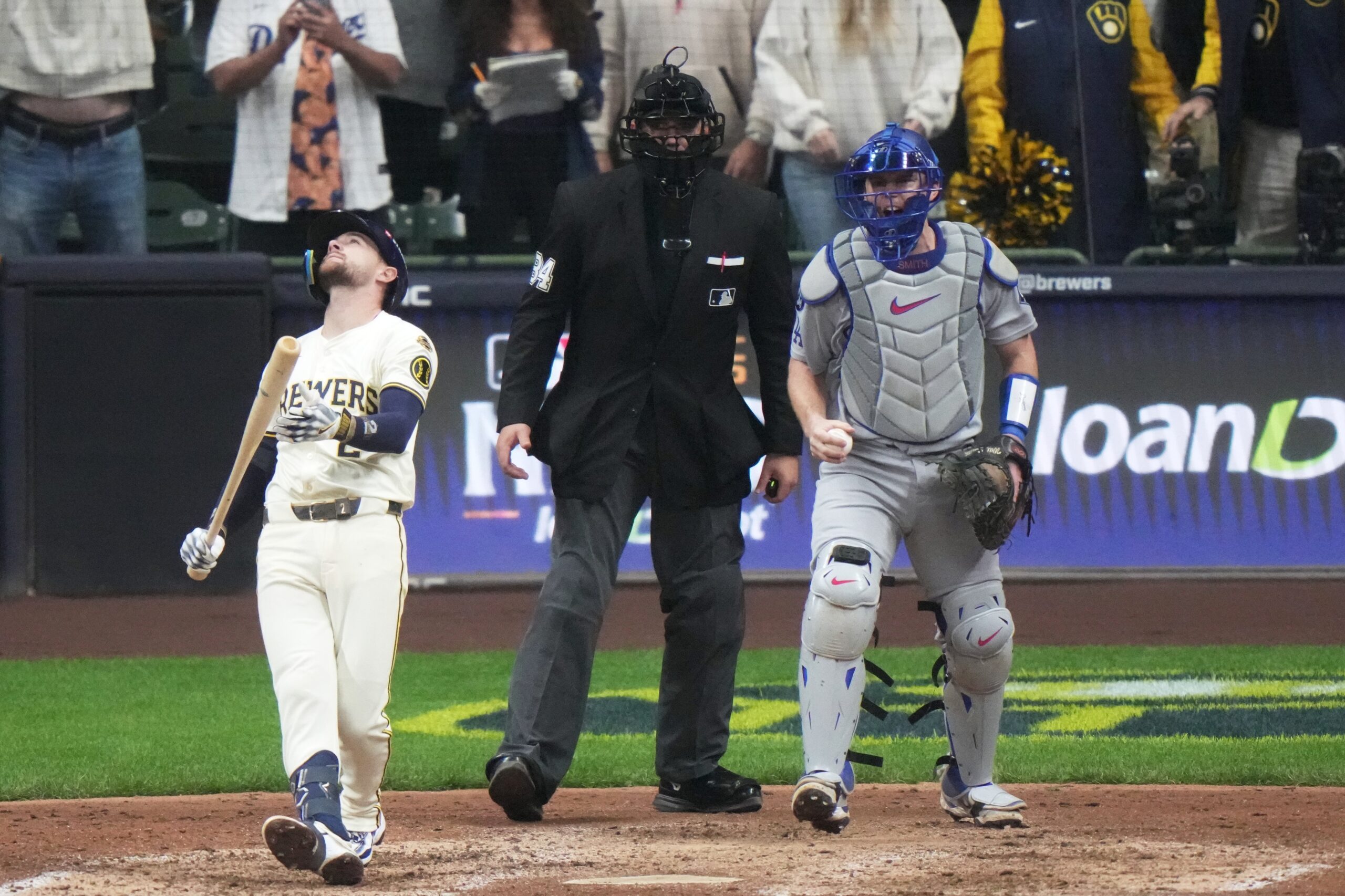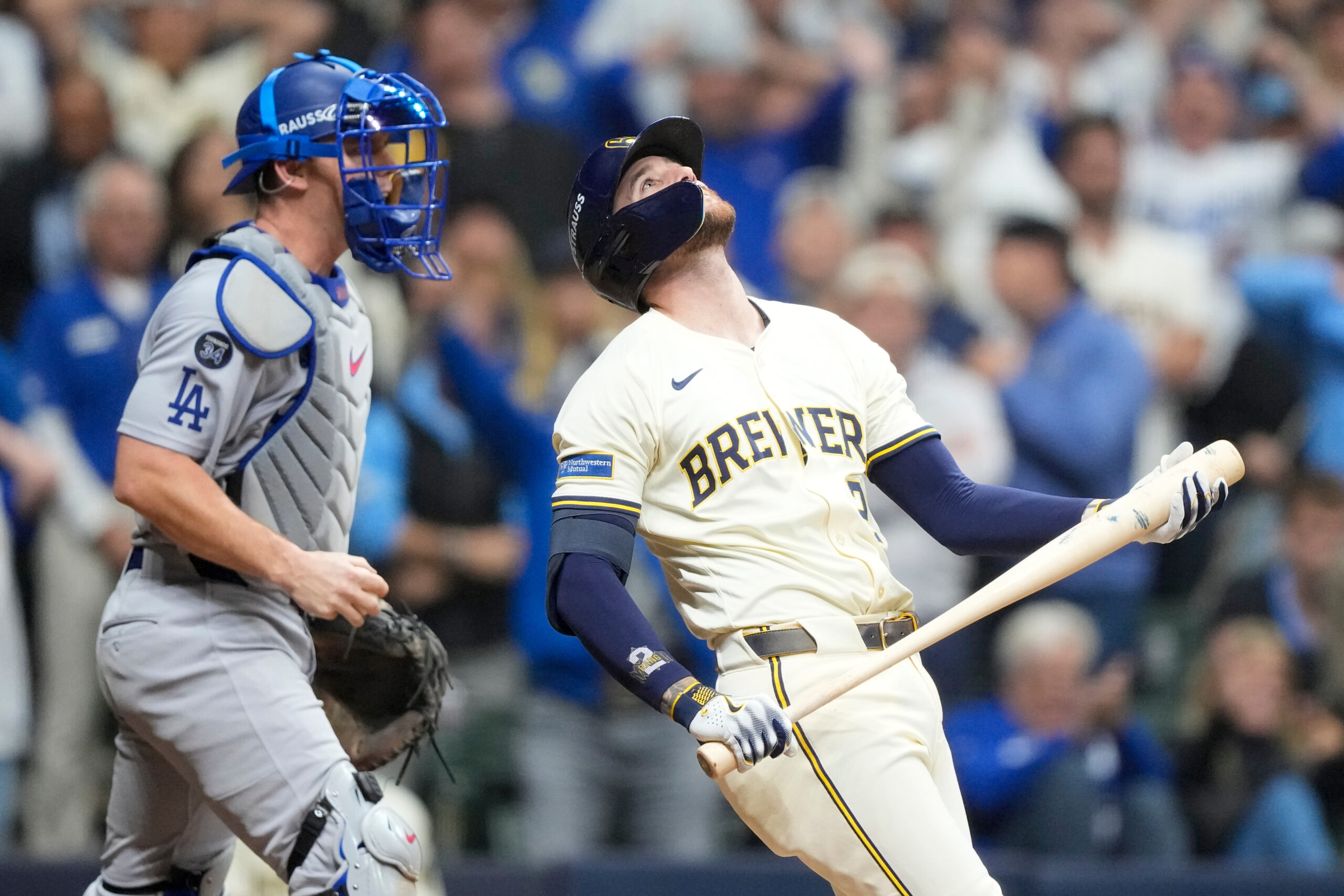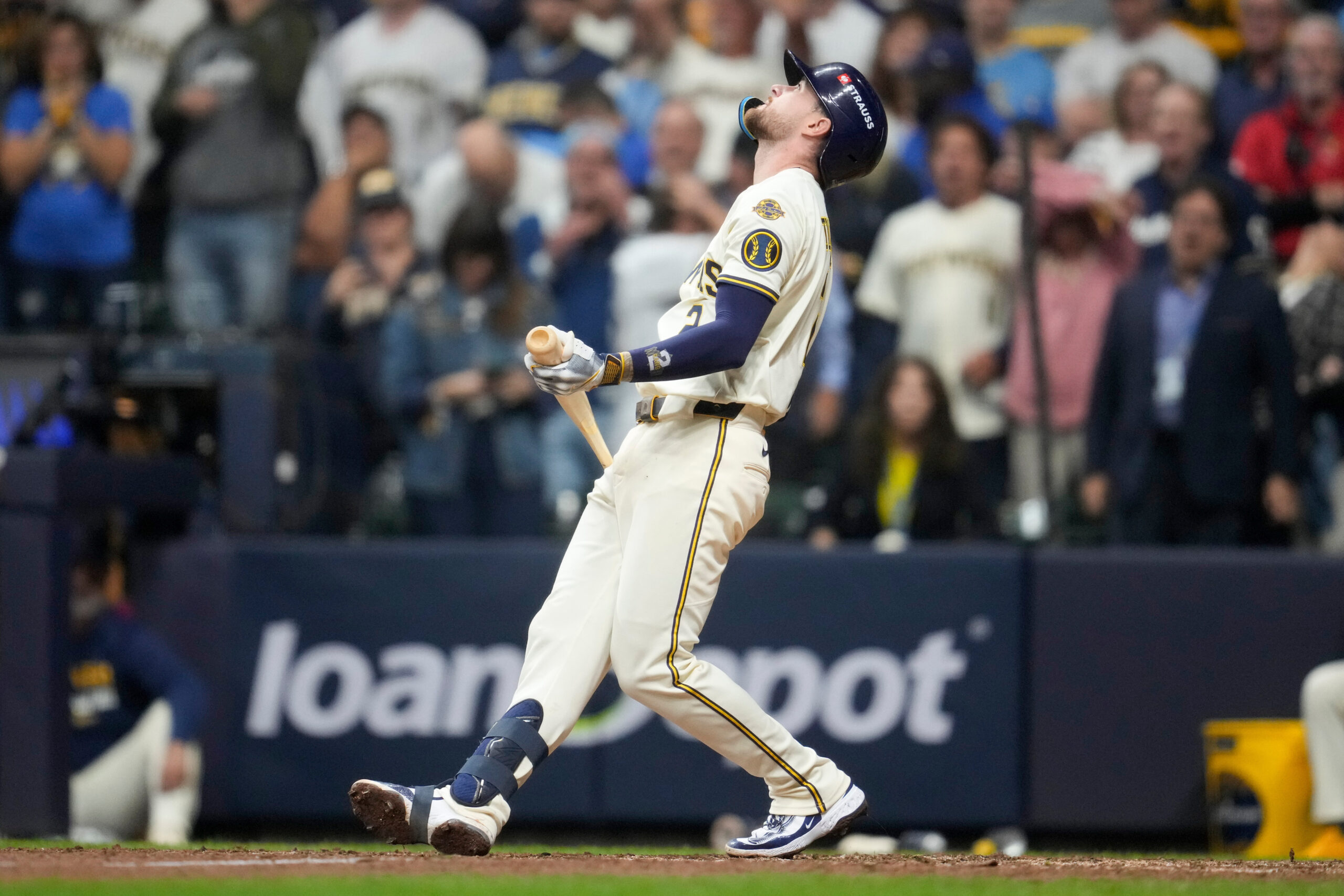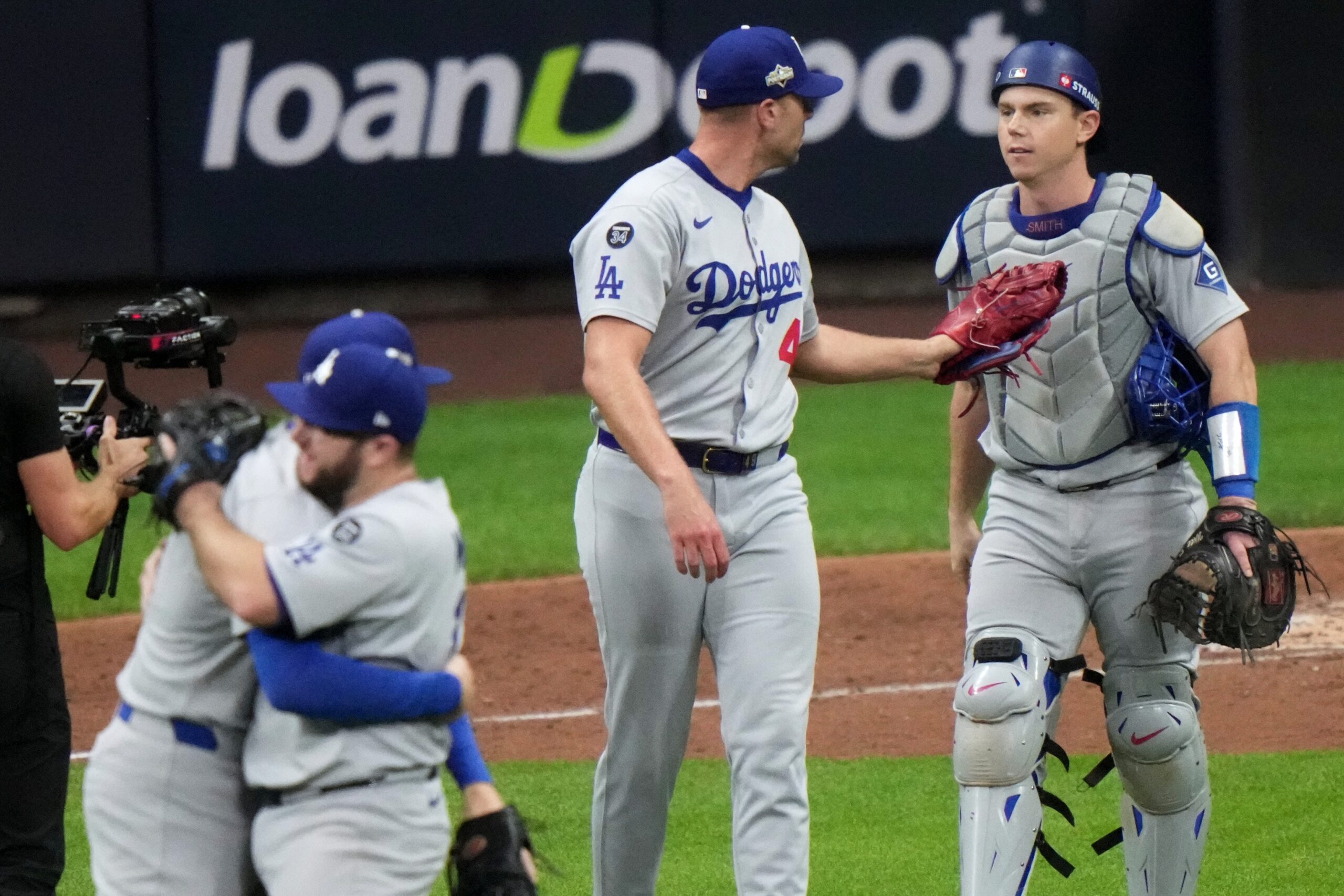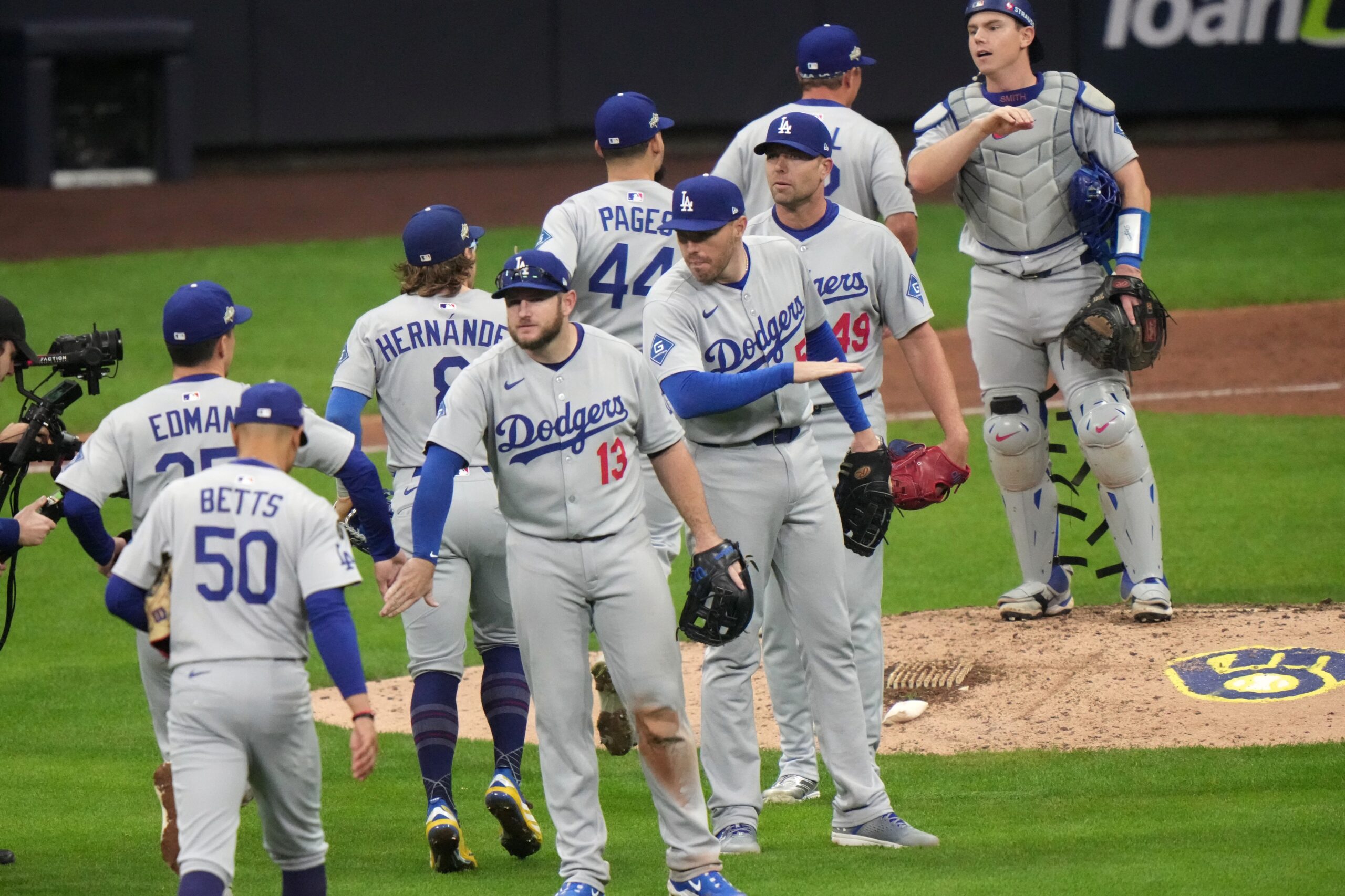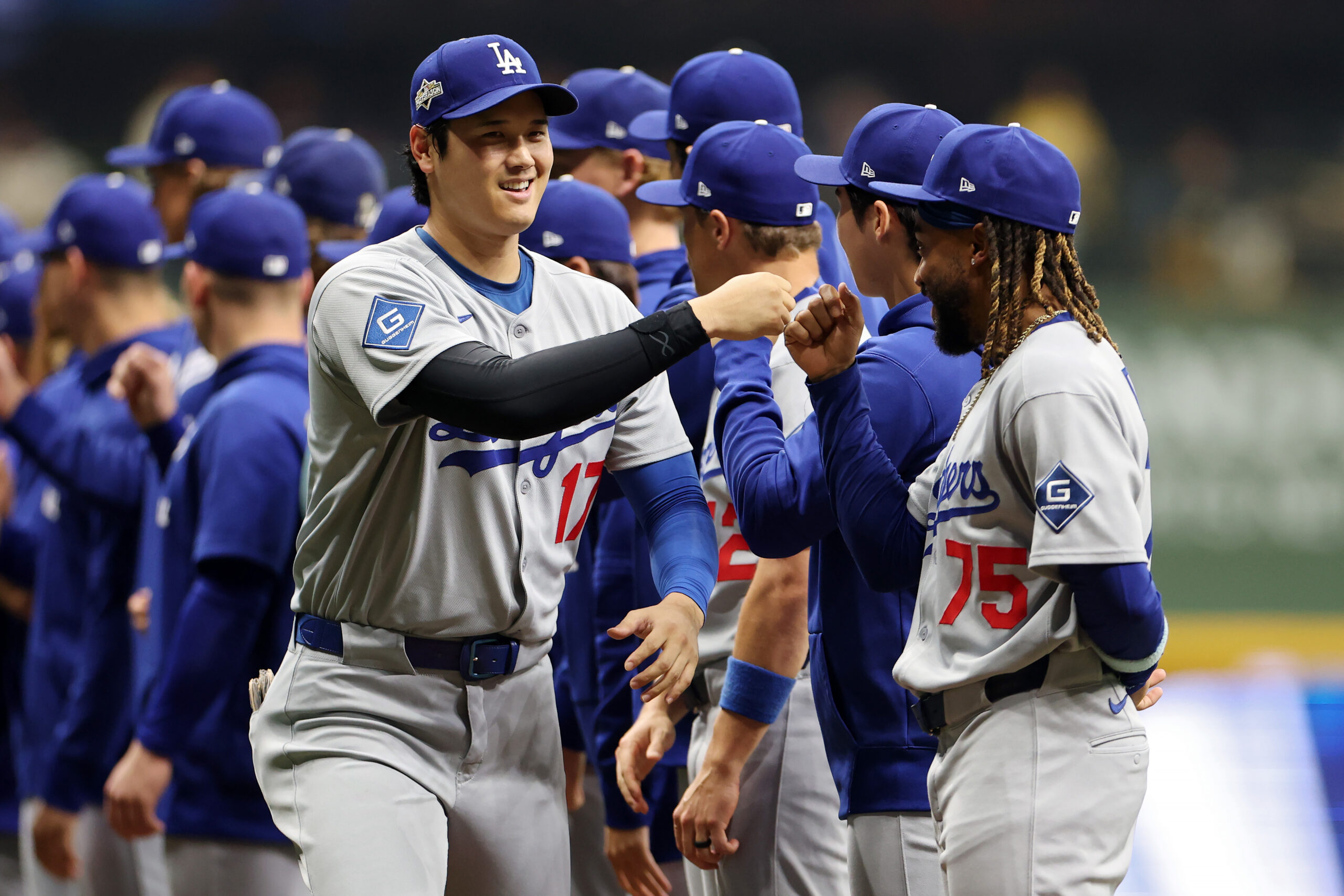MILWAUKEE — Runs were harder to come by than low-fat cheese curds or a vegan bratwurst at American Family Field on Monday night.
While Blake Snell was pitching a brilliant game on one side, the Milwaukee Brewers turned a head-spinning 404-foot double play on the other as the Dodgers and Brewers started their National League Championship Series with a 2-1 Dodgers victory in Game 1.
“He was amazing,” Dodgers shortstop Mookie Betts said of Snell’s dominant performance. “He put us on his back and he won it for us.”
Snell faced the minimum 24 batters in eight scoreless innings, allowing one hit in the third inning and then picking the runner off. He was the first pitcher to face the minimum through eight innings of a postseason game since Don Larsen’s perfect game during the 1956 World Series.
“He was electric,” third baseman Max Muncy said. “He was lights out. He had a really good idea of what he wanted to do out there and he executed to perfection.”
The run prevention was elite on both sides. The only run in the first eight innings that couldn’t be prevented was a solo home run by Freddie Freeman in the sixth.
The Dodgers didn’t get their first hit of the game until the fourth inning. A leadoff walk of Teoscar Hernandez and back-to-back singles by Will Smith and Tommy Edman loaded the bases with one out for Muncy.
That’s when things got confusing.
Muncy drove a fly ball over the wall in center field. Brewers center fielder Sal Frelick jumped and got a glove on it but the ball caromed off his glove and the top of the wall, bouncing back into the field of play – where Frelick caught it, thoroughly confusing the three Dodger baserunners.
“I didn’t see it hit the wall,” Smith said. “I just thought he kind of brought it back in and caught it. So I thought it was an out, maybe a sac fly. Obviously it hit the wall and that’s not what happened.”
At third base, Hernandez had tagged up when Muncy hit the fly ball. He left the base when Frelick made his leaping attempt but went back when the ball bounced off the wall and into Frelick’s glove. That delay was enough for the relay throw from shortstop Joey Ortiz to beat Hernandez home, where catcher William Contreras had his foot on the base for a force out.
By rule, Hernandez could have headed home as soon as Frelick touched the ball – whether he caught it on the rebound or not.
“It happened fast,” Dodgers manager Dave Roberts said. “I didn’t know he didn’t catch it, to be quite honest. We go over that rule. Teo knows the rule. I think right there he had just a little bit of a brain fart, appreciating that when it does hit the glove you can tag there. But then he tagged, did it correctly, then saw he didn’t catch it, went back – that was the mistake.”
Smith never tagged up at second on the initial play at the wall then headed back to second base when he thought Frelick had made the catch, waving at Edman (nearly at second base) to go back to first. Contreras trotted down to third base and touched the bag for a double play.
“With Sal running back, he gloves it first and it hits the wall. At that point it’s no catch, right?” said crew chief James Hoye, who was at first base. “(Left field umpire) Chad (Fairchild), on that six-man system, it’s his job to go out on that ball, from the left field line, to go out and get that ball.
“I see him (Fairchild) immediately saying no catch. They throw the ball in, and then all of a sudden you turn around and there’s runners everywhere, right? At that point guys are going back, going forward. The coaches are spinning.”
It took an on-field meeting of the entire umpiring crew and a replay review to sort things out.
“I obviously didn’t see one signal. I just read it how I read it,” Smith said.
“We went back and saw the left field ump was the one who called it. No one else called it. But I didn’t think twice about it. I didn’t think to look over there (for a call).”
The replay review confirmed Muncy’s near-grand slam, potential sacrifice fly had turned into a 404-foot double play.
“I haven’t seen any of the replays yet but you come out of that at-bat feeling good that you at least got one run on a sac fly,” Muncy said. “I felt like I hit it good enough that it had a chance. Then you come away with nothing, a double play. It’s definitely the worst fielder’s choice, double play I’ve ever hit into in my life.”
Snell needed none of the wackiness and very little help to put up his string of zeroes.
The Dodgers left-hander set the tone early. He threw 14 pitches in the first inning. The Brewers swung and missed at six of them.
In all, the Brewers swung 49 times at Snell’s pitches, missing nearly half (22) of the time on their way to 10 strikeouts. Snell’s changeup was particularly effective, getting 14 of those swing-and-misses.
“He was great. His sequencing in terms of throwing his changeup is effective,” Brewers manager Pat Murphy said, giving credit to Smith as well for that sequencing. “His changeup and slider were incredible. The kid is incredible. I’ve seen him pitch like that before.
“I think it’s the most dominant performance against us. I’ve been here 10 years. … The kid was amazing.”
In three starts this postseason, Snell has allowed just two runs (in the seventh inning of Wild Card Series Game 1 against the Cincinnati Reds) on six hits over 21 innings. The Reds, Philadelphia Phillies and Brewers have hit .090 (6 for 67) while striking out 28 times.
“I pitch off of what they’re telling me,” Snell said of his changeup-heavy domination of the Brewers. “I just felt like they were really aggressive to a certain pitch (his fastball) and it seemed to be that way. So I threw differently.”
Snell was so unpressured that he completed eight innings on 103 pitches, allowing Roberts to make the pitching change of his dreams, going from Snell to Roki Sasaki for the ninth inning, though he considered sending Snell back out.
“I thought it was 50/50,” Roberts said. “Roki has been throwing the baseball really well. We have a two-run lead. I felt good with Roki there.”
Betts had given the Dodgers that two-run lead by drawing a walk after the Brewers had intentionally walked Shohei Ohtani in the top of the ninth, loading the bases with one out.
“It wasn’t as hard a decision as you think because when a bag’s open and you can turn it into a double-play situation, you’ve got a right-hander on the mound (reliever Abner Uribe), you kind of have to go for that,” Murphy said. “Shohei is at least dangerous enough, struggling or not, he’s dangerous enough to hit a fly ball. And you can’t give up the run there. With the way we were swinging against Snell, we couldn’t give up a run.”
After three perfect innings in the closeout game against the Phillies, Sasaki’s velocity was down and his command was off. He walked Isaac Collins with one out then gave up a ground-rule double to Jake Bauers, the bounce over the wall saving a run. The Brewers cashed that one in on a sacrifice fly by Jackson Chourio. When Sasaki walked Christian Yelich, Roberts went looking for another bullpen hero.
“He was just a little off,” Roberts said. “I thought his stuff was still good, but just missing. I don’t know if there was carry-over from the three innings.”
Blake Treinen came on and walked William Contreras to load the bases before striking out Brice Turang to end the game on a pitch well above the strike zone.
“Out of hand, I was a little bit frustrated,” Treinen said of the last pitch of the game. “But when he swung, I was a little more happy.”
Since ERA became official in both leagues in 1913, only one MLB pitcher has had a 6-start span at any point (reg or post) with:
5-0 or better record
sub-1.00 ERA
50+ strikeouts
15 or fewer hits allowedThat pitcher is Blake Snell over his last 6 starts (3 reg, 3 post). pic.twitter.com/9mpEBzBQke
— OptaSTATS (@OptaSTATS) October 14, 2025

